[Remember that you can open the photos with a click/tap into a separate window for a higher resolution view.]
2023 & 2024: Um. Erk. [We’ve been very busy and await some free time for updating.]
2022
Roger Holme made a significant find of the parasitic Yarrow Broomrape Phelipanche (Orobanche) purpurea, at a new site near Workington – about eight miles from its previously-known locations near Maryport. About 25 plants were discovered; the species’ host plant Yarrow Achillea millefolium is visible in the upper photograph.
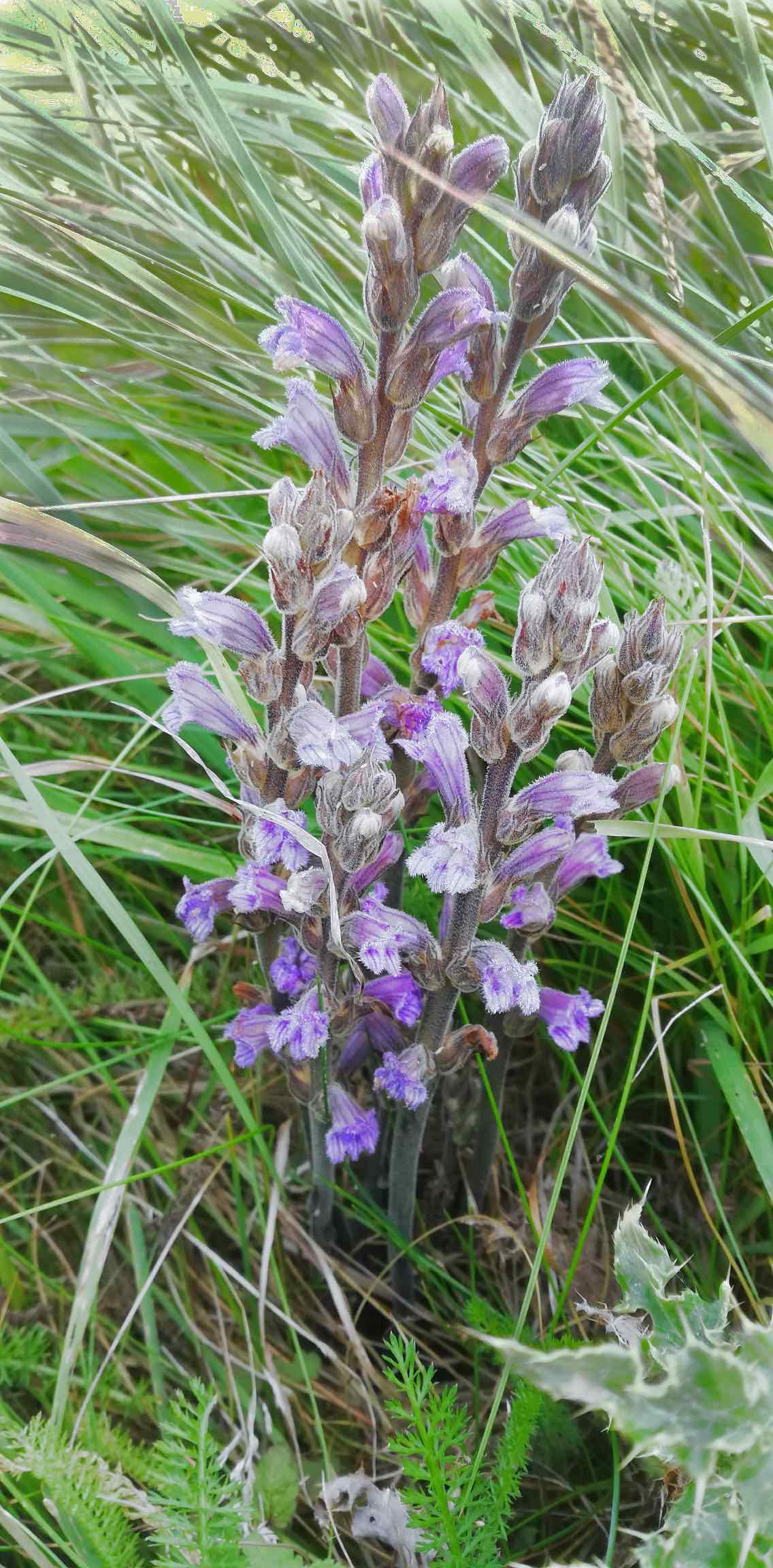
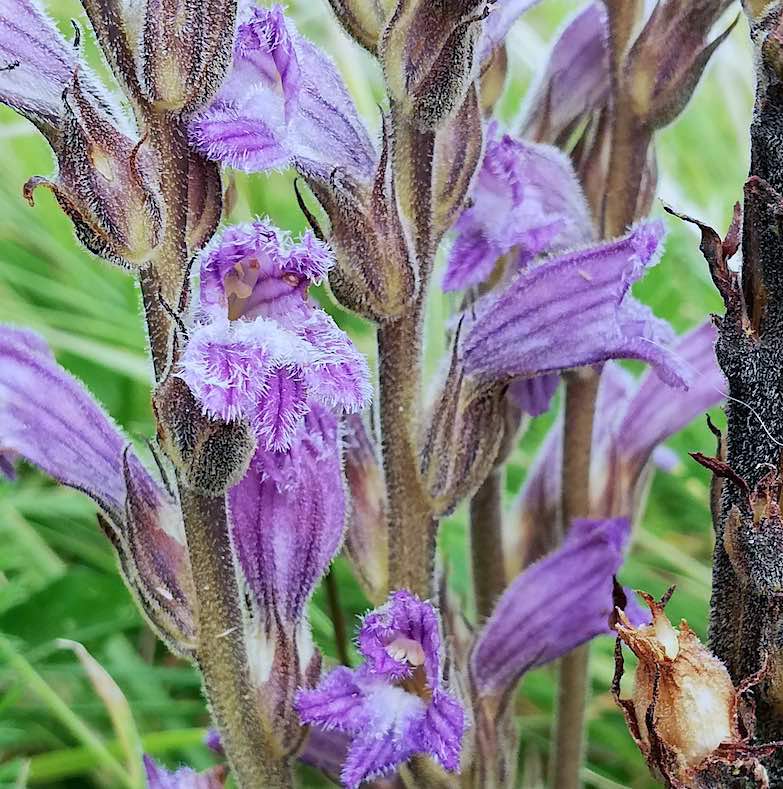
An outing to Sandscale Haws provided much of interest, including Coralroot Orchid Corallorhiza trifida. Round-leaved Wintergreen Pyrola rotundifolia was in fine flower. In a very exposed sandy slack Mike pointed out the fully convincing examples of Small-fruited Yellow-sedge Carex viridula, growing from a mat of a prostrate form of Variegated Horsetail Equisetum variegatum.
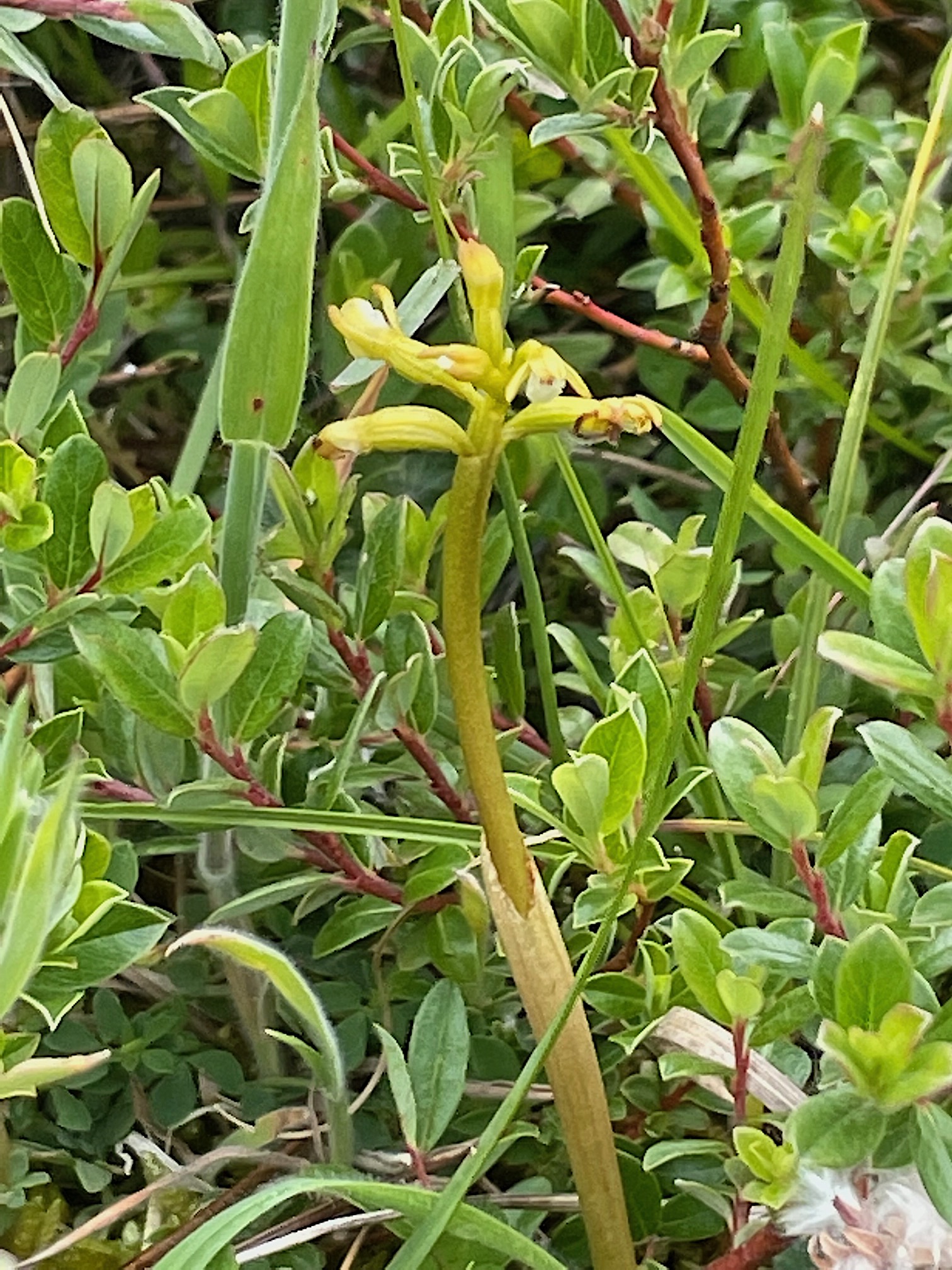
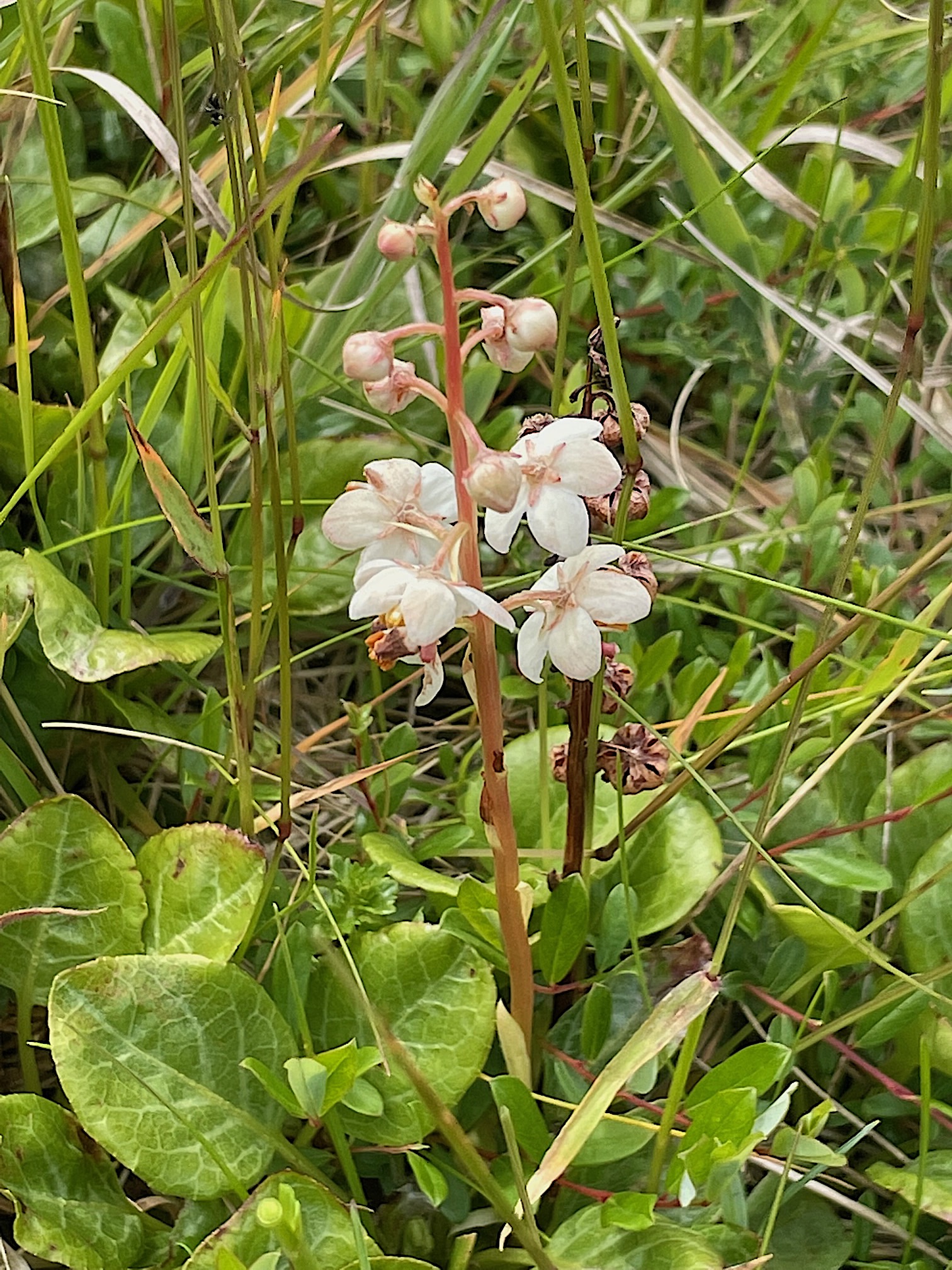
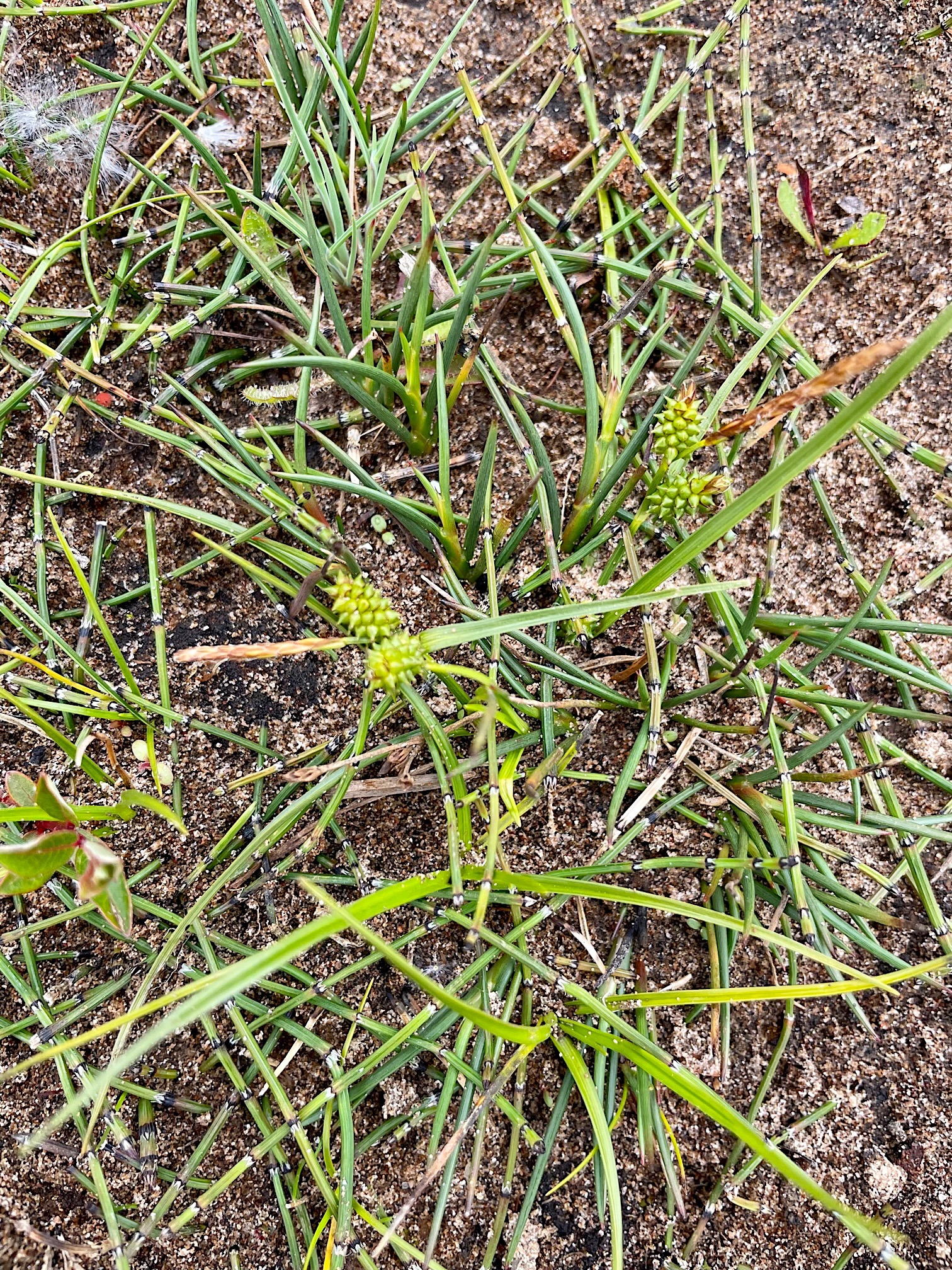
2021
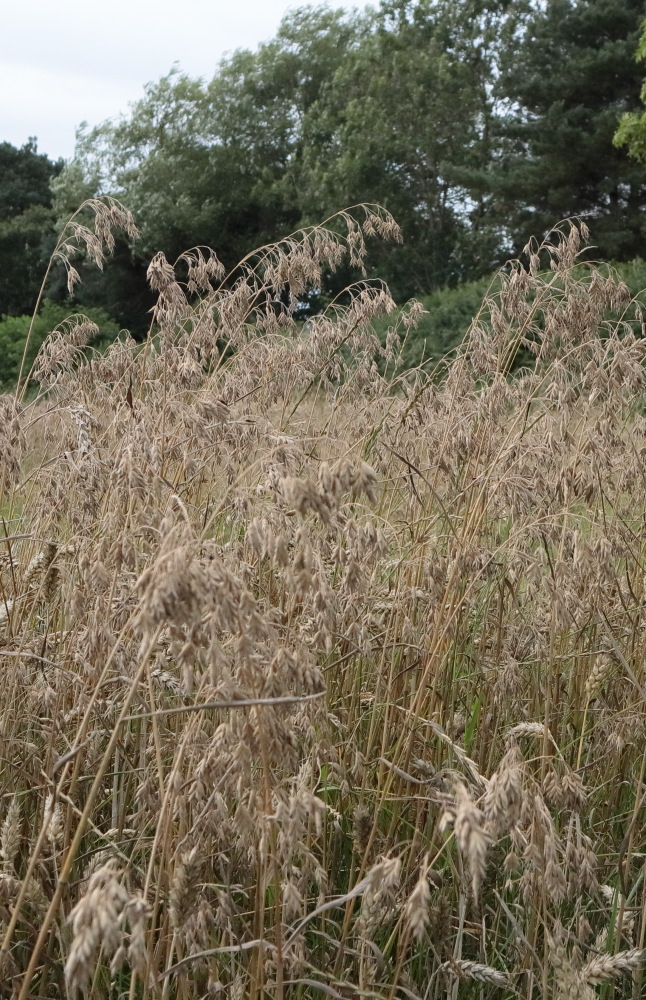
Roy Atkins had a very good find in August. Quite fortuitously, he peered over a gate into a wheat field near Walby, Carlisle, in case of any interesting weeds. He found Rye Brome Bromus secalinus abundant in the crop. The grass towers over the short-stalk wheat. Although common enough in most of S.E. England, and probably increasing, this is only the second Cumbrian record this century, after only five records in the two previous centuries!
David Benham sent a mouth-watering list of plants and photos from Tarn Syke, Sunbiggin, including Bird’s-eye Primrose Primula farinosa and Hair Sedge Carex capillaris.
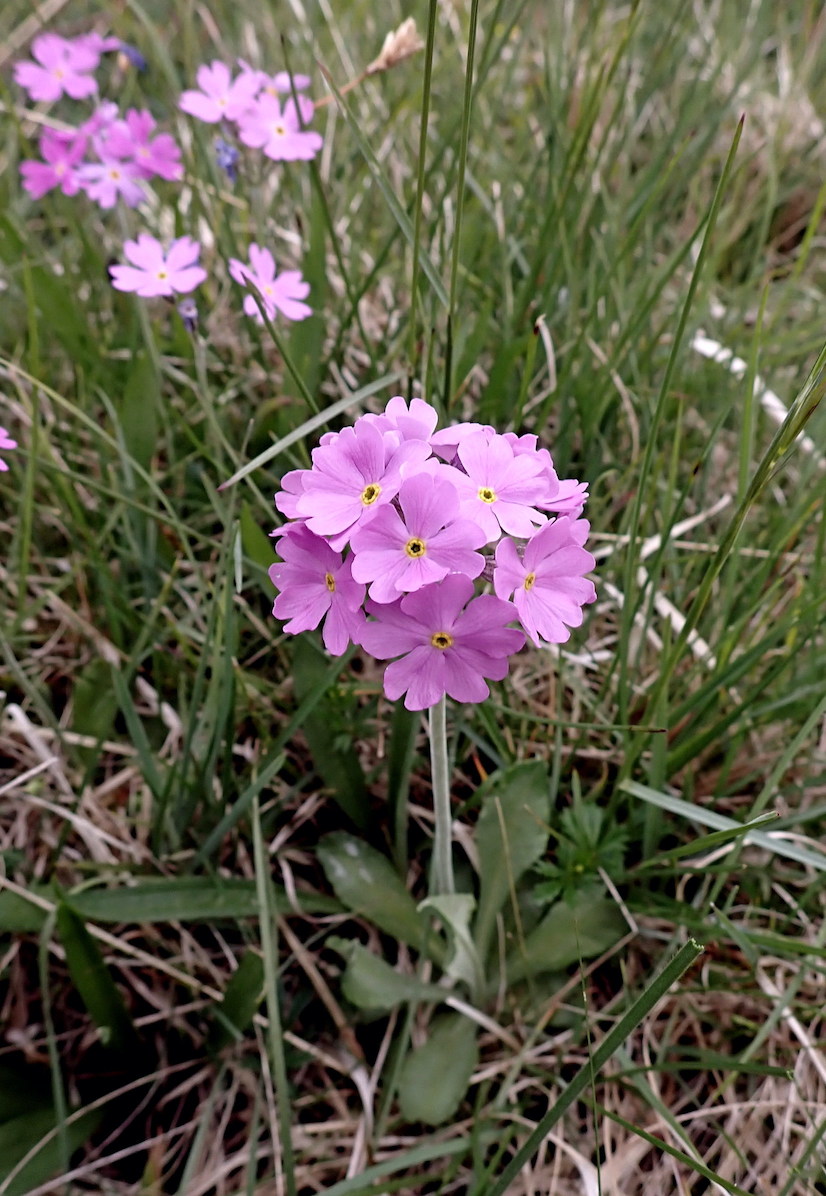
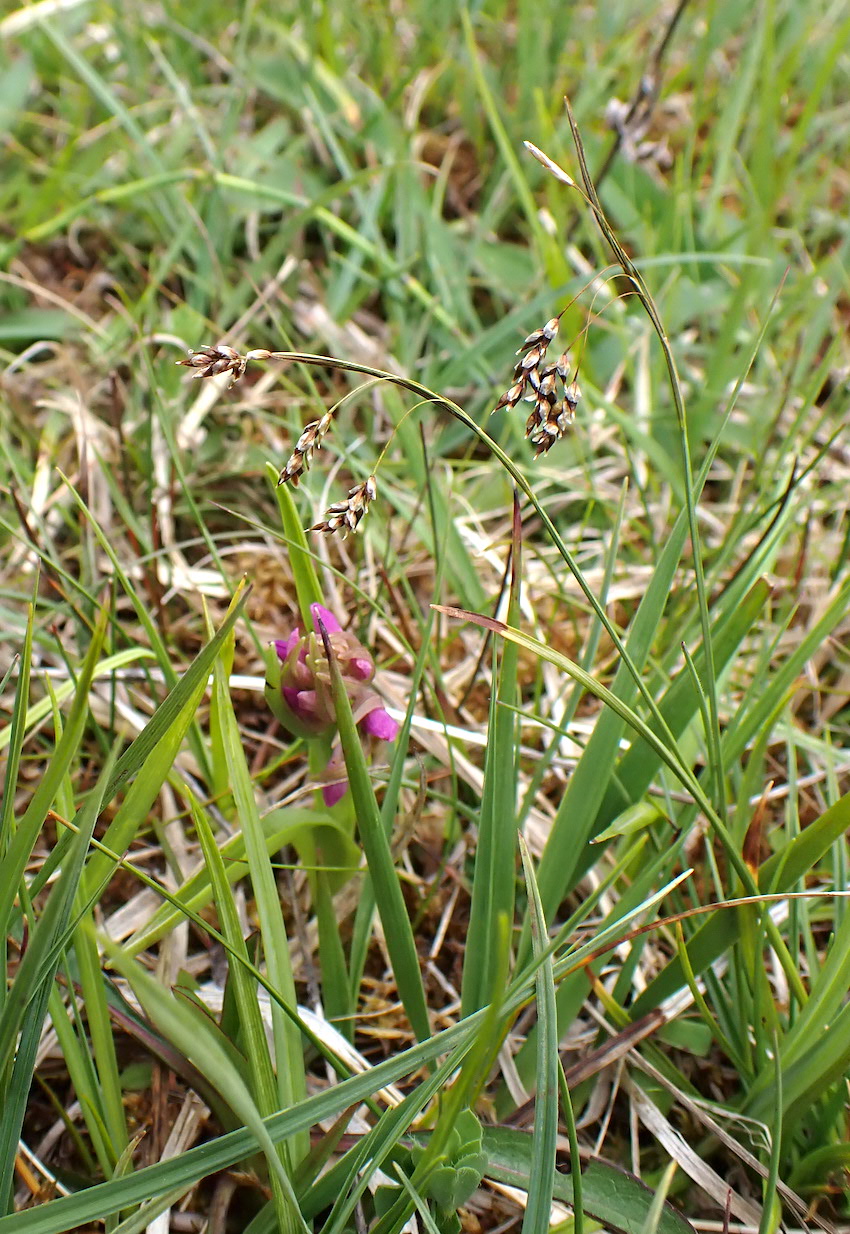
Rob Dove’s favourite finds were on a group trip to Butterburn Flow in the far north of the county. Top of the list were Bog-rosemary Andromeda polifolia and Great Sundew Drosera anglica. For Rob it was not only the flora at Butterburn but the location and its isolation in the far northern corner of Cumbria that made an impression.
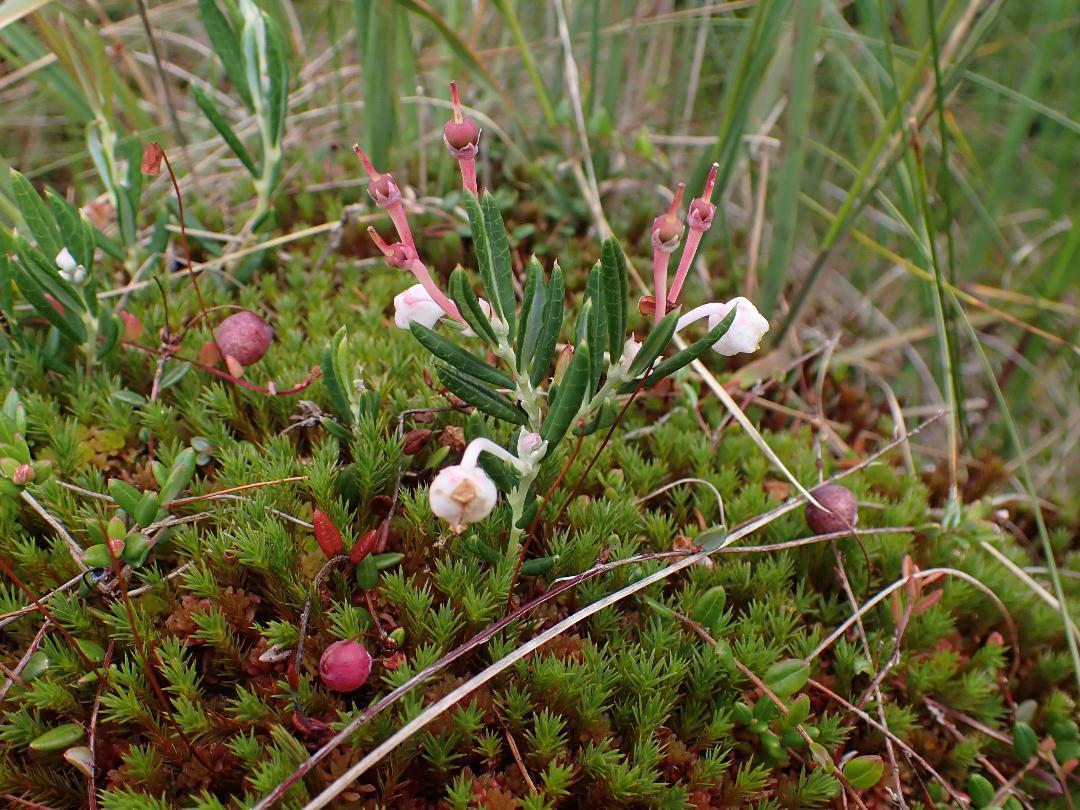
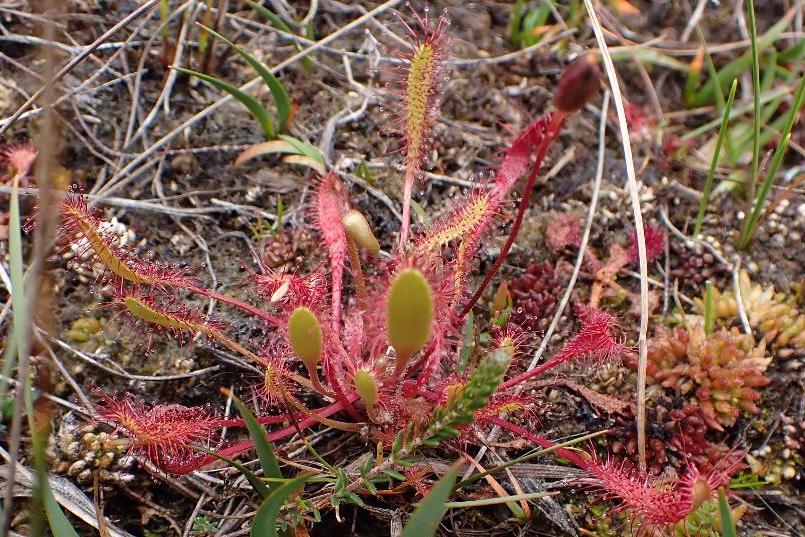
Trevor Lowis selected the last day of May for an excursion to Little Fell. He was rewarded with exquisite displays of both Spring Gentian and Alpine Forget-me-not Myosotis alpestris.
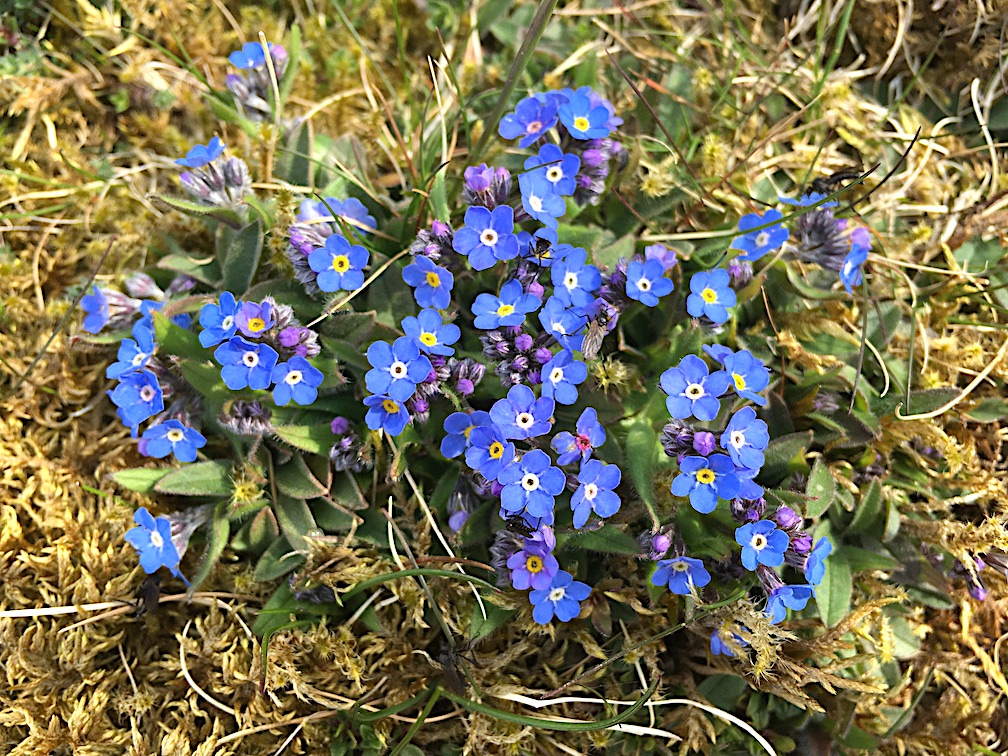
2020
The covid-19 restrictions impacted everyone’s activities in 2020, but a few interesting plants were found ‘close to home’.
Lynne Farrell surveyed Fingered Sedge Carex digitata in south Cumbria in known and some refound colonies.
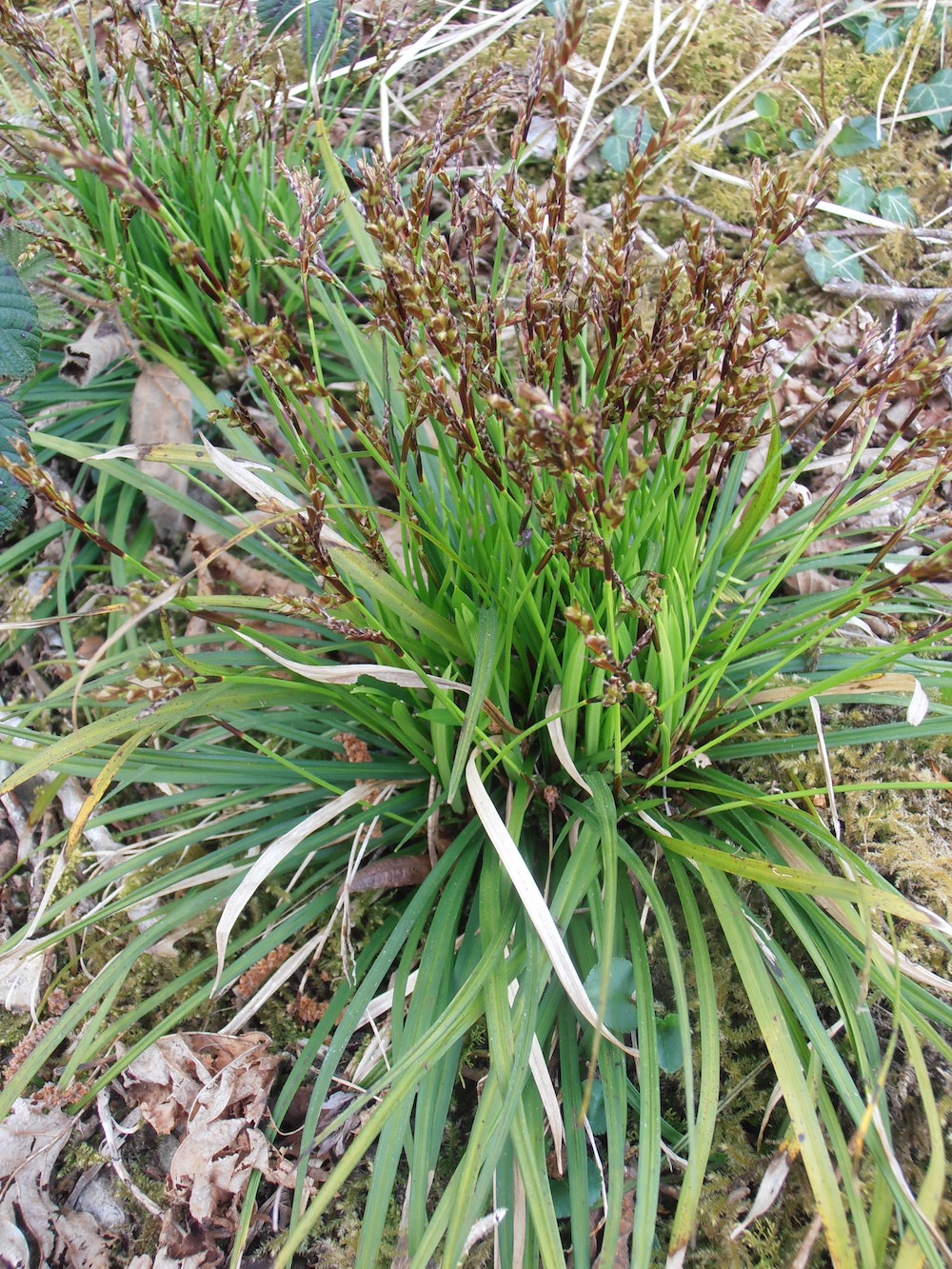
Shaggy-soldier Galinsoga quadriradiata was seen near Barrow-in-Furness by Betty King and David Benham. A South American alien, which crops up occcasionally in the county.
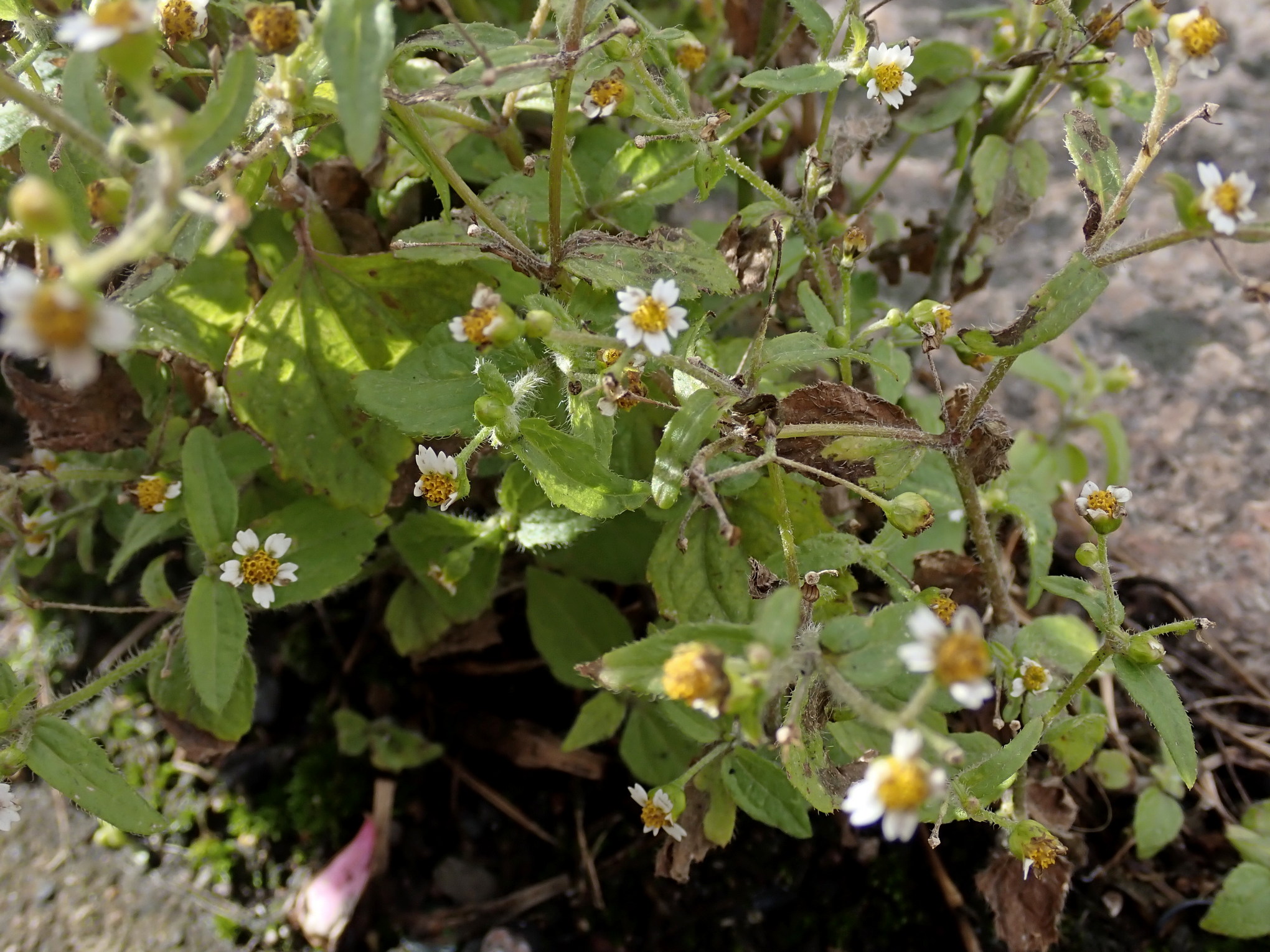
An excellent find was one made by Linda Robinson and Lois and Nigel Harbron near Gamblesby on the edge of the Pennines. Exploring the steep banks of Hazelrigg Beck, they came across good numbers of Betonica officinalis Betony and Genista tinctoria Dyer’s Greenweed – always good to see – but the highlight was the spotting by Nigel of two plants of Genista anglica Petty Whin, flowering and seeding. As Linda remarks, this species is now extremely rare in the Eden Valley with a few plants remaining only on the Wan Fell SSSI. In fact, in recent years G. anglica has declined dramatically in much of Britain, including Cumbria, largely as a result of changed farming and land management practices, so this new site was a particularly exciting and valuable discovery.
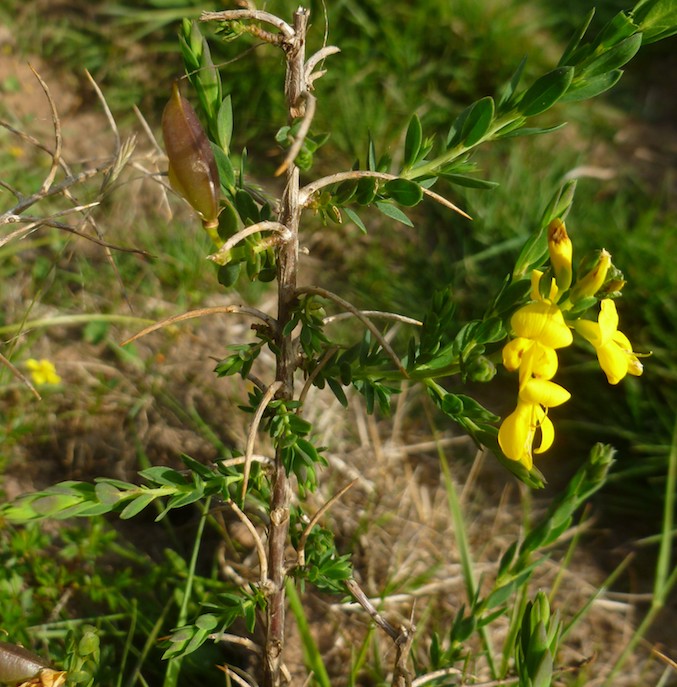
The best record for the season was that of Round-leaved Winter-green Pyrola rotundifolia subsp. rotundifolia found by an entomological friend of Lynne Farrell, near Whitbarrow and confirmed by Lynne. This subspecies is extremely rare in Cumbria; indeed this is the first record for the current century!
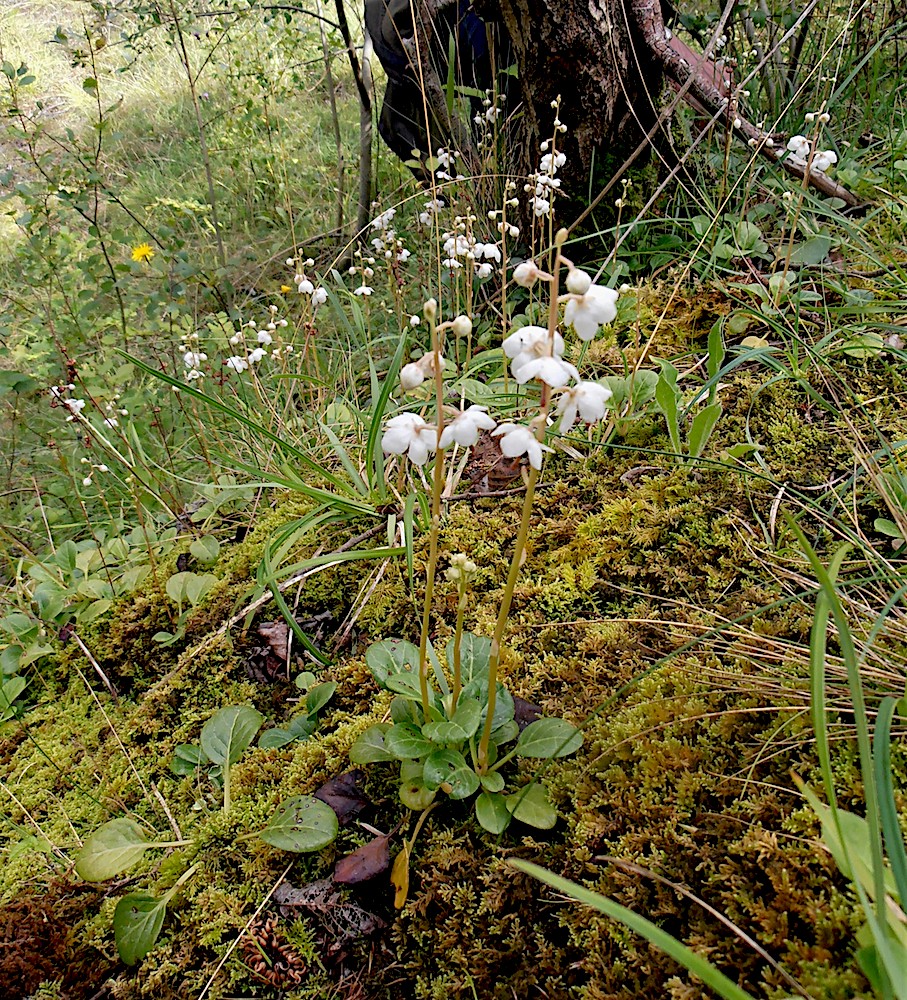
Lynne was particularly pleased to see a fine stand of Broad-leaved Ragwort Senecio sarracenicus near Crosby Garrett. In Cumbria this Central European alien is very much at home along the River Eden, but much more scattered elsewhere.
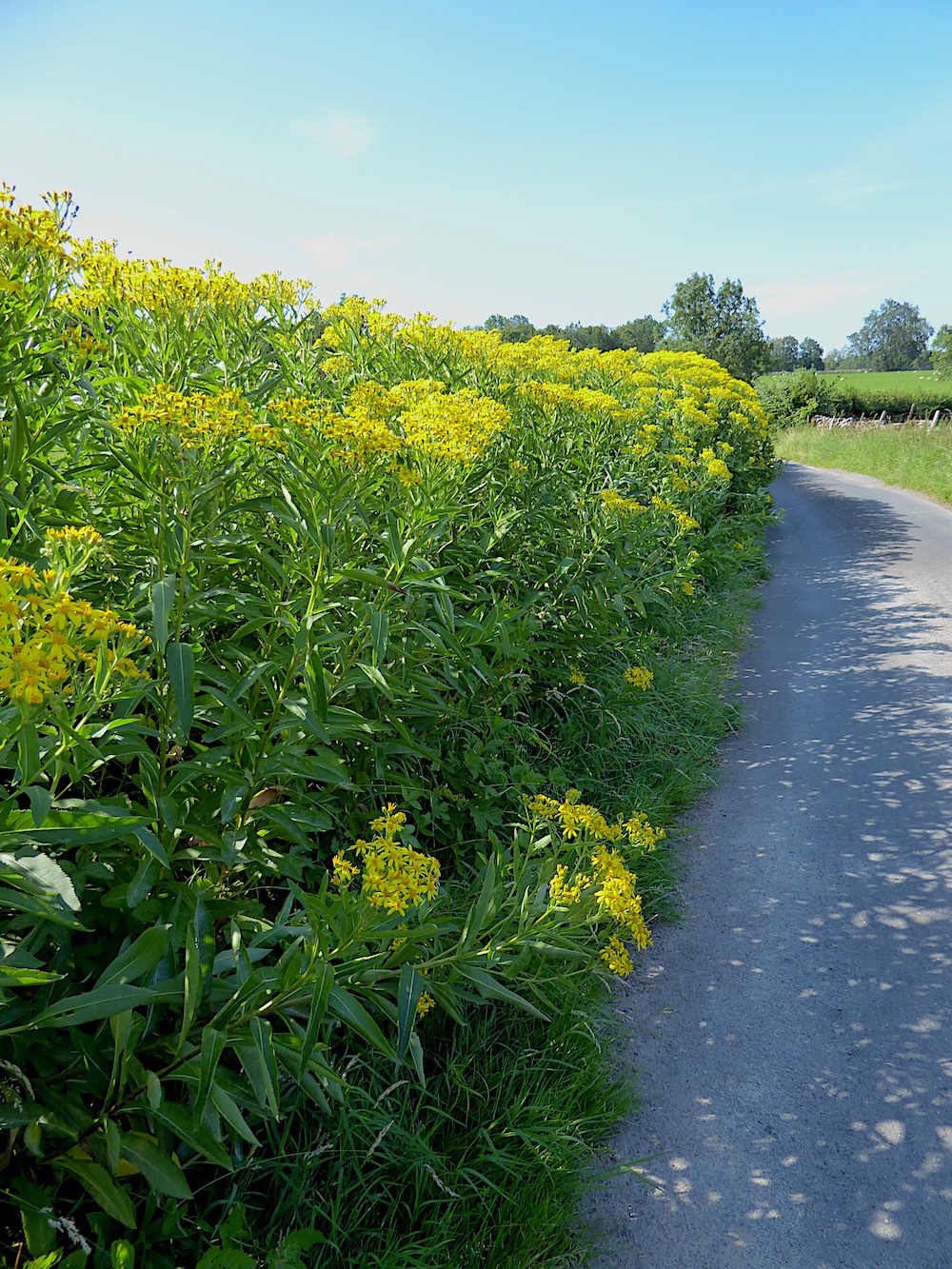
2019
Some highlights of the 2019 season:
Phill had a good find in October of Grass Vetchling Lathyrus nissolia in Ennerdale Forest, NY147142: several plants on a forestry track, only the fourth record for the county this century.
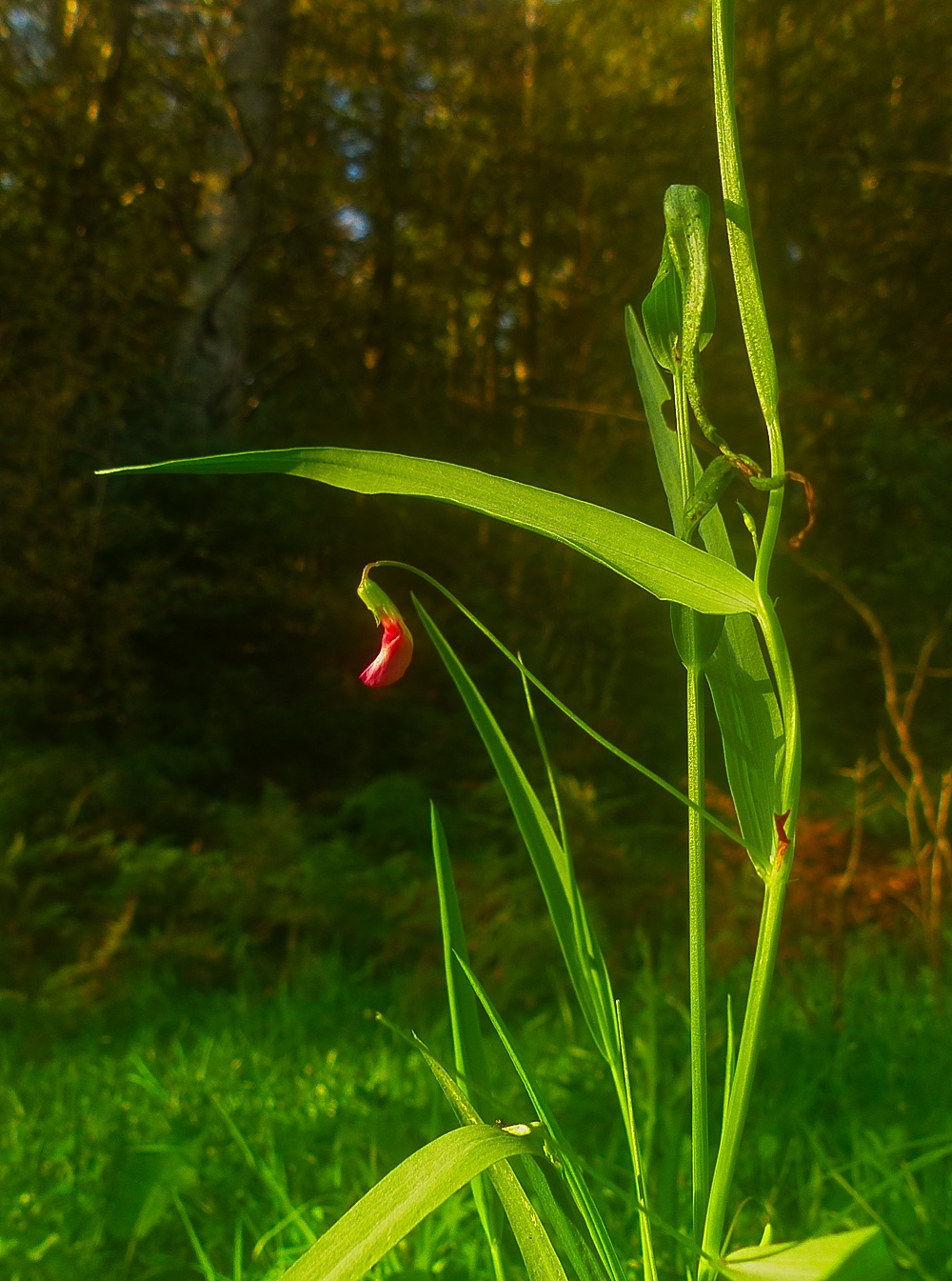
In August, Phill, Helen and Kirsten made a very significant discovery (below) of Northern Spike-rush Eleocharis mamillata ssp. austriaca, in a flooded quarry above Bewcastle (NY59527669). It is now an extremely rare species in Cumbria, with a few plants remaining along the River Irthing. This is the first record in the county of this ephemeral colonist away from riverbanks, although some of the larger colonies elsewhere, e.g. in Ribblesdale, have occurred in old quarries and gravelpits.
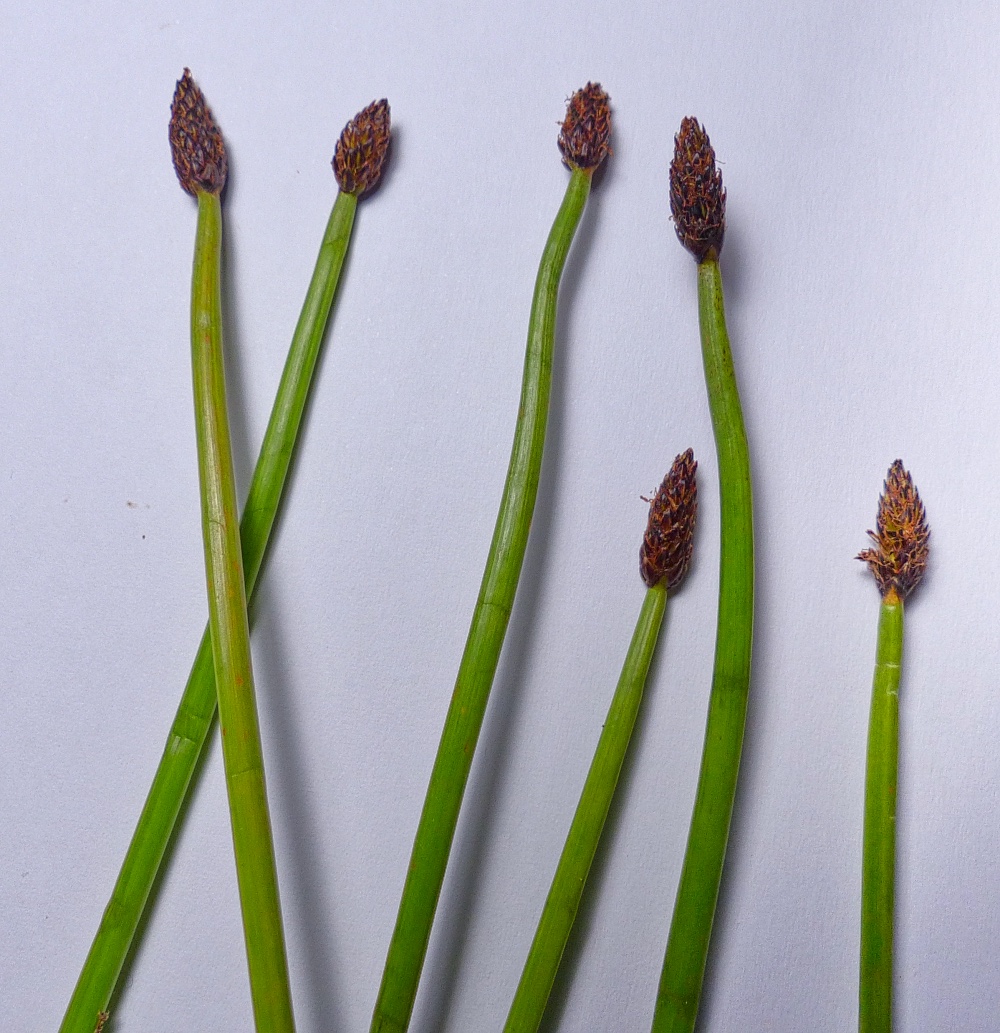
In June, Phill found the attractive little Fern-grass Catapodium rigidum in a new hectad quite a long way from the nearest sites, on Denton Fell (NY62706250).
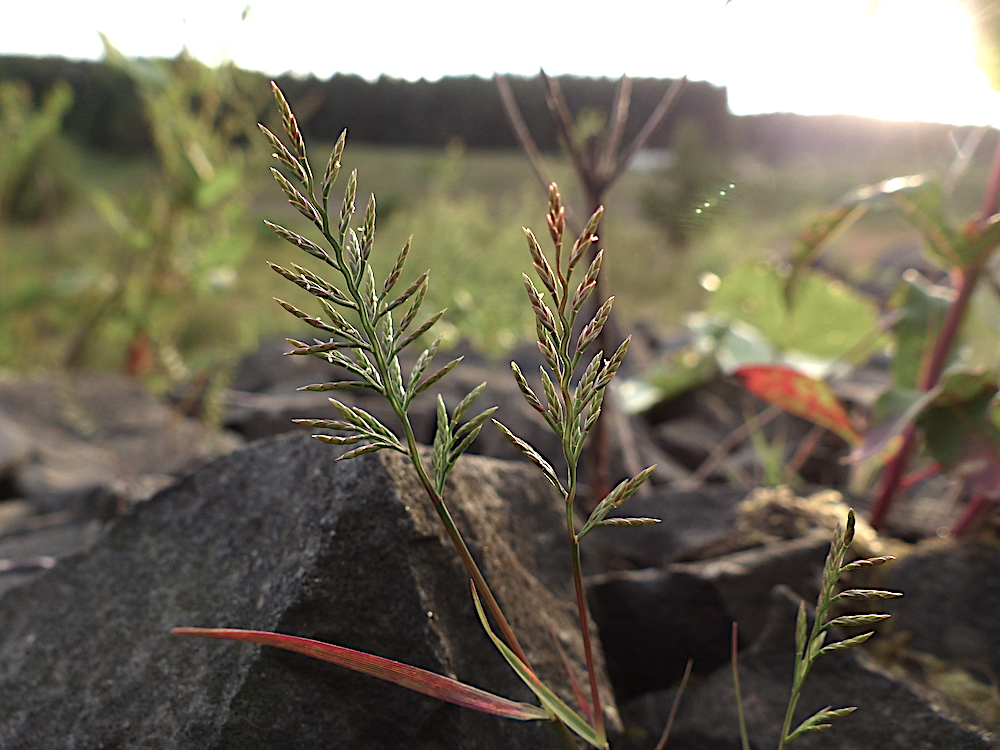
In August, Roy Atkins found a new site for Green-flowered Helleborine Epipactis phyllanthes at a fourth site of this ‘recent colonist’ in north Cumbria. About 40 plants were already in fruit when found.
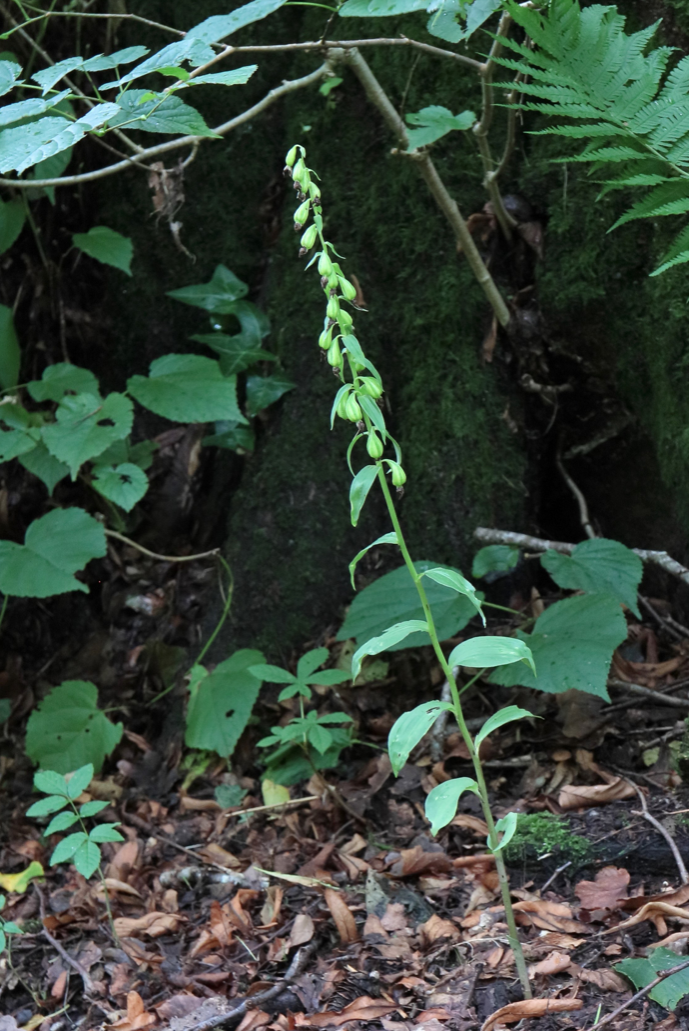
A re-routed stretch of the B6263 between Wetheral and Warwick Bridge had large areas of bare soil on verges, and over the length of ‘old road’, alongside the River Eden. In late summer this became a veritable ‘cornucopia’ of unusual annuals. Although application of ‘seed- mixes’ would be anticipated, the disparate range of species which emerged seemed most unexpected, either as contaminants of grass-seed, or in ‘wild-flower’ mixes. There were new vice-county records, and many species hardly known in north Cumbria.
Enquiries with ‘relevant authorities’ after several months brought a response to the effect that imported seed had (apparently) not been utilised. (photos Jeremy Roberts)
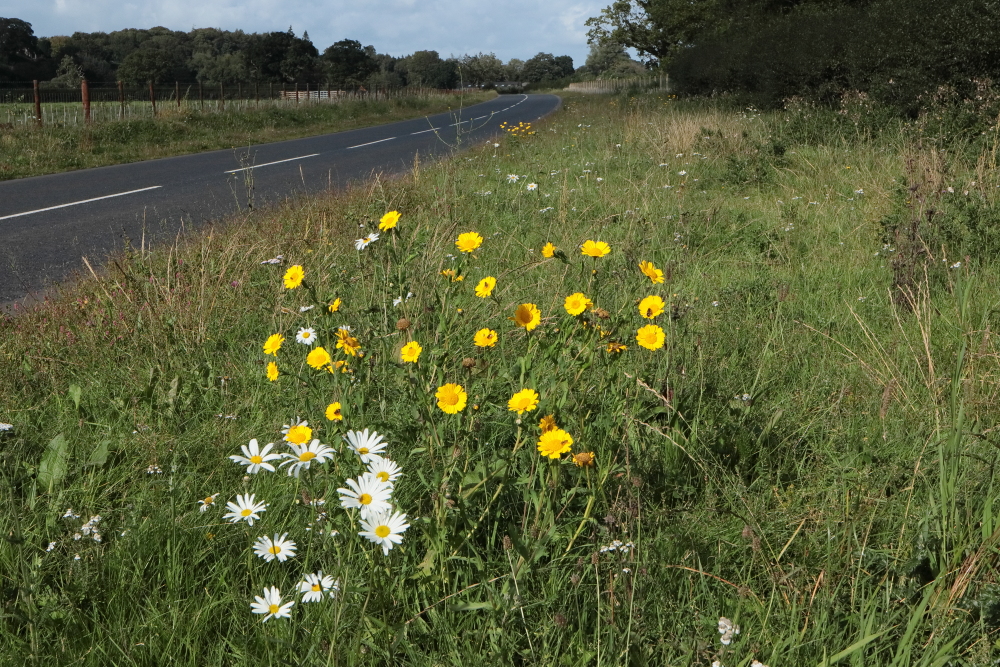
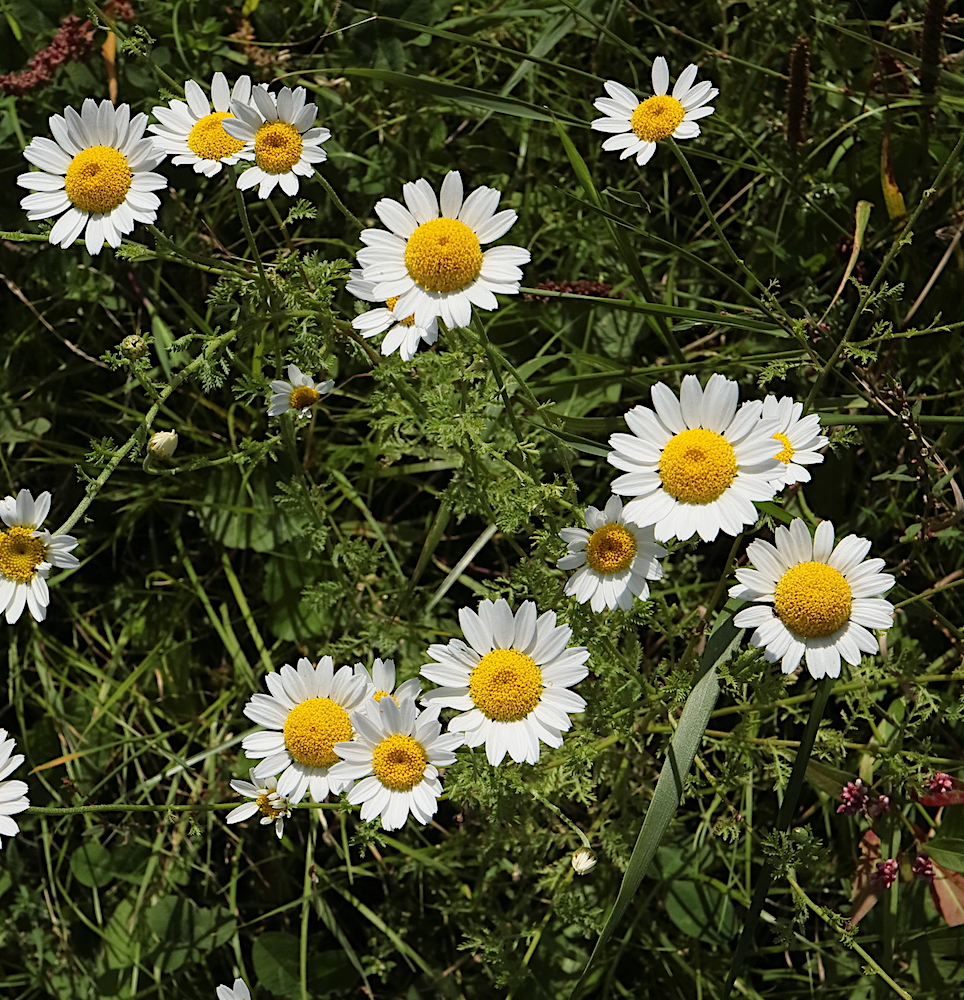
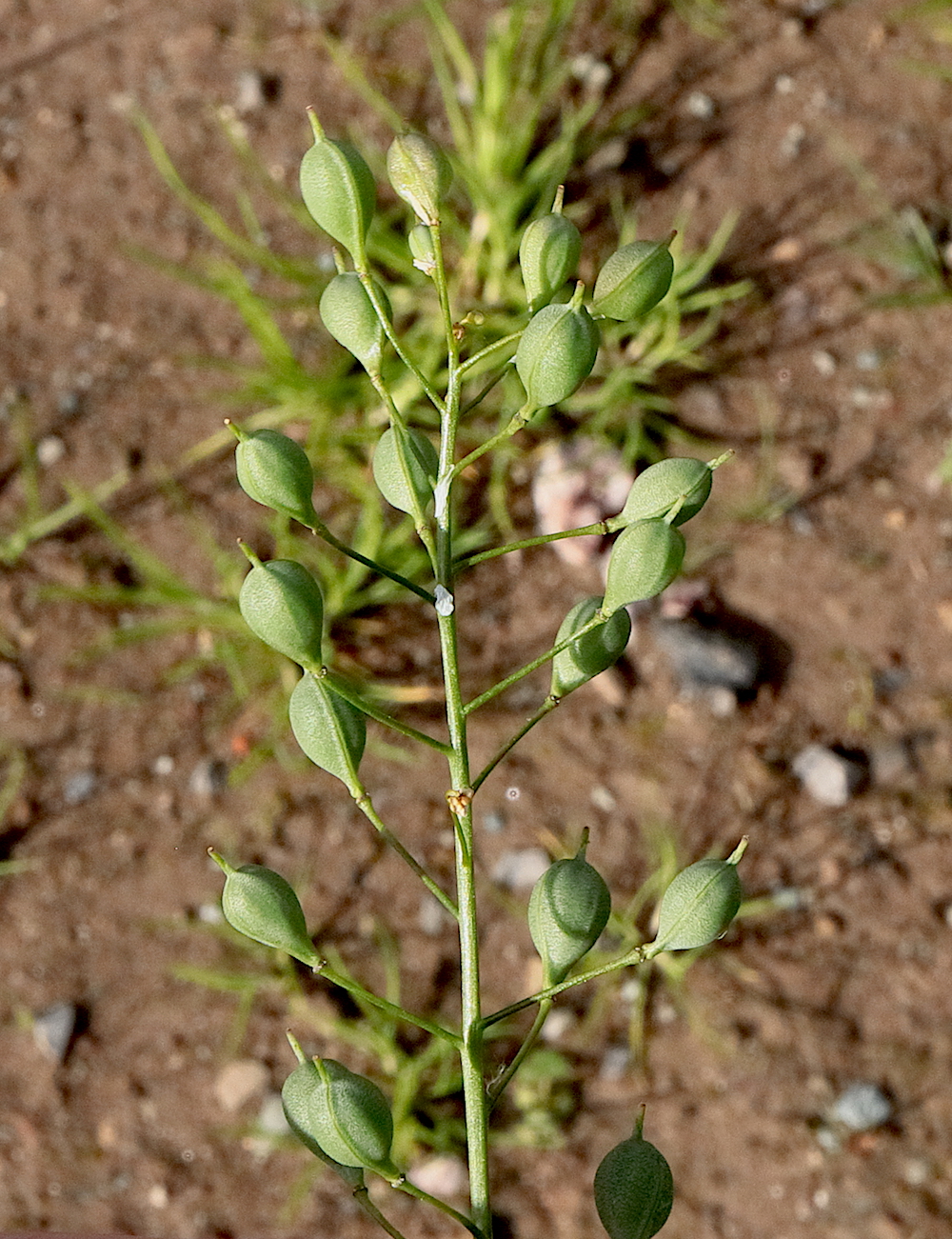
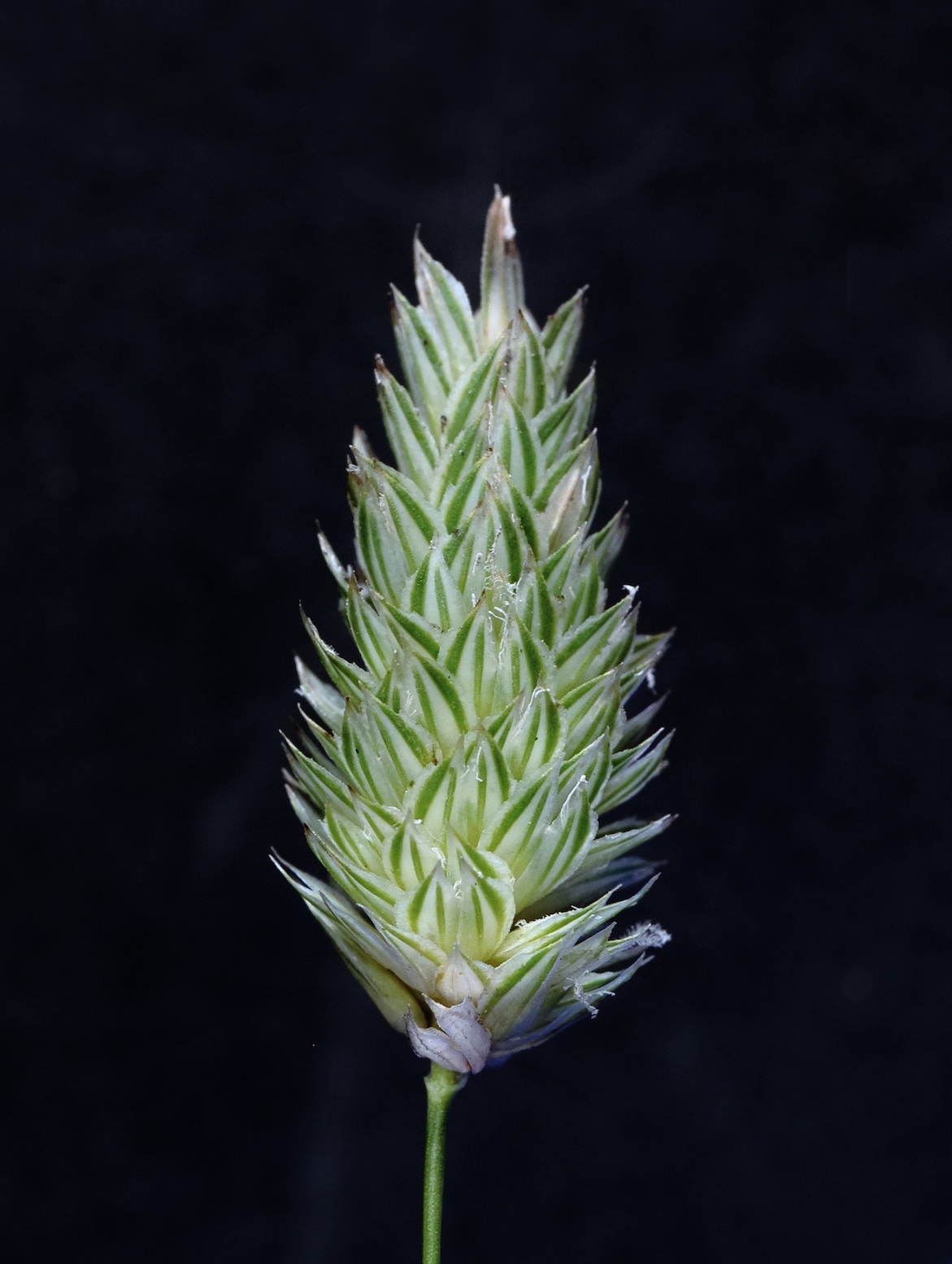
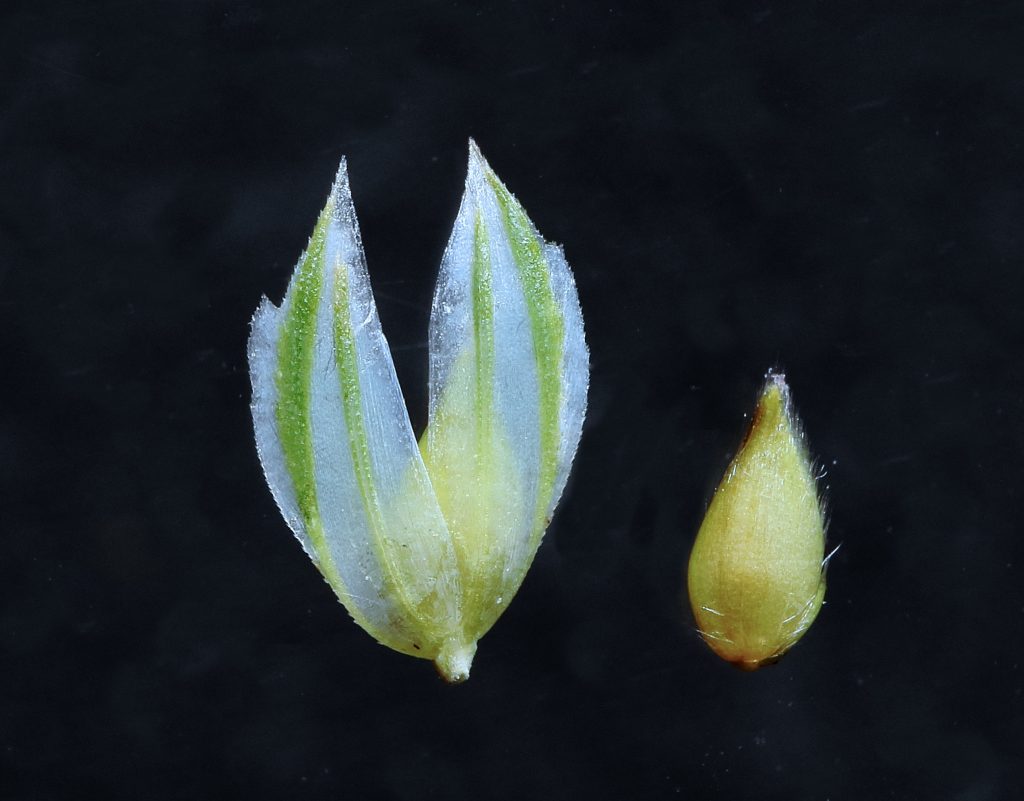
In May, Jeremy came across many hundreds of a curious small plant in muddy hollows along a cattle-trampled laneside near Moorthwaite (NY5050). This was Mousetail Myosurus minimus, a declining, somewhat ephemeral, arable weed of muddy open sites in the farmed landscape.
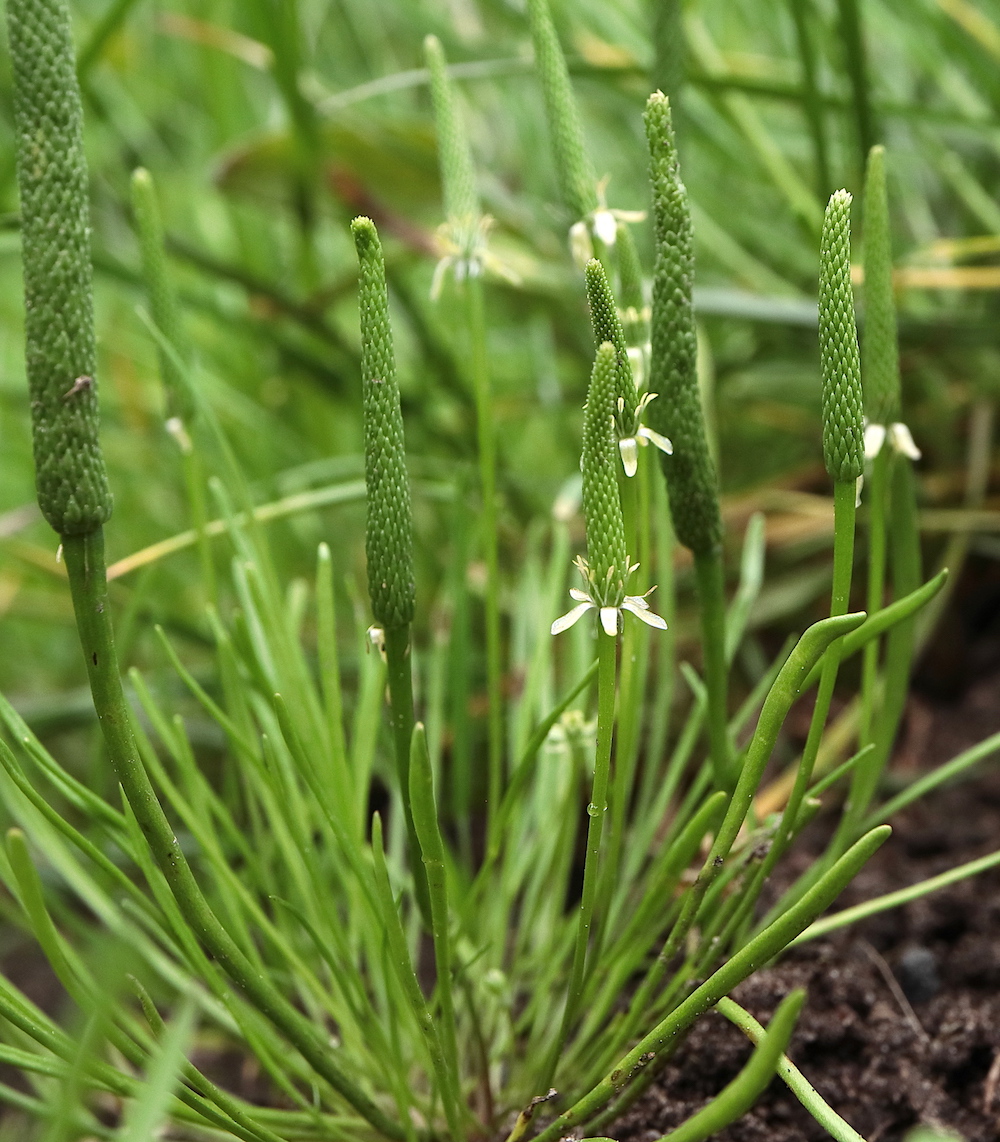
There were several clusters of plants, each with numerous leafless flower-stalks upon ascending leafless stems, and rosettes of long narrow leaves. The whole suggested miniature bright-green Sea Plantains Plantago maritima… until the ring of pale petals below each ‘spike’ was seen. So the long ‘spike’ was in fact not a tight cluster of individual flowers (as in plantains), but each stem was terminated by a single flower, the ‘spike’ being an extremely elongated receptacle (as in the red ‘flesh’ of a strawberry) with hundreds of achenes.
The few remaining UK colonies of Mousetail are almost entirely in southeast England. The species has only three previous records in the county, all of small populations. The most recent occurrence was of a colony of up to twelve plants on a roadside in Spadeadam M.O.D. range, 2004–6, found by Helen Brown and the late Jean Parker.
A most remarkable find in May by Stuart Colgate was of a small stand of Tufted Loosestrife Lysimachia thyrsiflora in a patch of wet woodland dominated by willows, Reed Canary-grass, and Purple-loosestrife. It was found on private land in the Rayrigg area of Lake Windermere in monad SD4097.
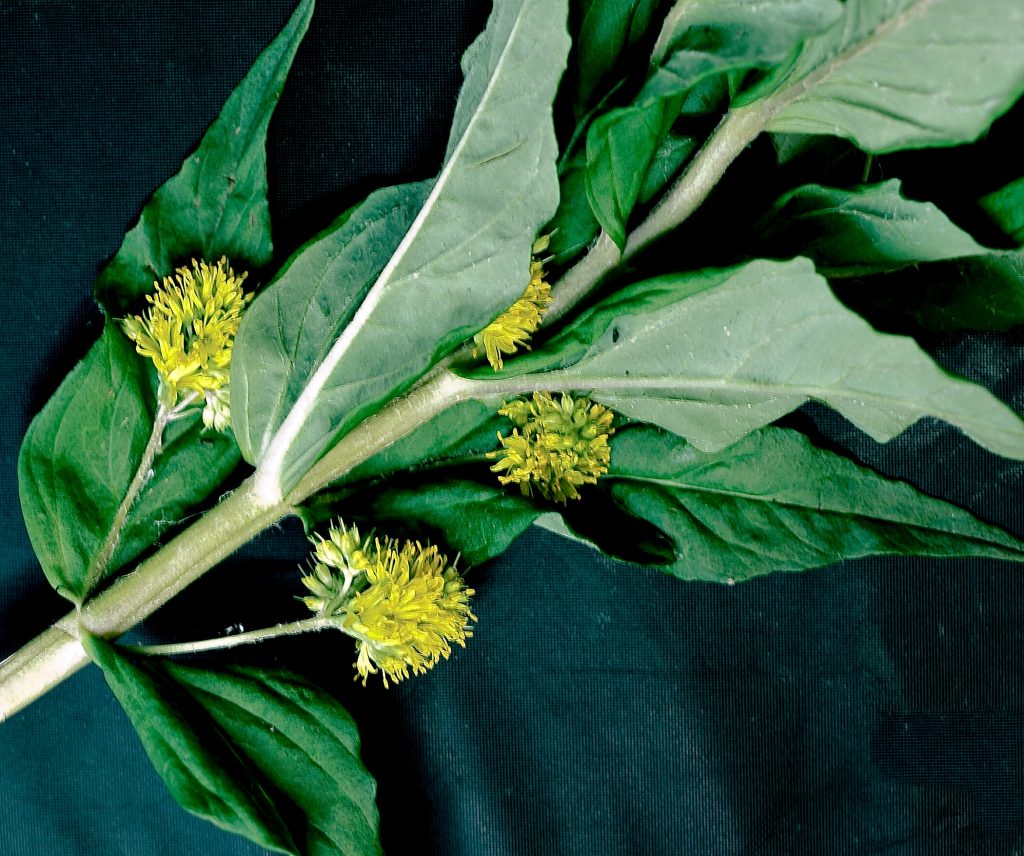
The species has a curious UK distribution, matched by few other plants. It is regarded as native in many sites across the Central Lowlands of Scotland and a very few in N.E. Yorkshire. Its location by Windermere is entirely in keeping with the species’ preferred habitats. It seems not to be often cultivated, but there are scattered sites across England south of the native range of presumed introductions or escapes. With just two previous county records – a single, old, occurrence of a presumed introduction and a known recent planting – the status of the plant here is unclear.
2018
The most striking find in 2018 was probably the small colony of Dwarf Willow, Salix herbacea, on boulders by Wast Water, on the Flora of Cumbria field-meeting in Wasdale on 4th June. Found by Phill Brown and his team, and spotted first by Karl Bartlett, the patch is at only 64 metres O.D., and obviously of considerable, or even great, age.
This species thrives in very exposed conditions on the ridges and rocky flanks of Lakeland, and to a lesser extant in cracks on cliffs, typically at far higher altitudes. A Flora of Cumbria (1997) gives ‘640 metres’ at Cautley Crag as the lowest altitude in the county, and it occurs at similar altitudes on Ingleborough and Penyghent in the Yorkshire Dales.
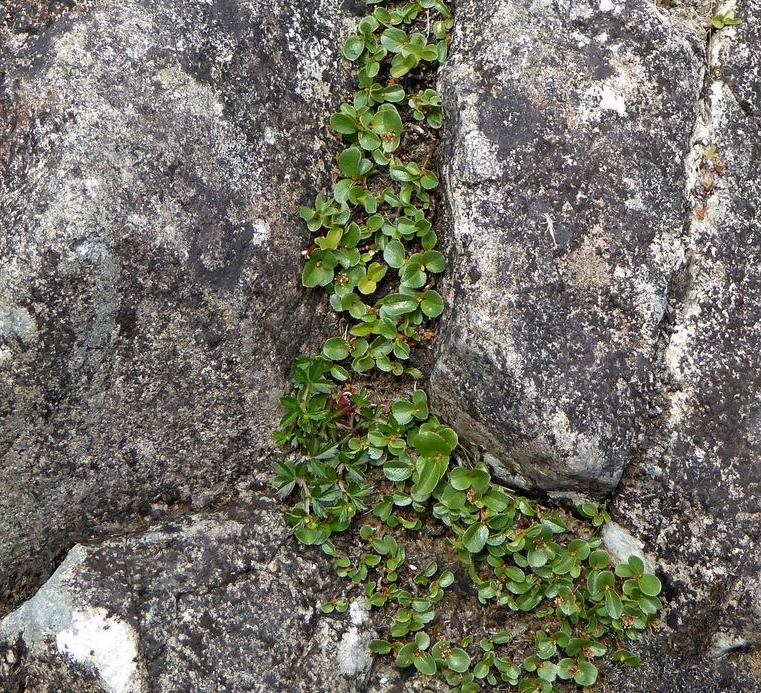
Two teams found numbers of small Royal Ferns, Osmunda regalis, on, or amongst, boulders along the shore. Although small, a proportion of plants seemed of some age, perhaps suffering from grazing here, causing dwarfing.
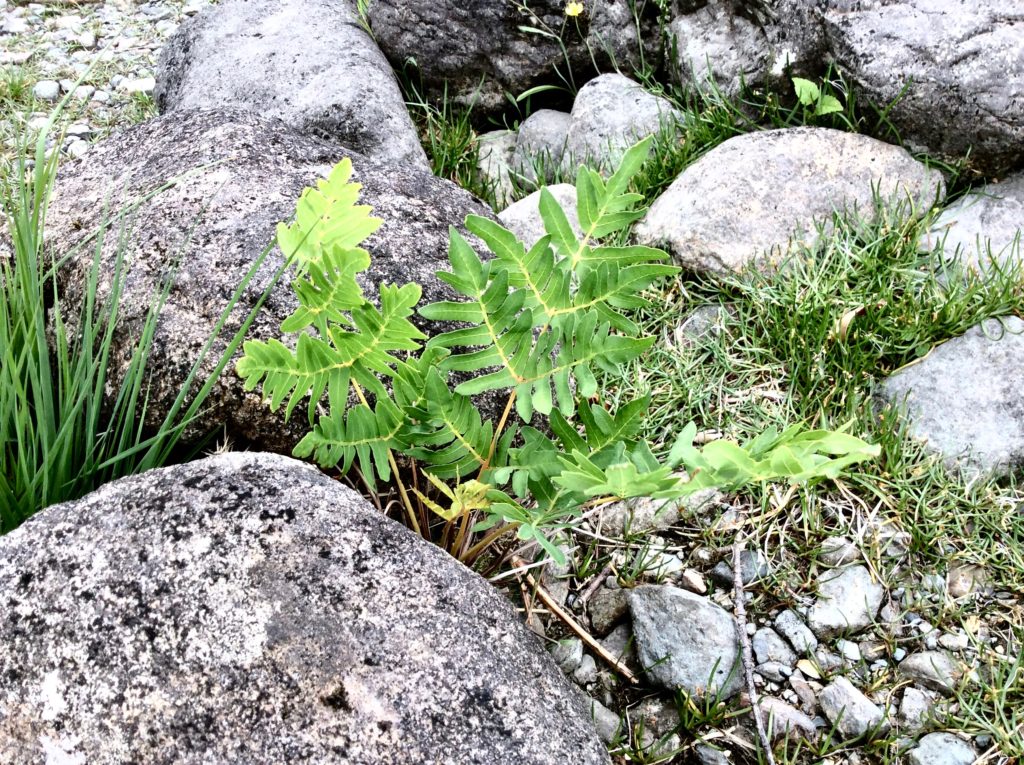
The annual Small Water-pepper, Persicaria minor, seemed to have a good season, and populations in several places on the gravel shores of Ullswater were much larger than is usual.
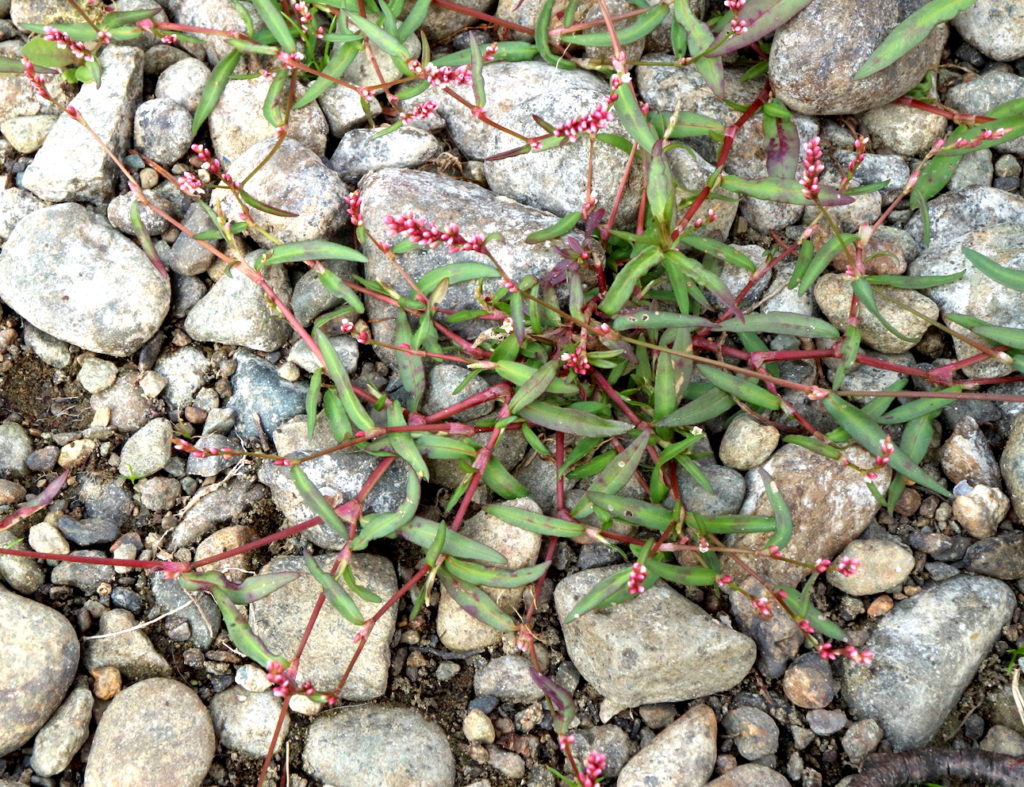
Somewhat untidy, distinctly fleeting in appearance, but apparently spreading north, is the Lesser Chickweed, Stellaria pallida, found by Phill as he recorded plants around the Southwaite Services of the M6.
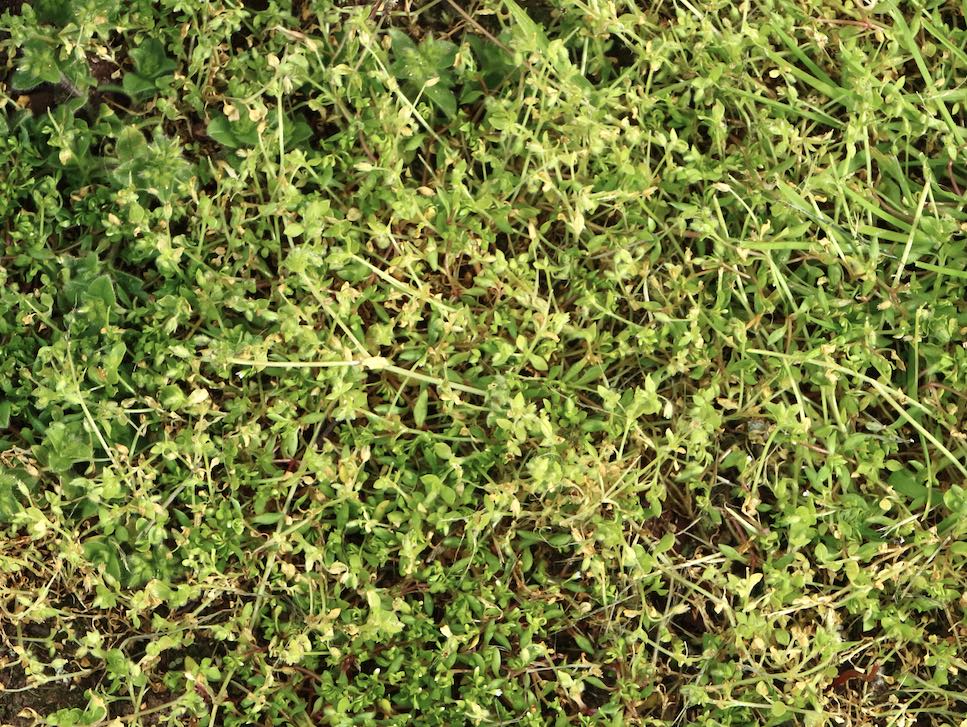
Lesser Twayblade, Neottia cordata, had a good season on Armboth Fell.
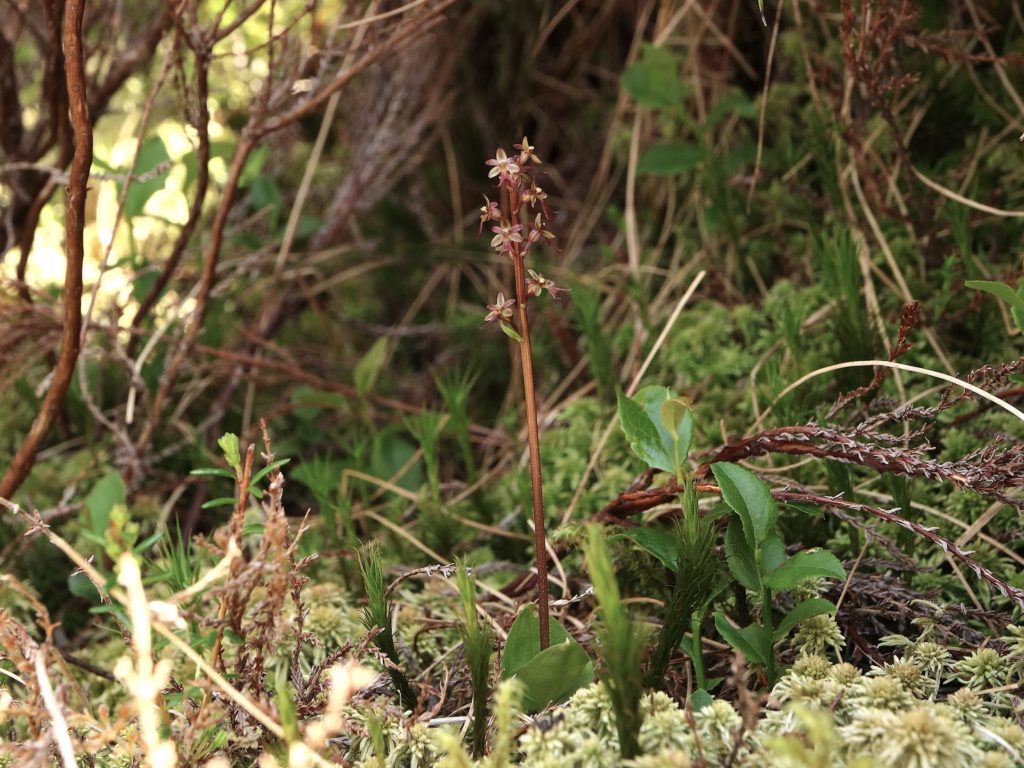
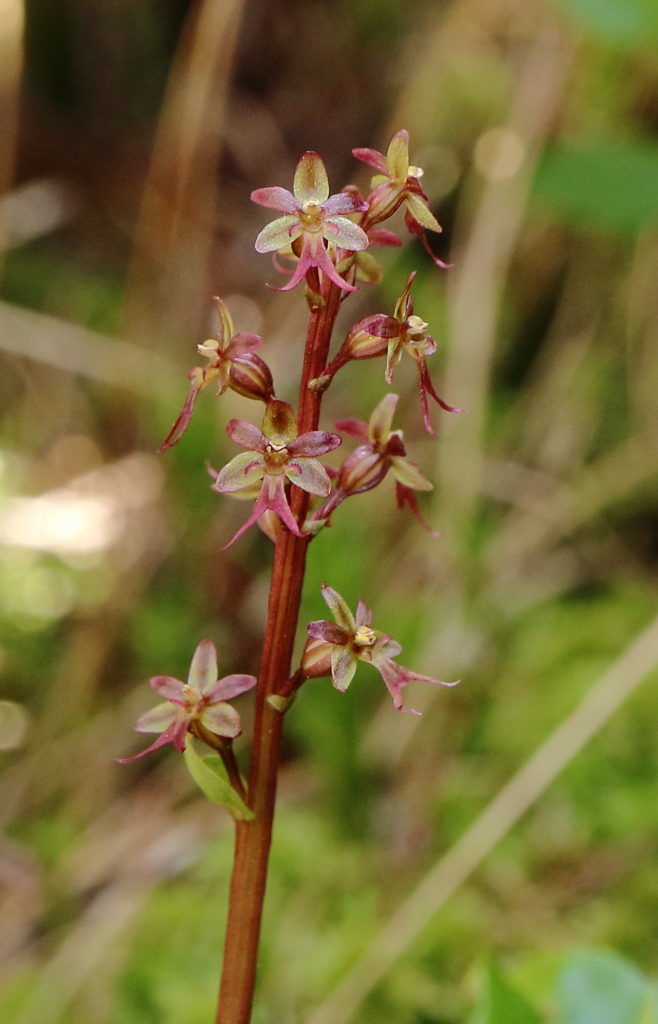
Caz Walker came upon a huge patch of Alpine Saw-wort, Saussurea alpina, on Blea Water Crags, emerging in May; it was in full flower – probably the best patch in Lakeland – in July.
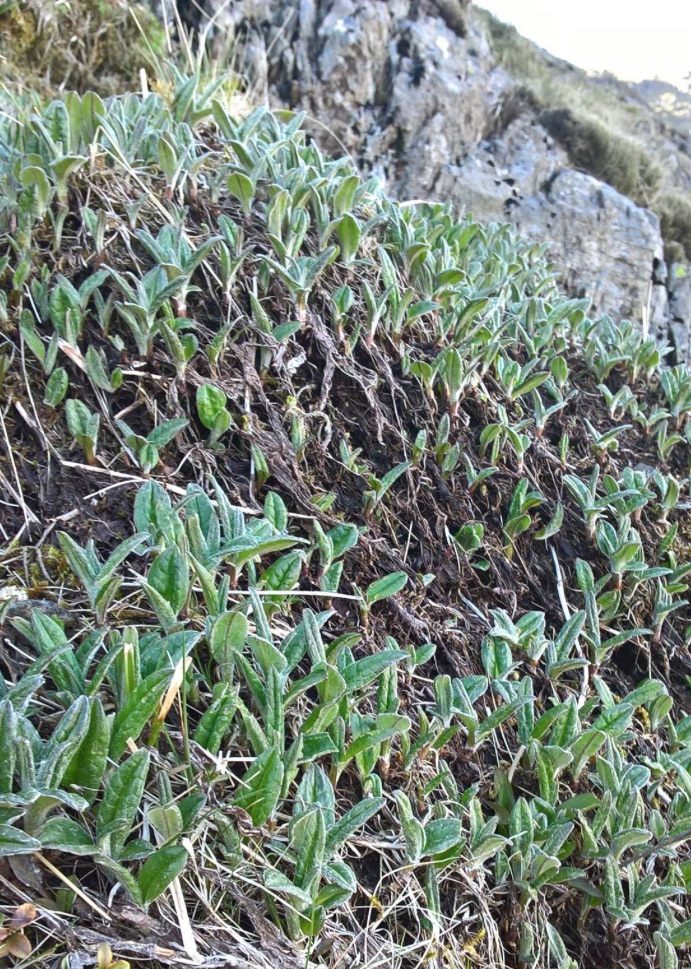
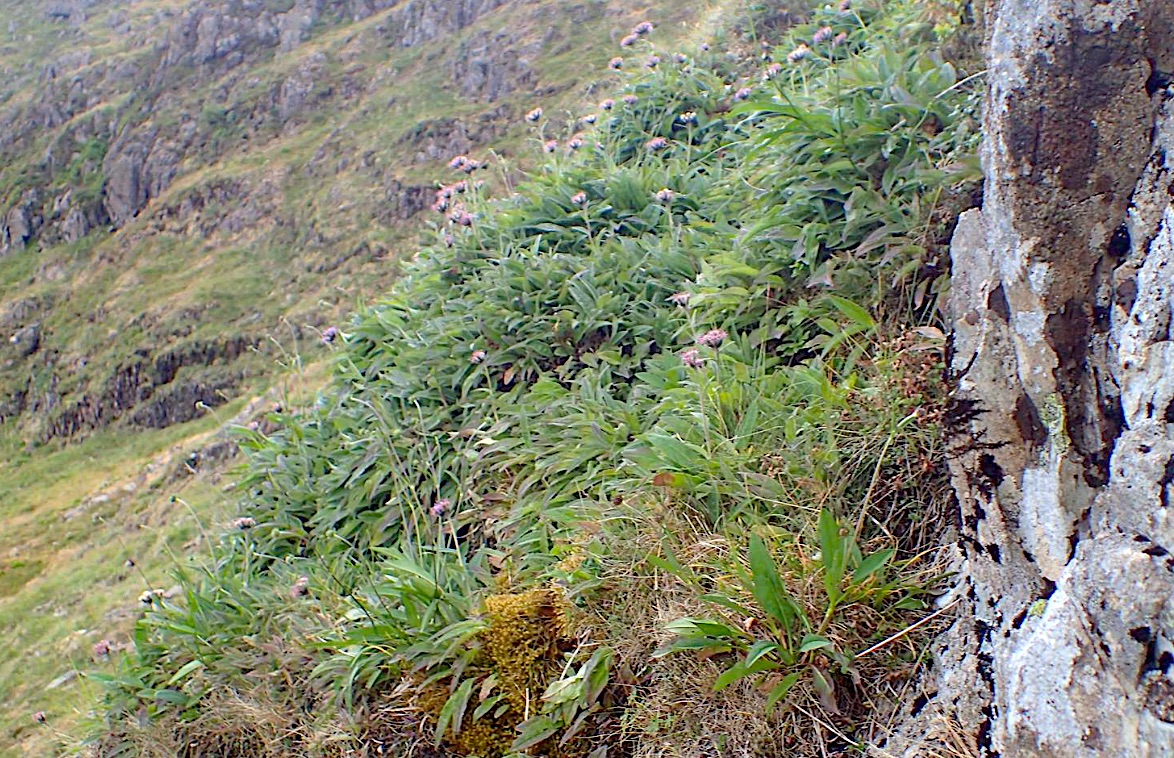
Two patches of Yellow Dodder, Cuscuta campestris, developed with great speed in a garden at Wetheral Pasture in September, throttling patches of Calendula. It is a first record for the county. It probably arrived with the Goldfinch-favoured bird-seed ‘Niger’, Guizotia abyssinica.
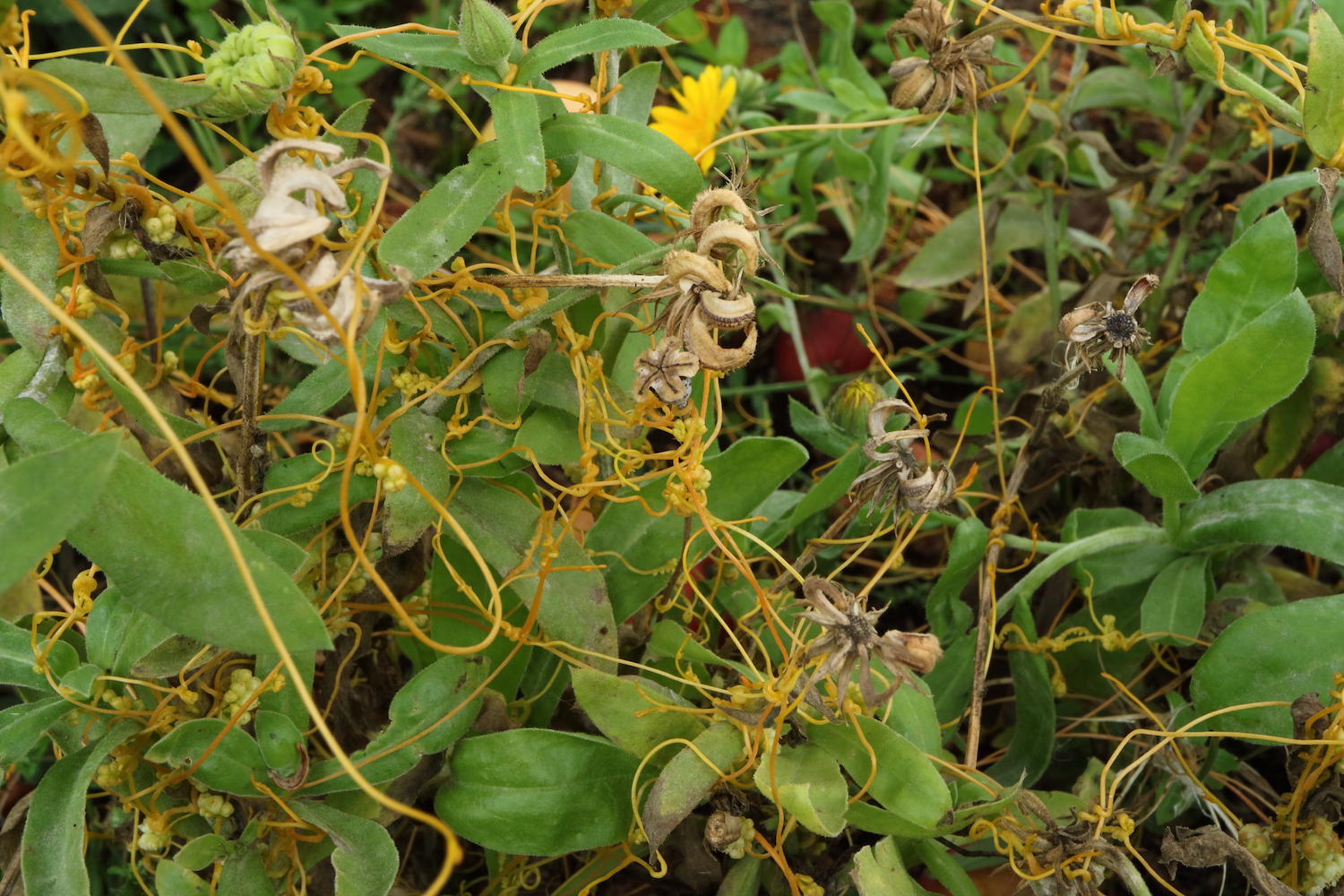
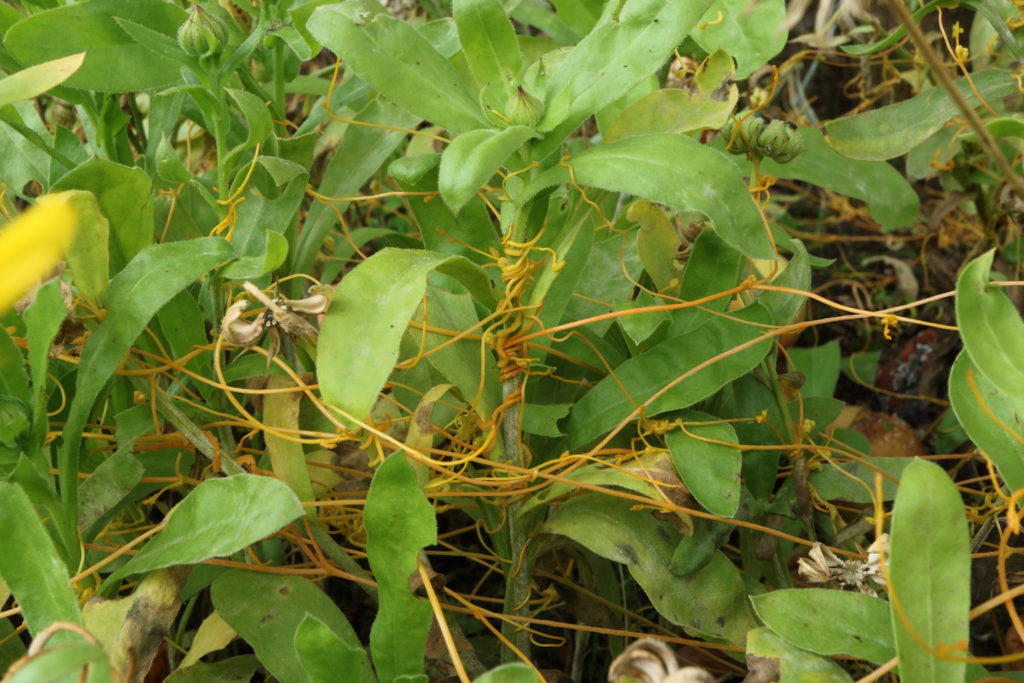
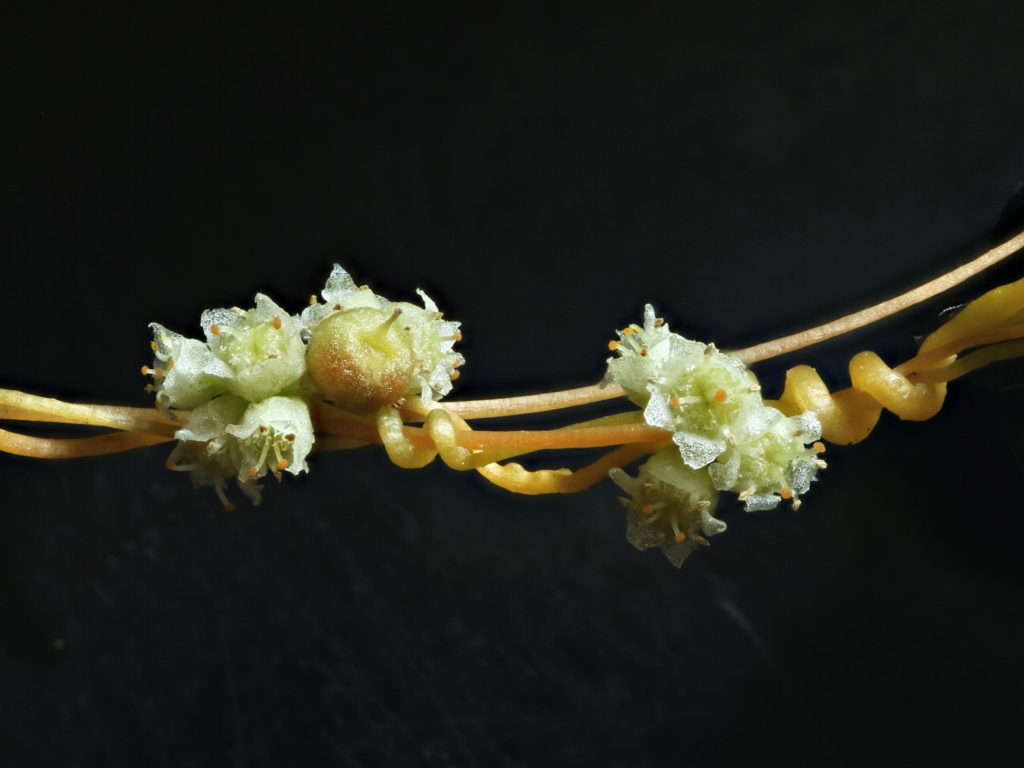
A selection of local plants through the 2018 season by David Benham:
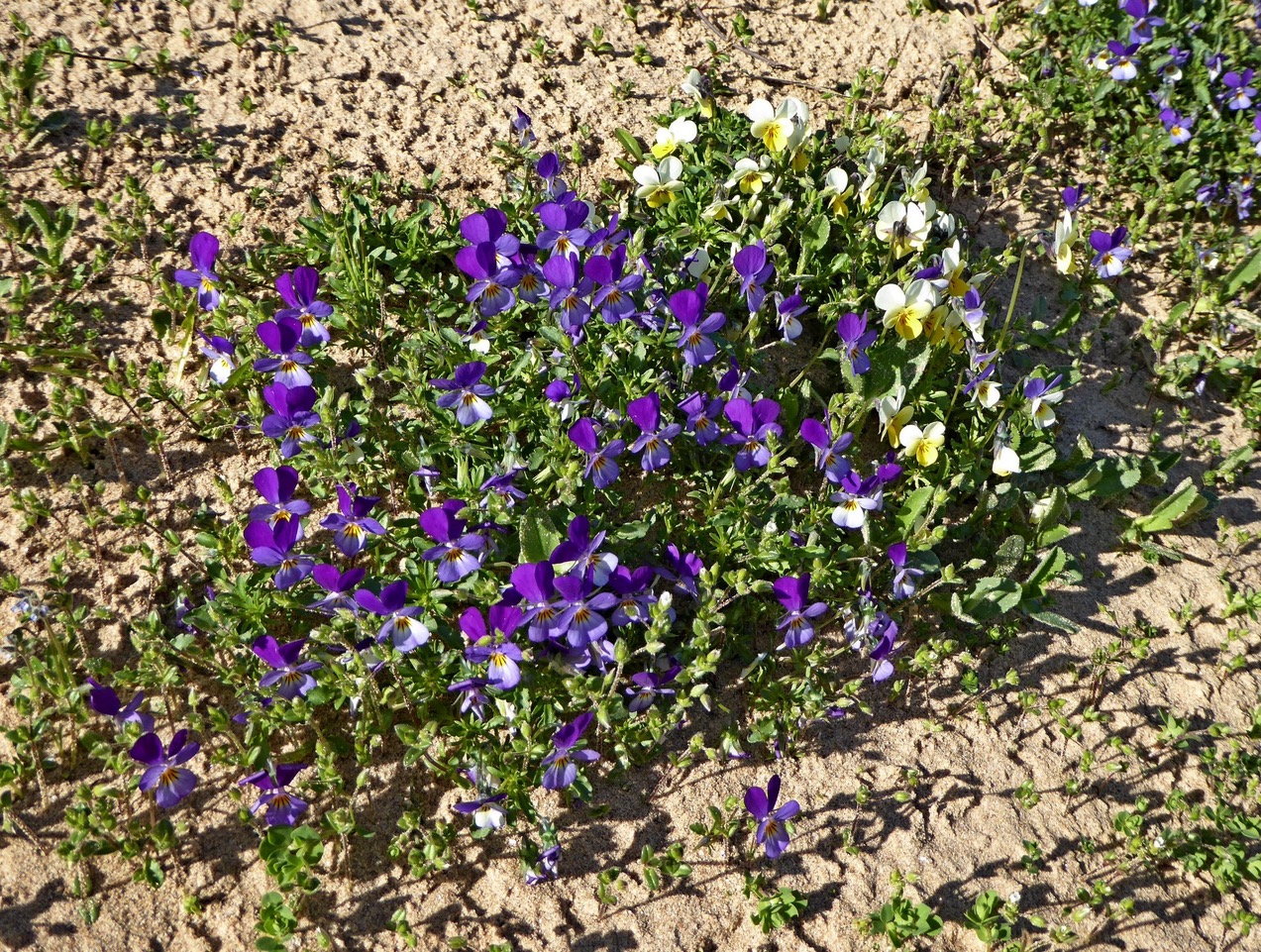
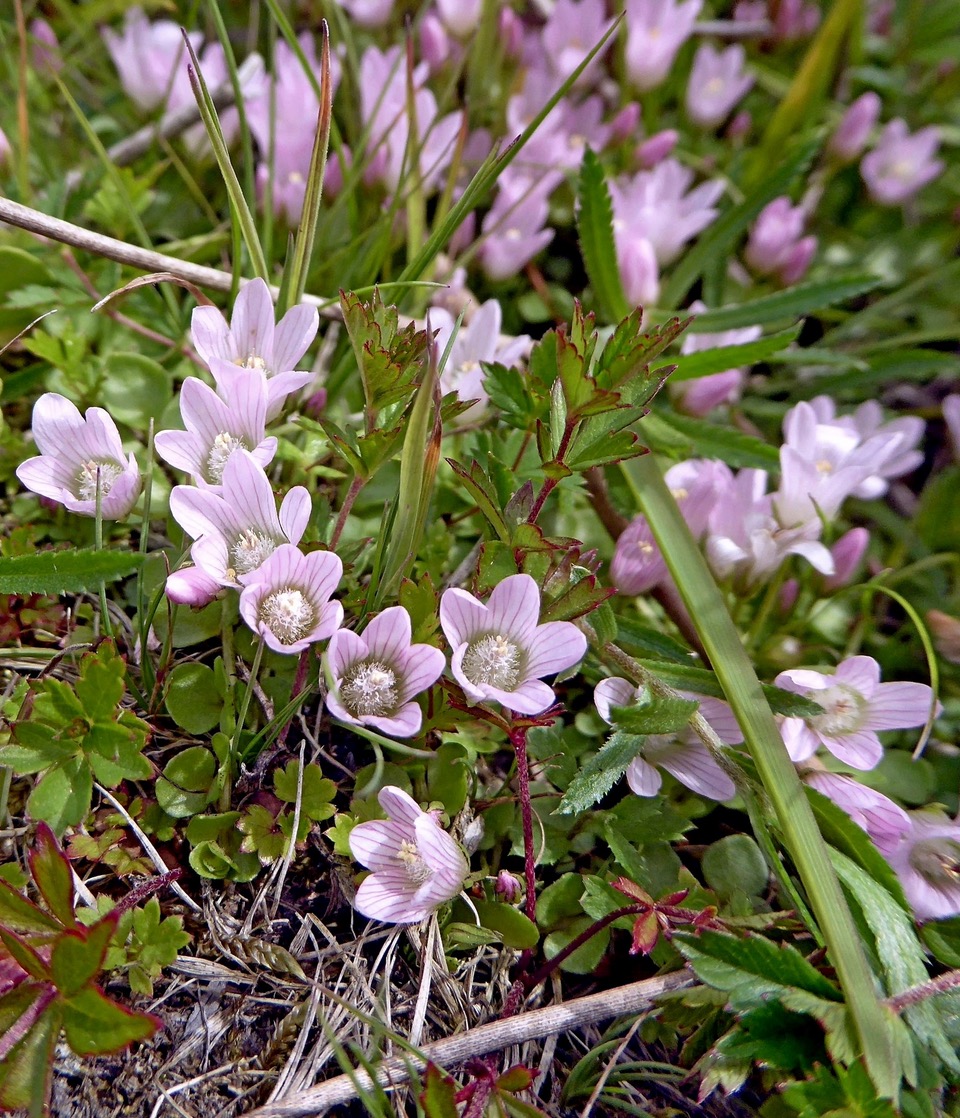

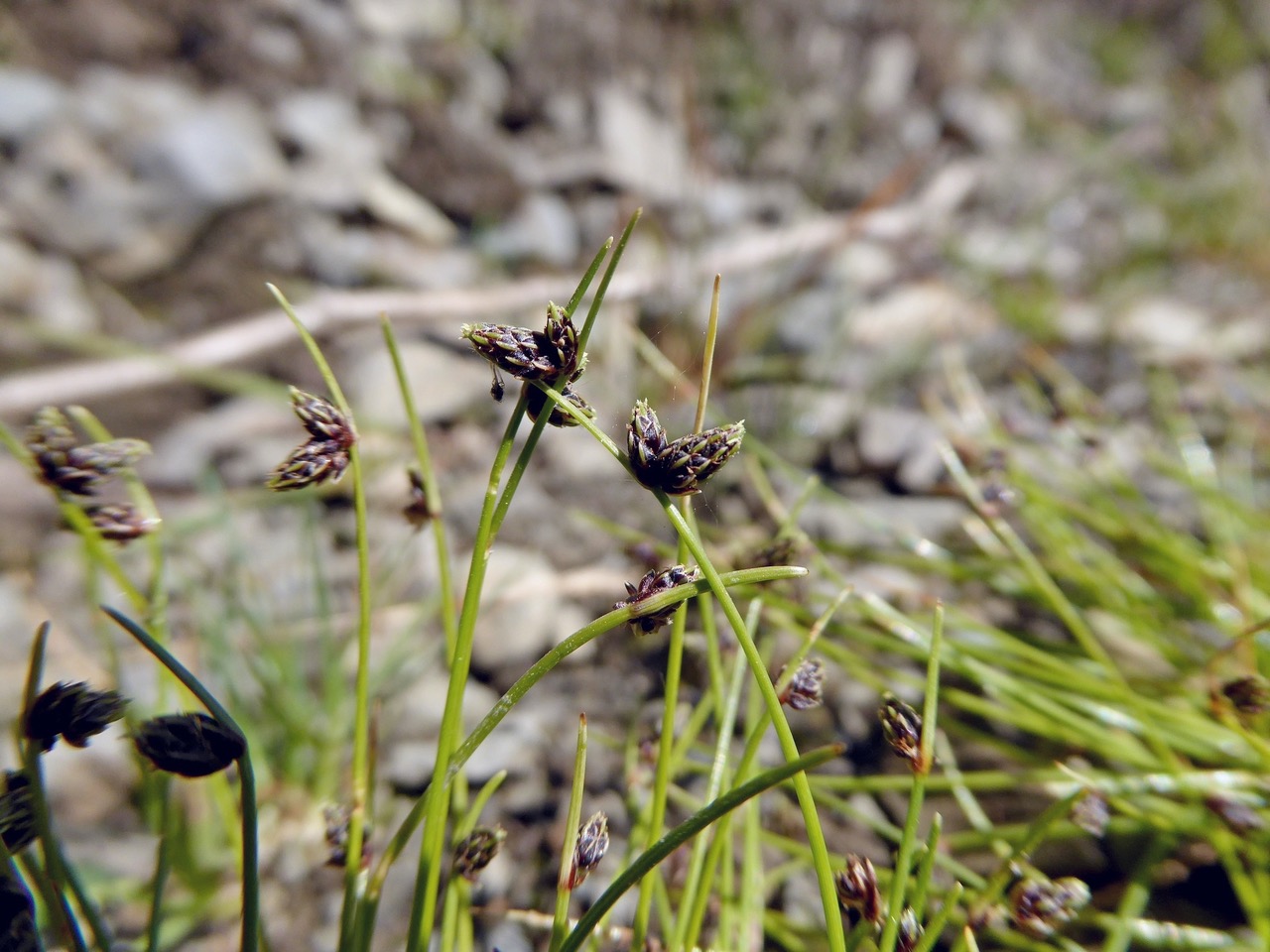
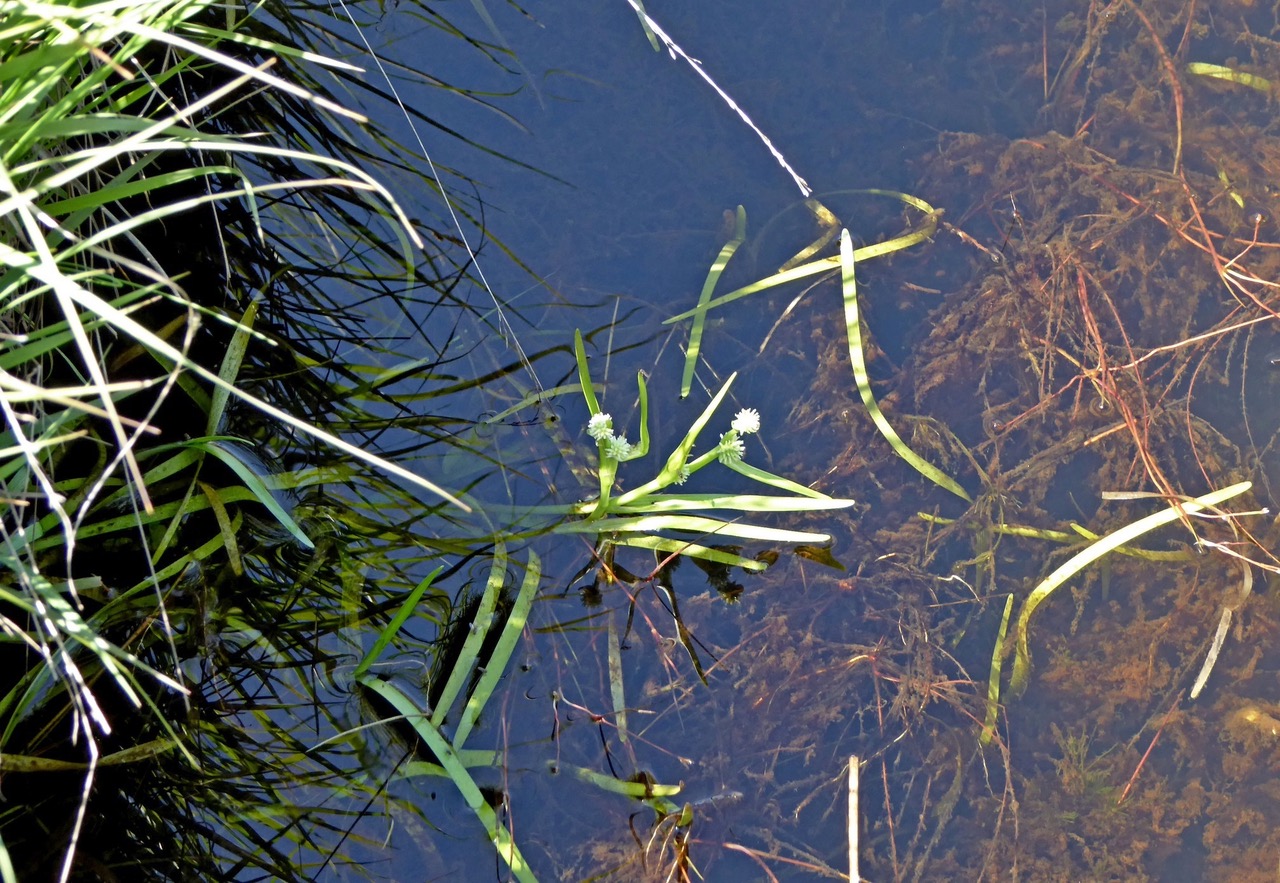 Least Bur-reed Sparganium natans, Bull Haw Moss Beck 1 July (photo David Benham)
Least Bur-reed Sparganium natans, Bull Haw Moss Beck 1 July (photo David Benham)
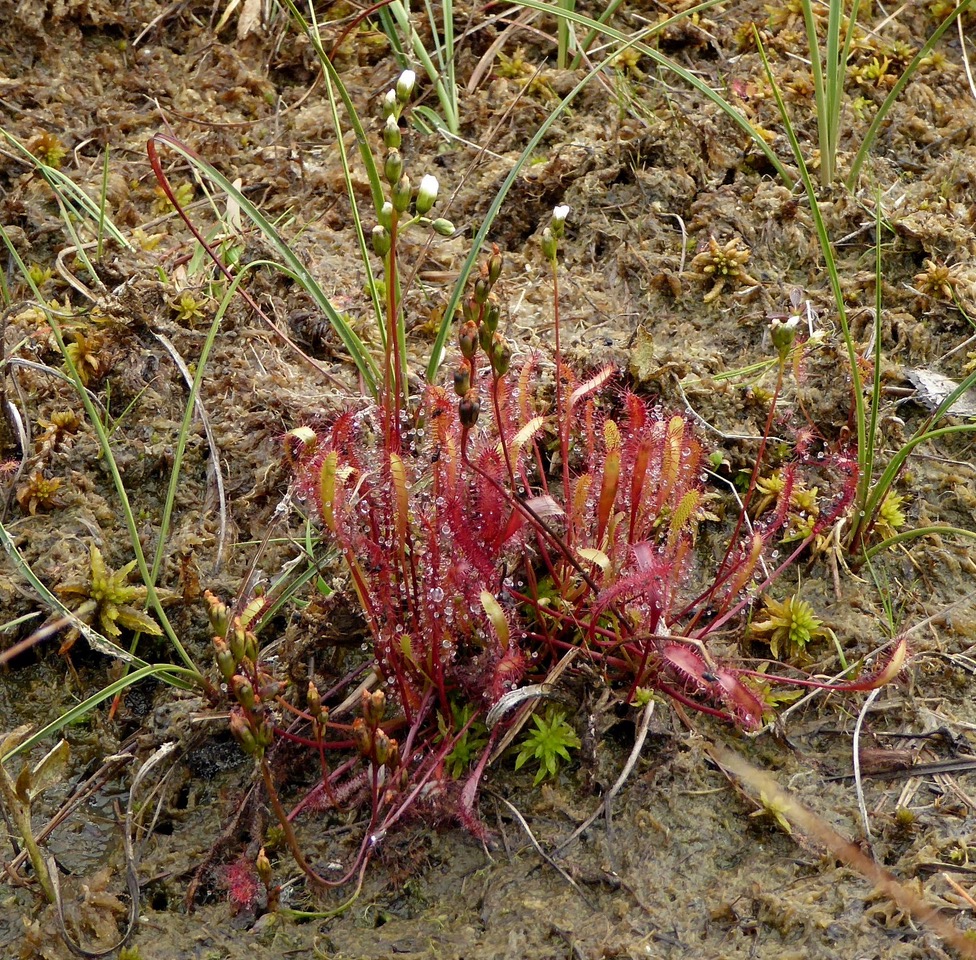
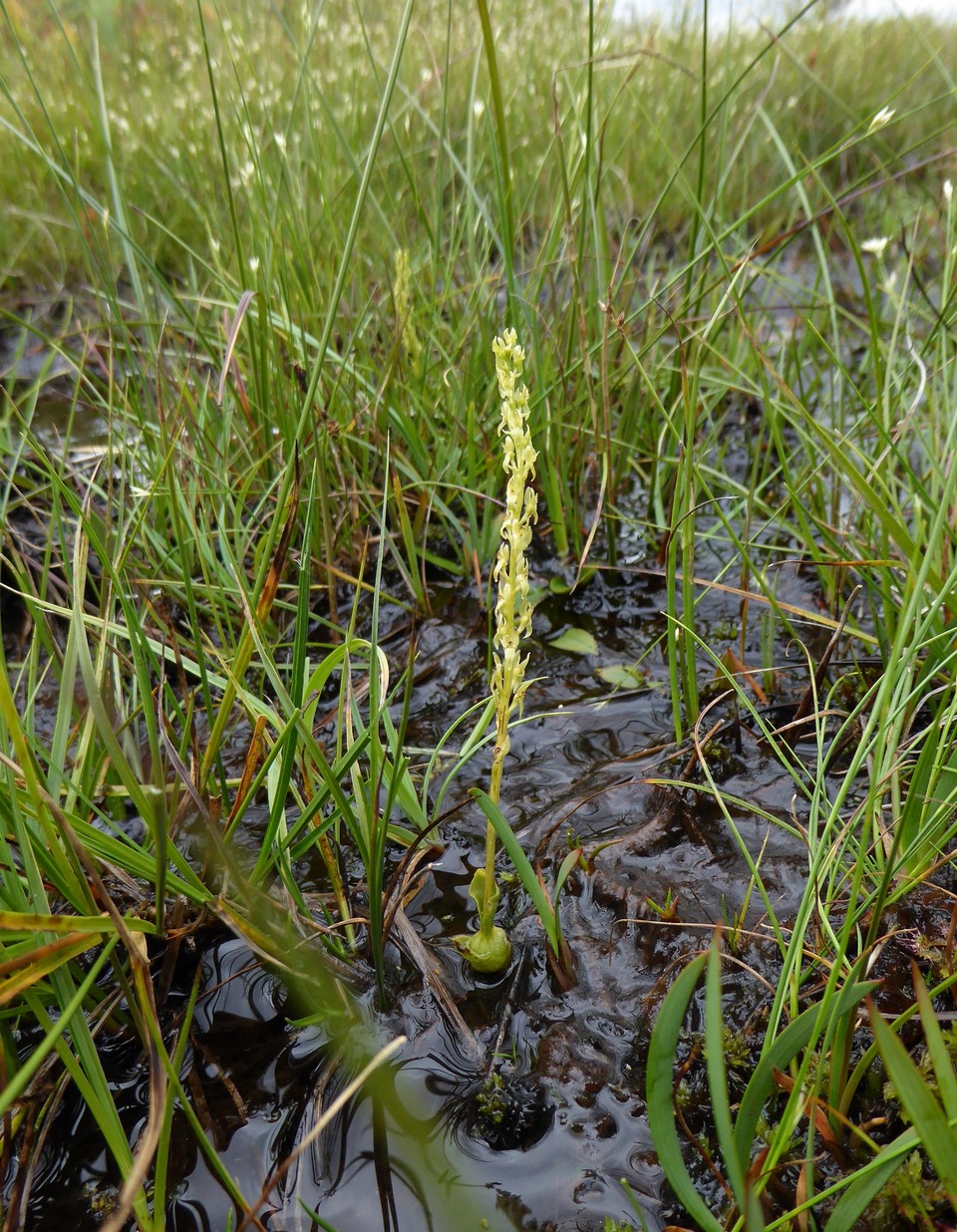
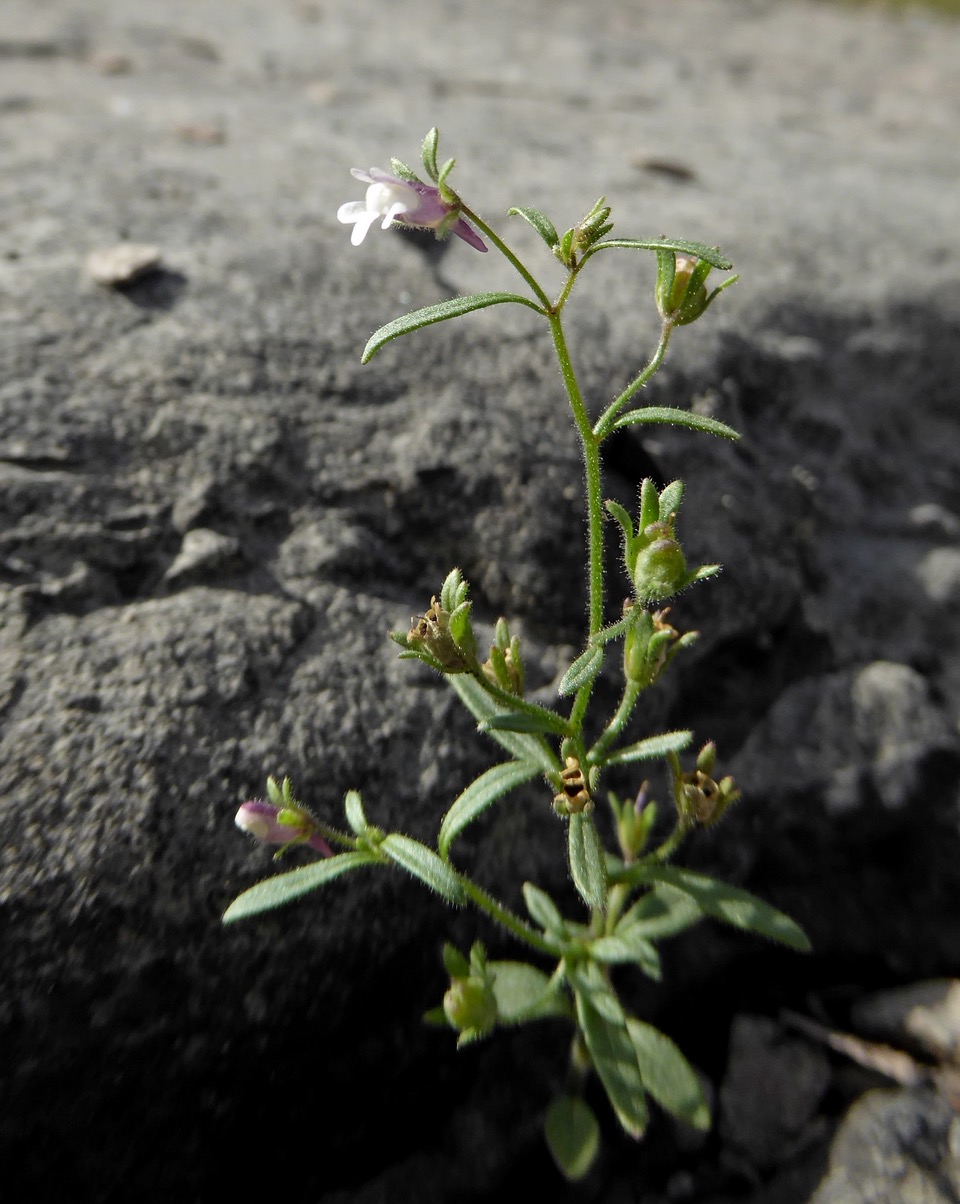
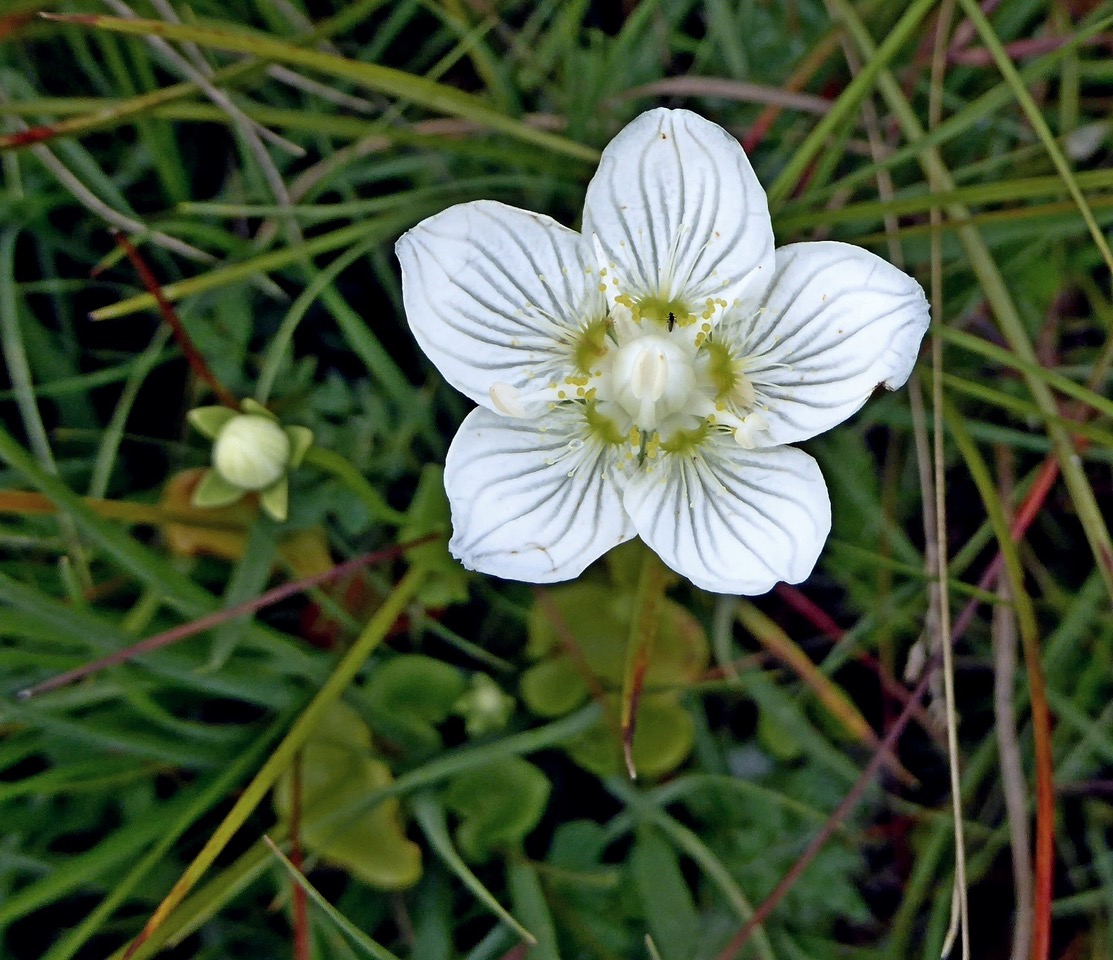
2017
Some items of interest, in no particular order.
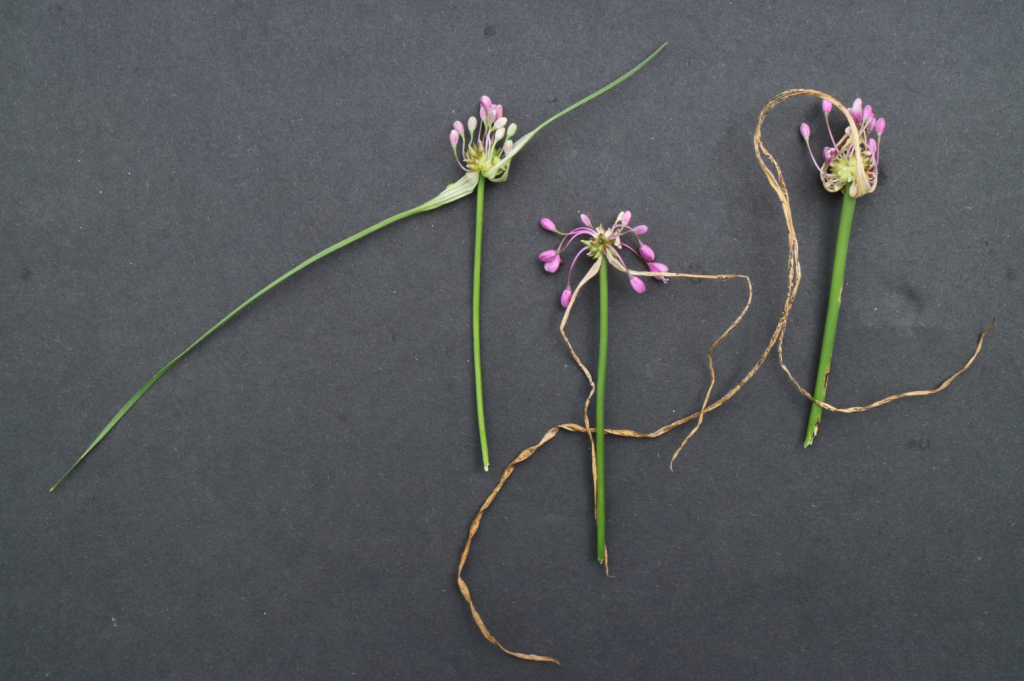
Keeled Garlic may be increasing in the county. The pair of very long spathes is distinctive, and there are floral differences also from its closest look-alike, Field Garlic, Allium oleraceum.
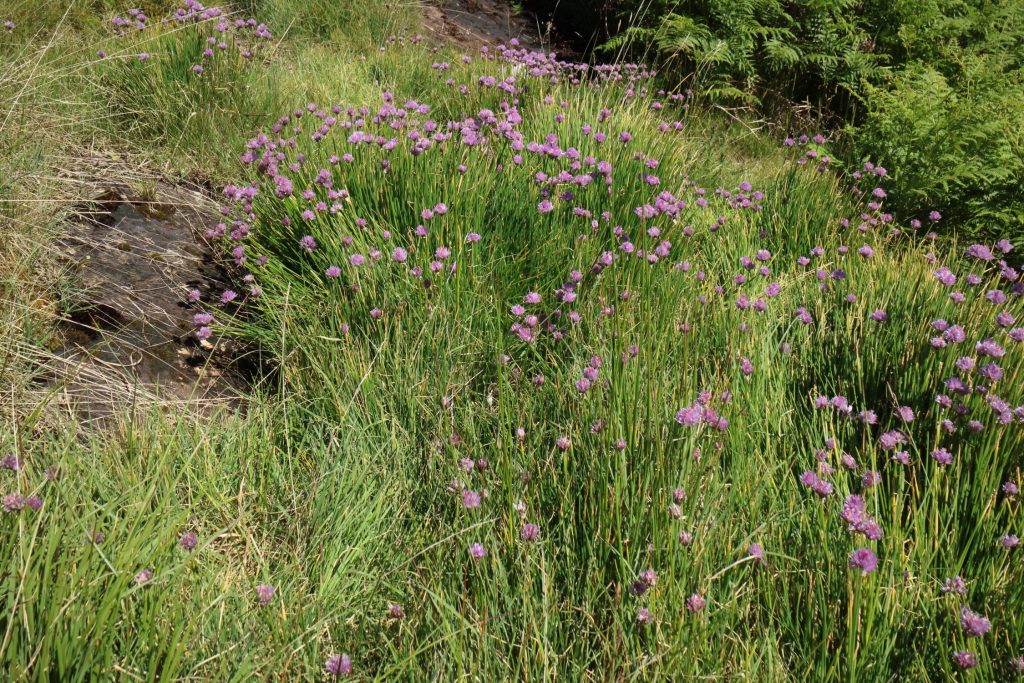
Lee Schofield (RSPB) showed us some remarkable spreading and vigorous patches of Chives in two damp seepages above the road – a curious sight in this upland and +/- acidic site.
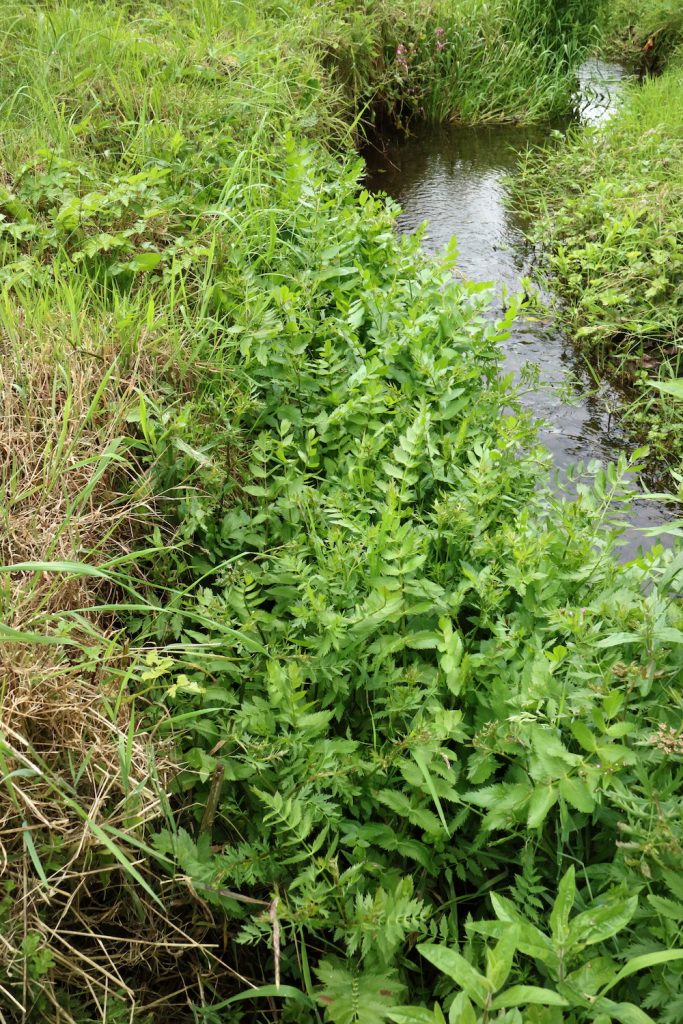
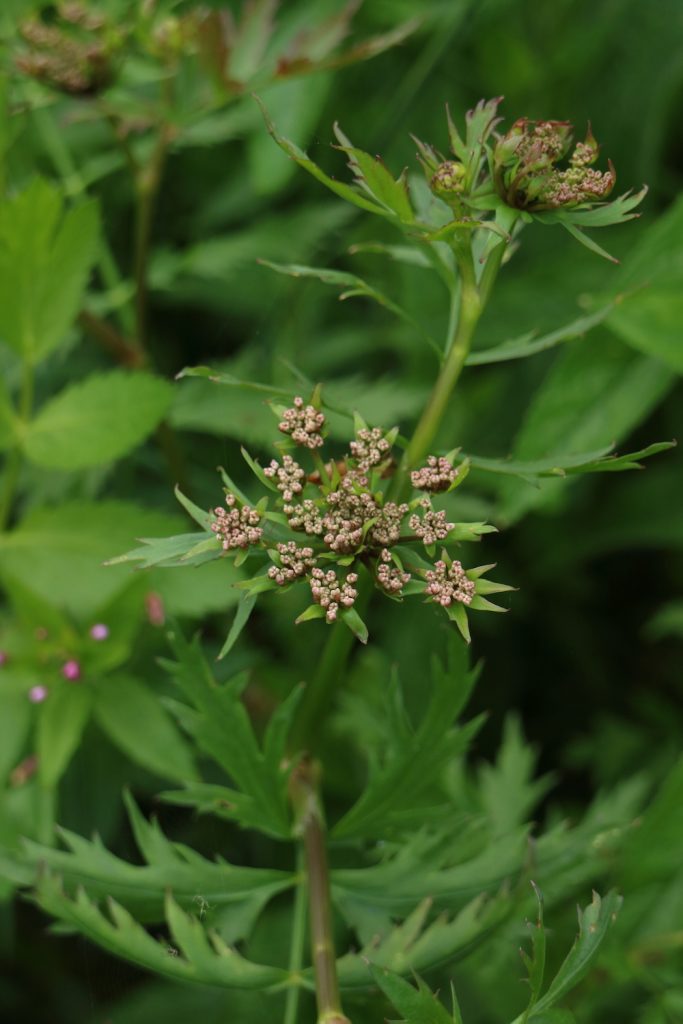
Berula lining a stream at Hutton-in-the-Forest.
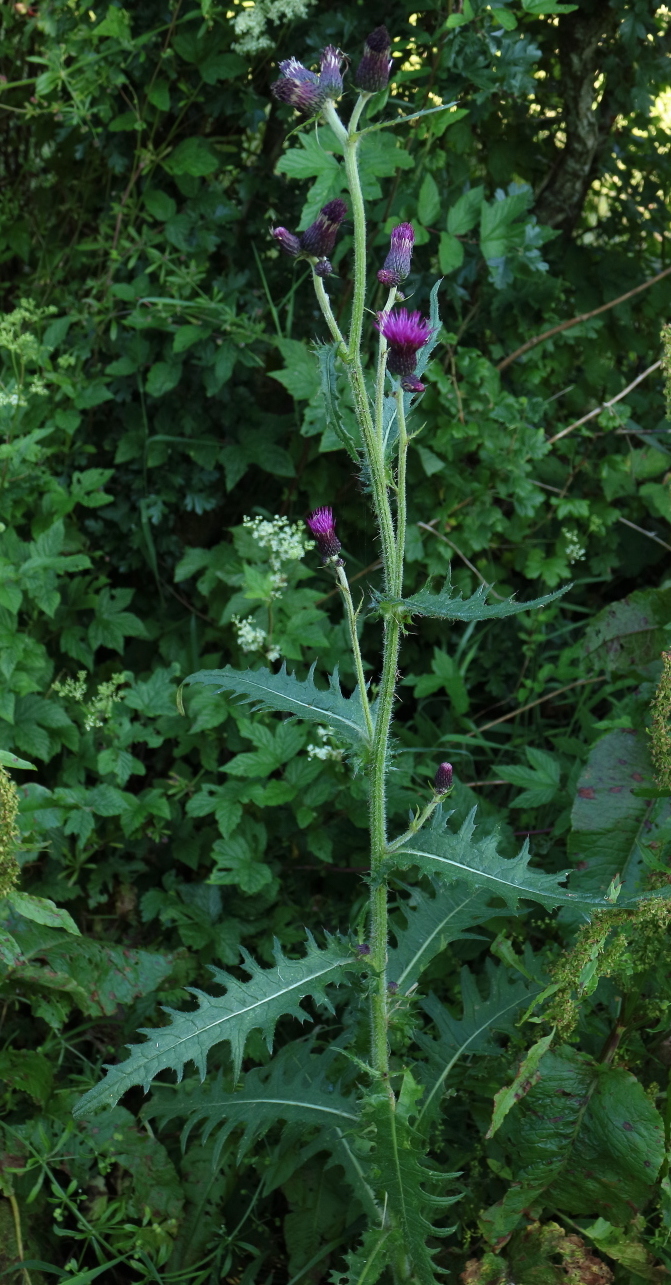
Found by Dave Hickson and John Parker at Catterlen. There was just a single shoot here of this Central European thistle. Rod Corner found a “flourishing colony” in 1988 nearby, but this may be its ‘last stand’.
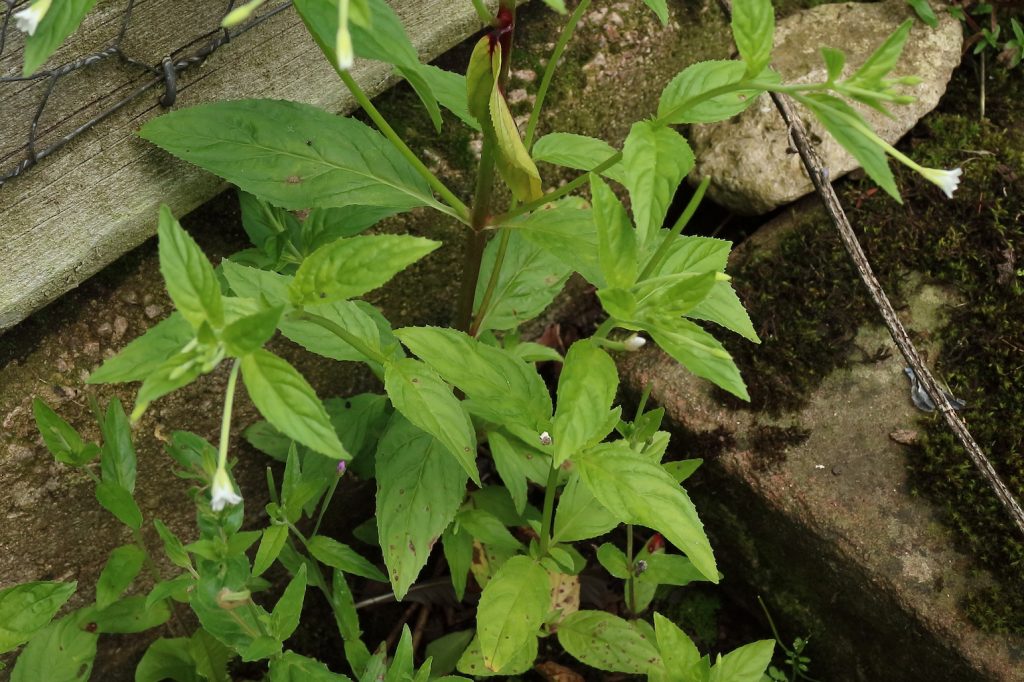
Several plants (and perhaps some hybrids) around the glasshouses and propagation beds at Hutton-in-the-Forest. A rare plant in north Cumbria.
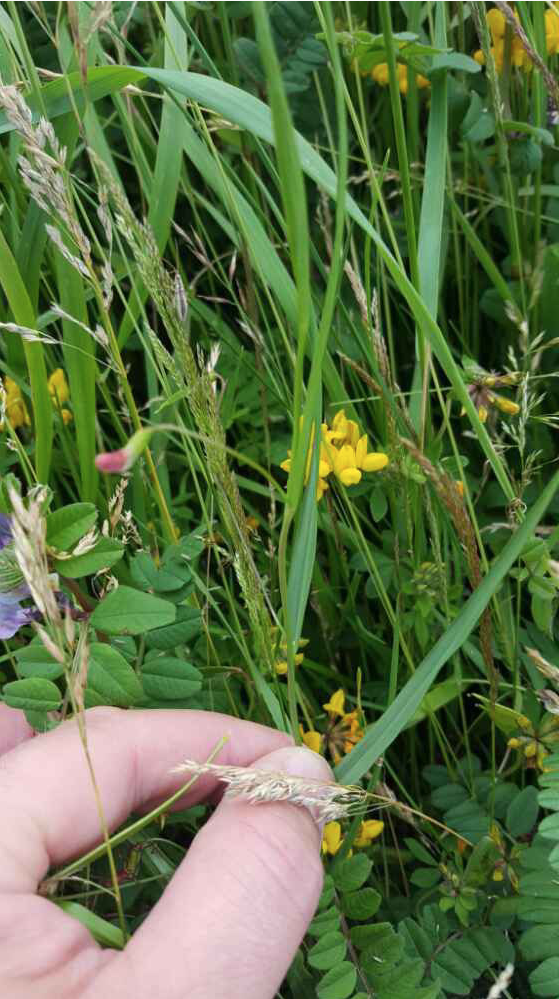
A good find by Graham Bell at Whitehaven of this rare ‘grass-leaved’ vetch.
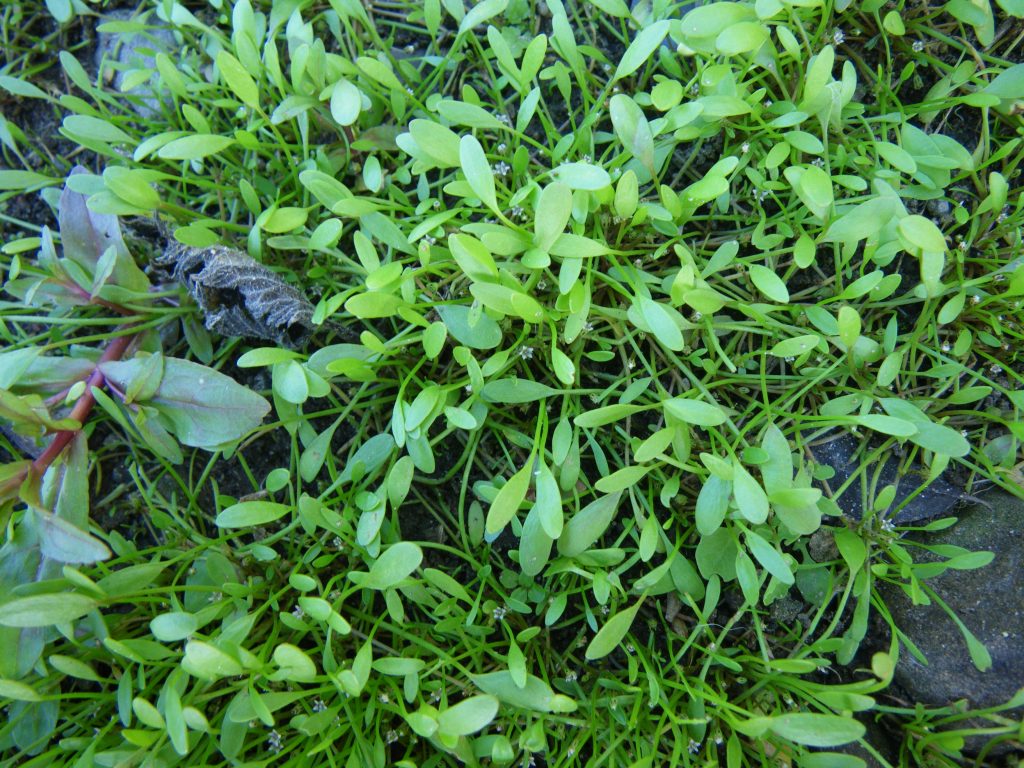
Abundant along the edge of a pond at Edderside, found by Debs Muscat. A well-named plant! The tiny white star-like flowers are just visible (at least if you enlarge the photo!).
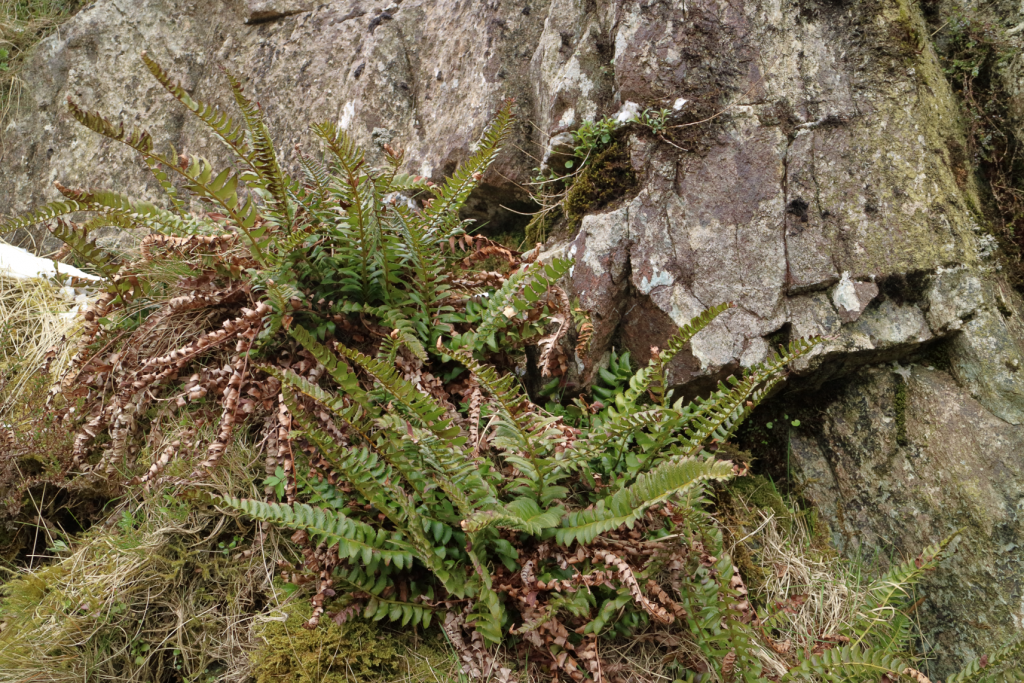
Some fine, old plants of Holly Fern on the sheer cliffs of Mardale, shown to us by Lee Schofield of RSPB.
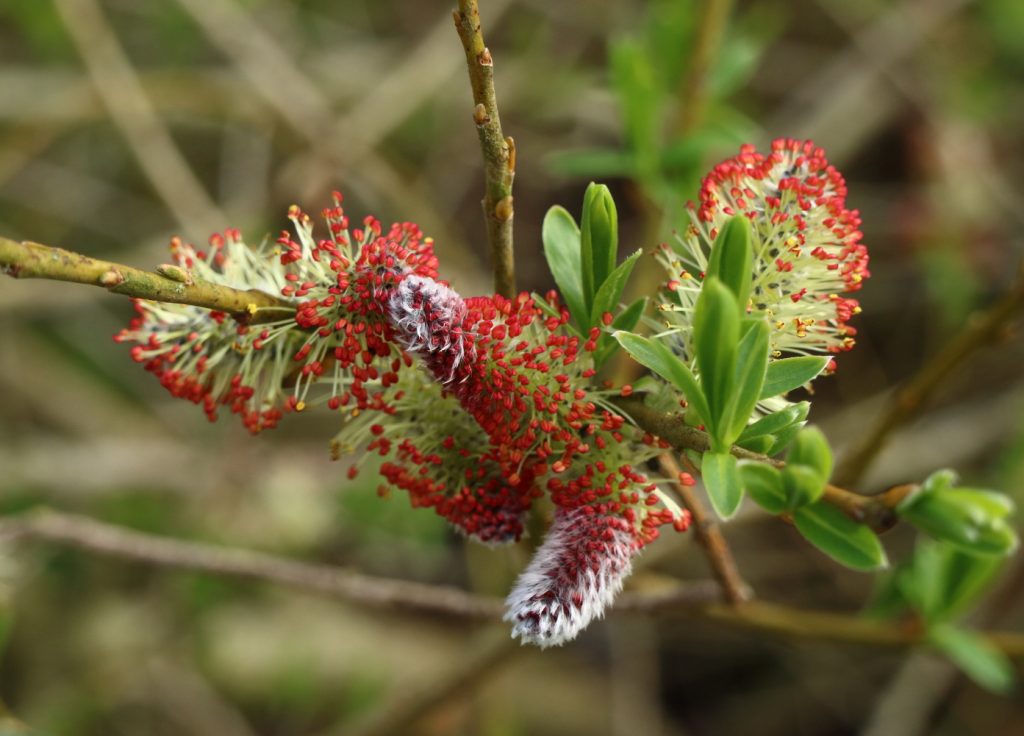
The striking male catkins of Purple Willow along the River Caldew.
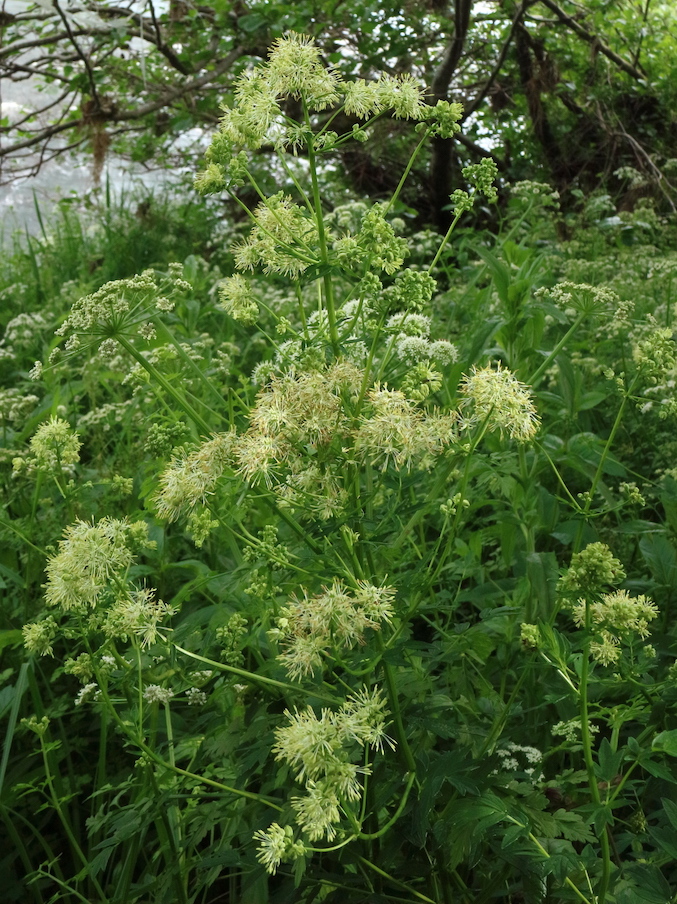
Good to see that this is still persisting under Eden Bridge, despite the scouring floods of recent years. It was found here originally by Rod Corner. The only extant site in the north of the county?
2016
Here’s some recent items, from a very busy summer!
August 9:
A recording day in SW coastal Cumbria, with Cumbria Biodiversity Data Centre, organised by Gary Hedges. We looked at Low Church Moss, Beckermet, NY045057, and at the cluster of kettle-hole mires between Braystones and Nethertown, of which Silver Tarn (NX998068) is the largest.
The mires were all remarkably distinct in appearance and plant-communities, presumably an aspect of their stages of development, varying from quaking-bogs surrounding areas of open water, and very wet marshes and fens, to quite firm valley-mires with no standing water. A great variety of plants, with a few of them below. Perhaps most striking were colonies of Royal Fern Osmunda regalis at two sites. “Colonies” was the right name, since there were encouraging numbers of smaller plants, and even patches of tiny ‘new’ plants. [JR]
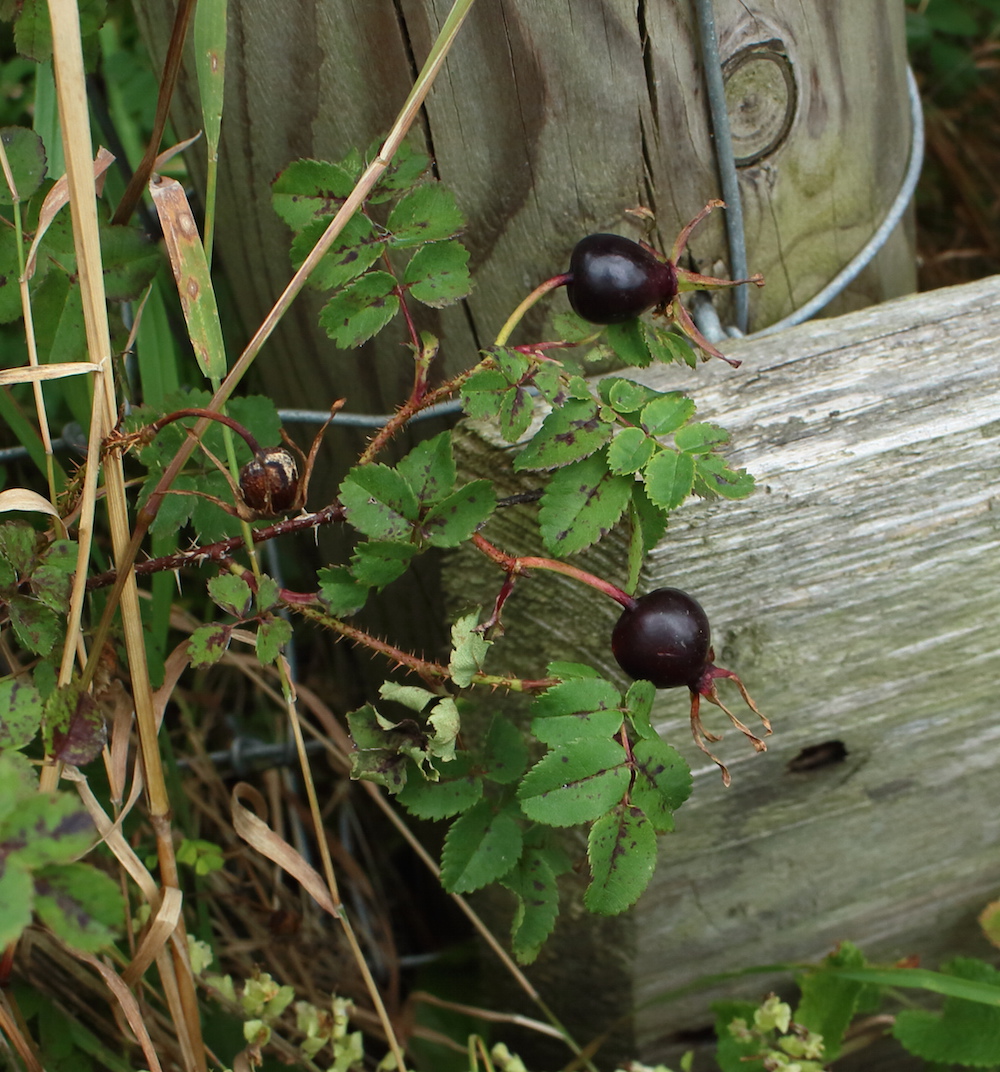
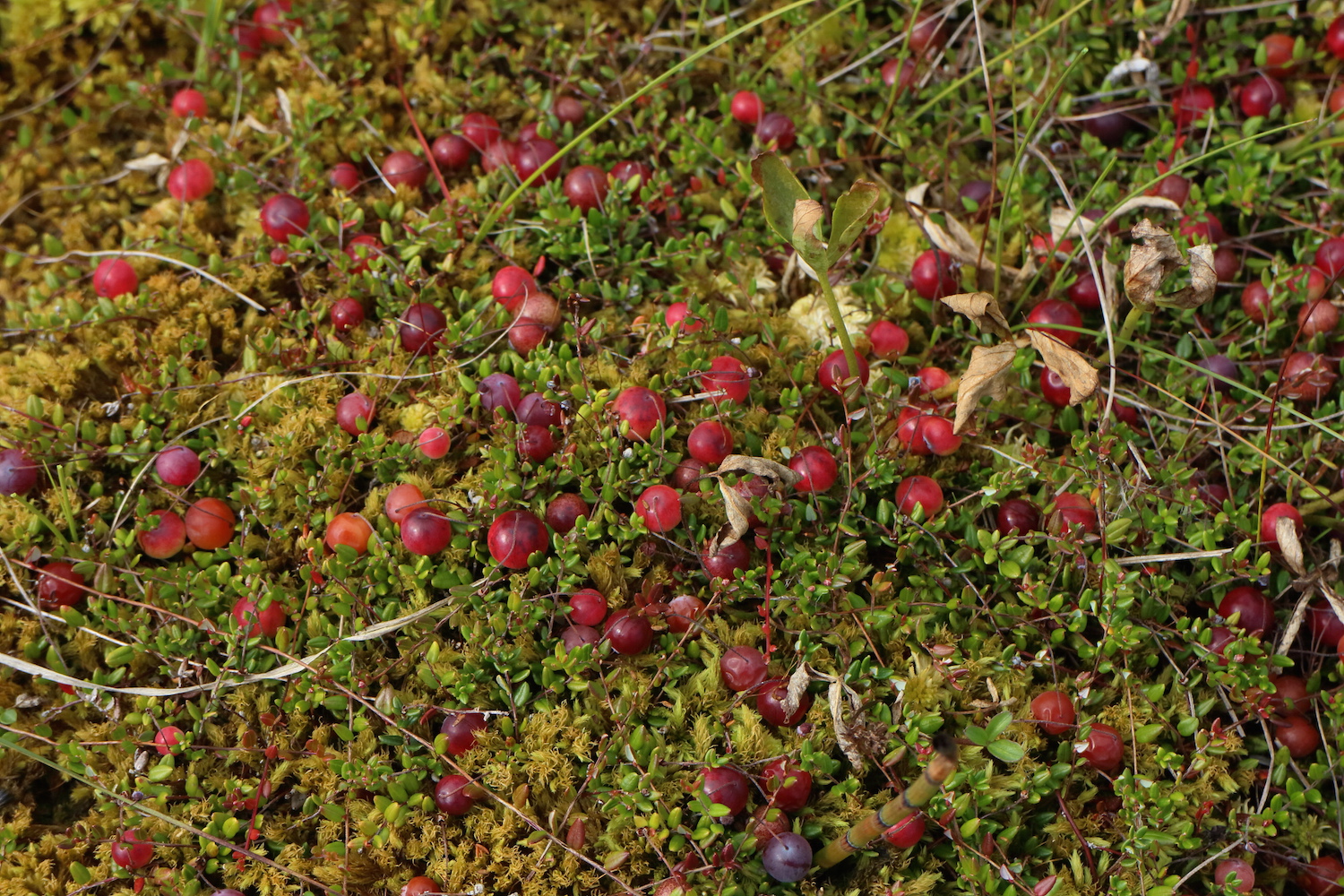
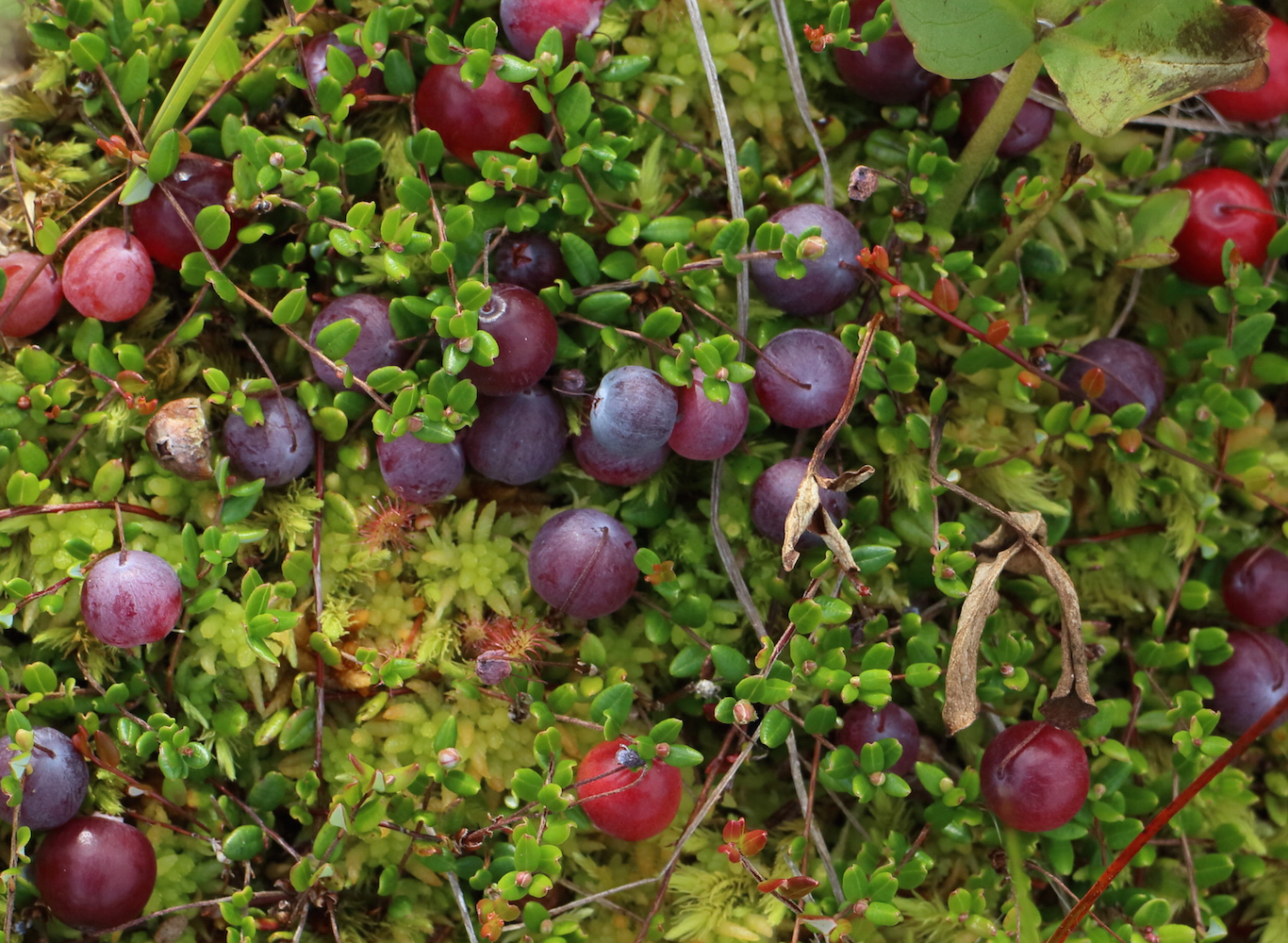
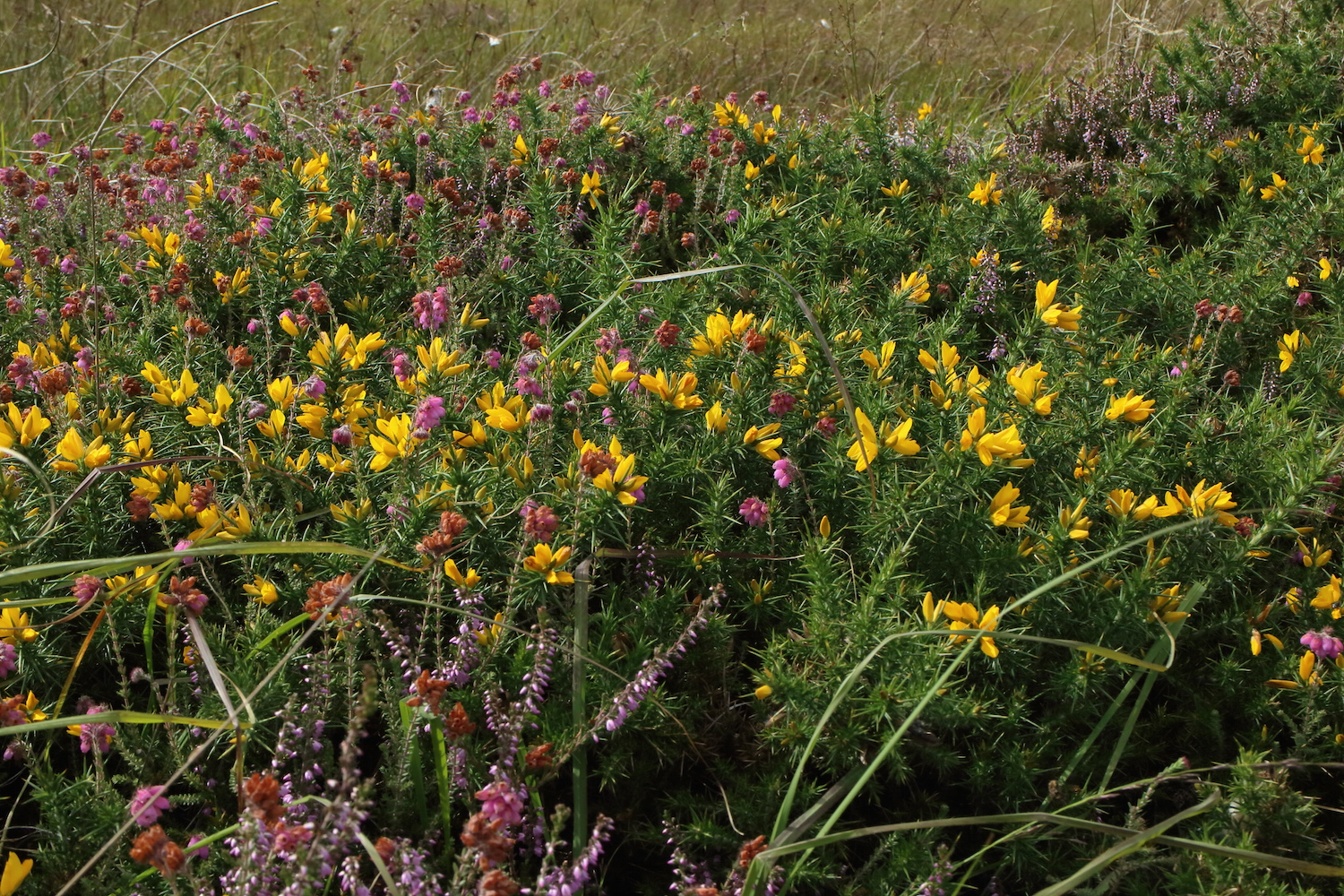
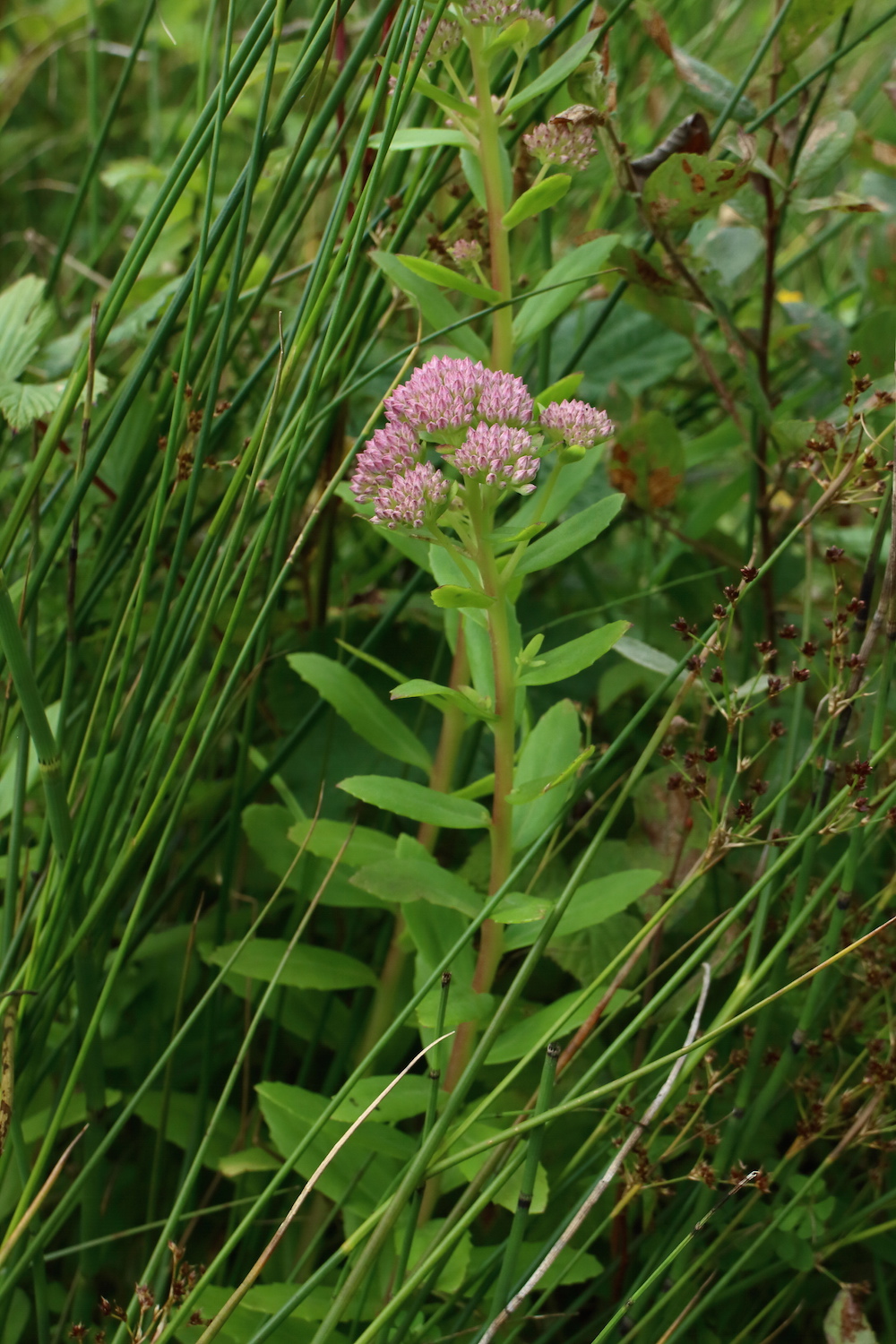
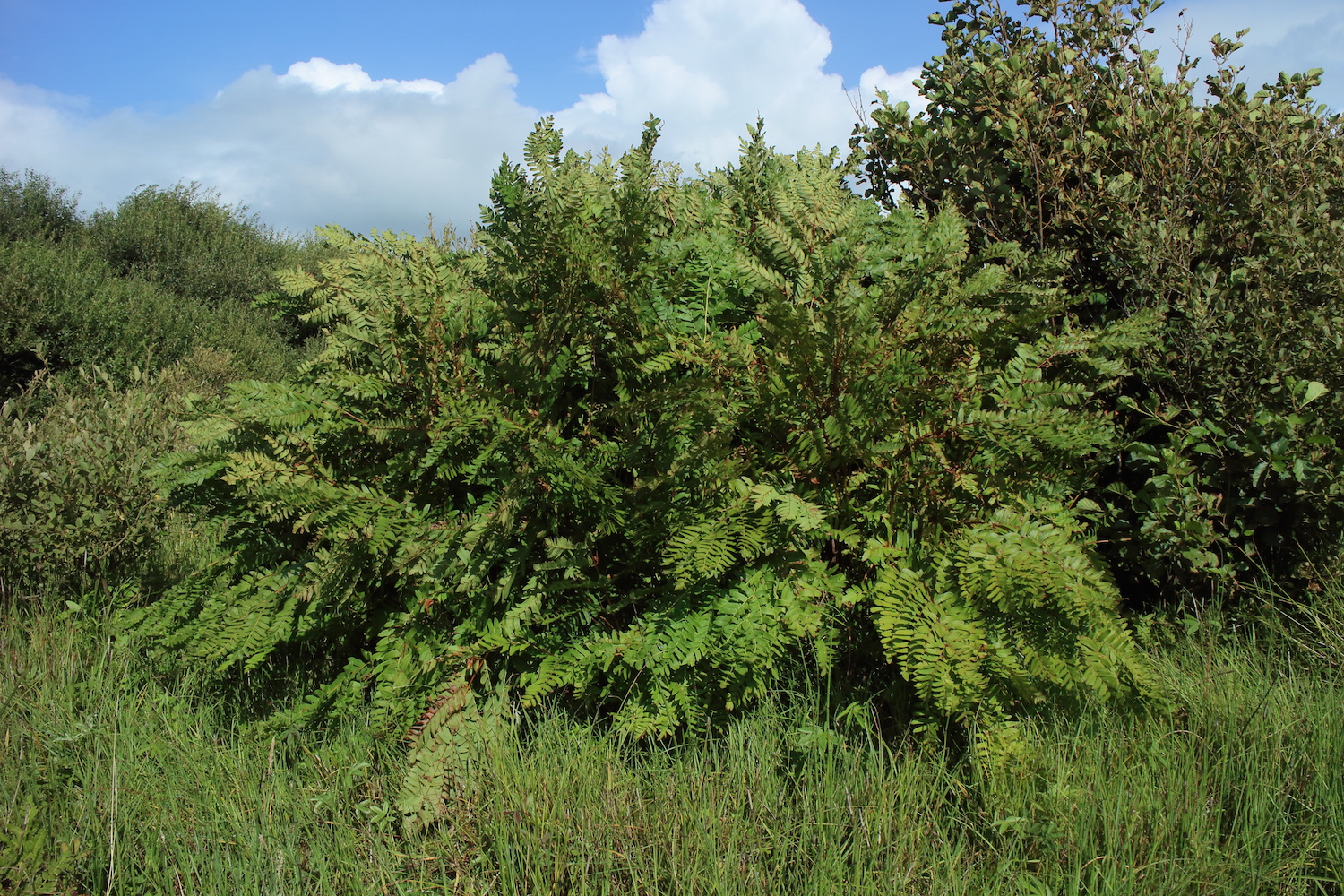
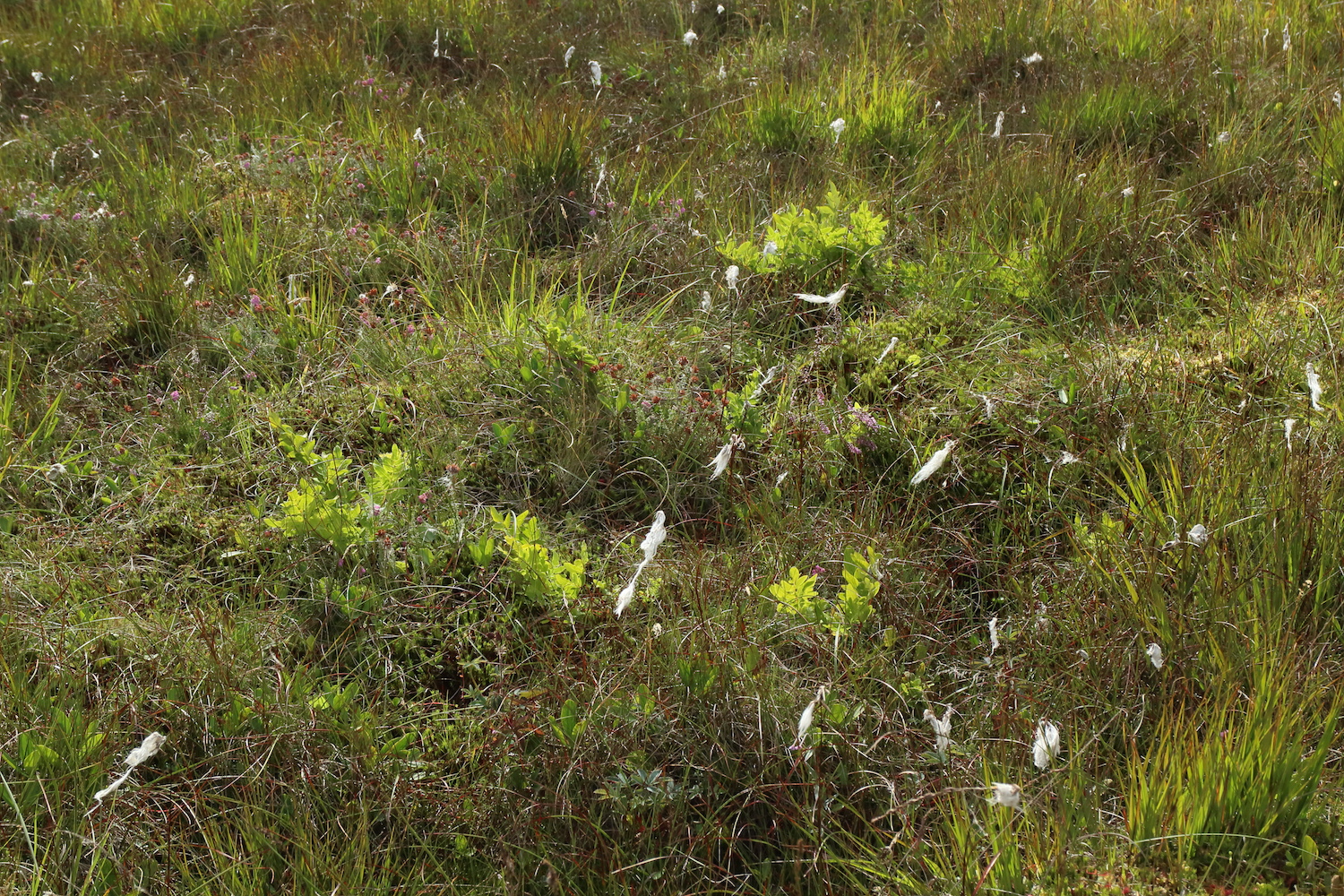
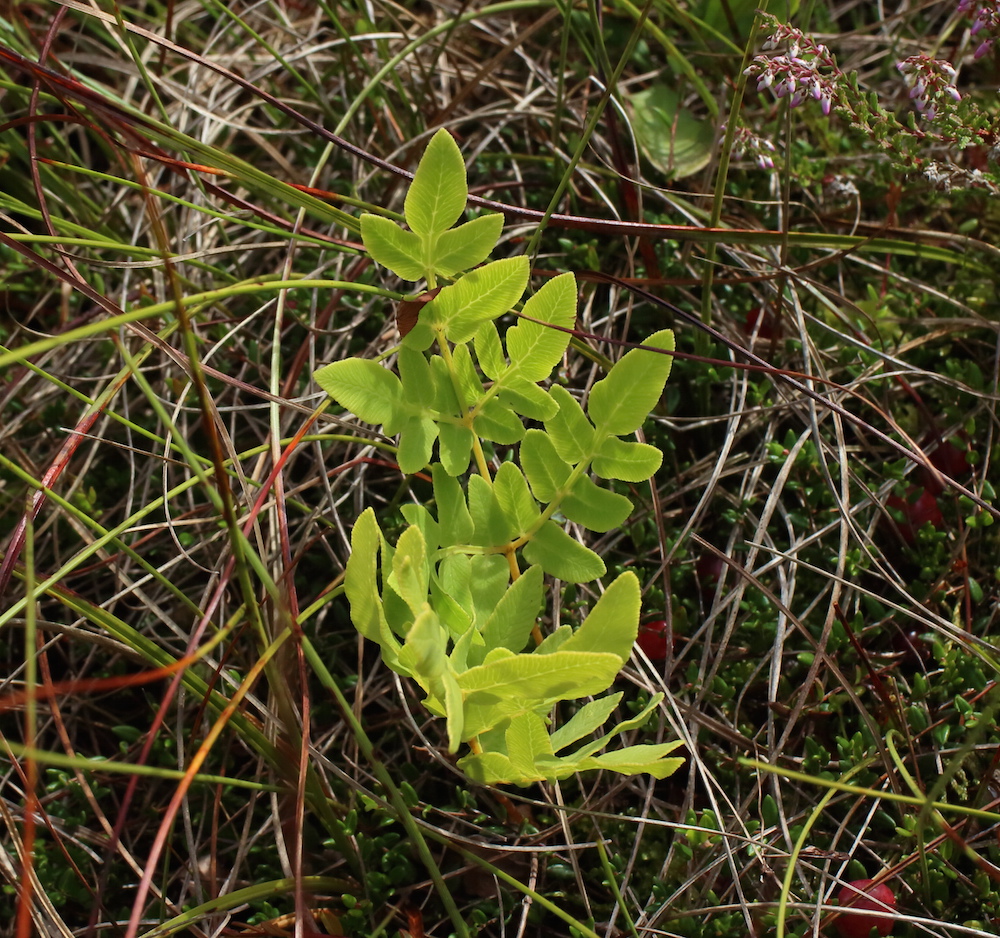
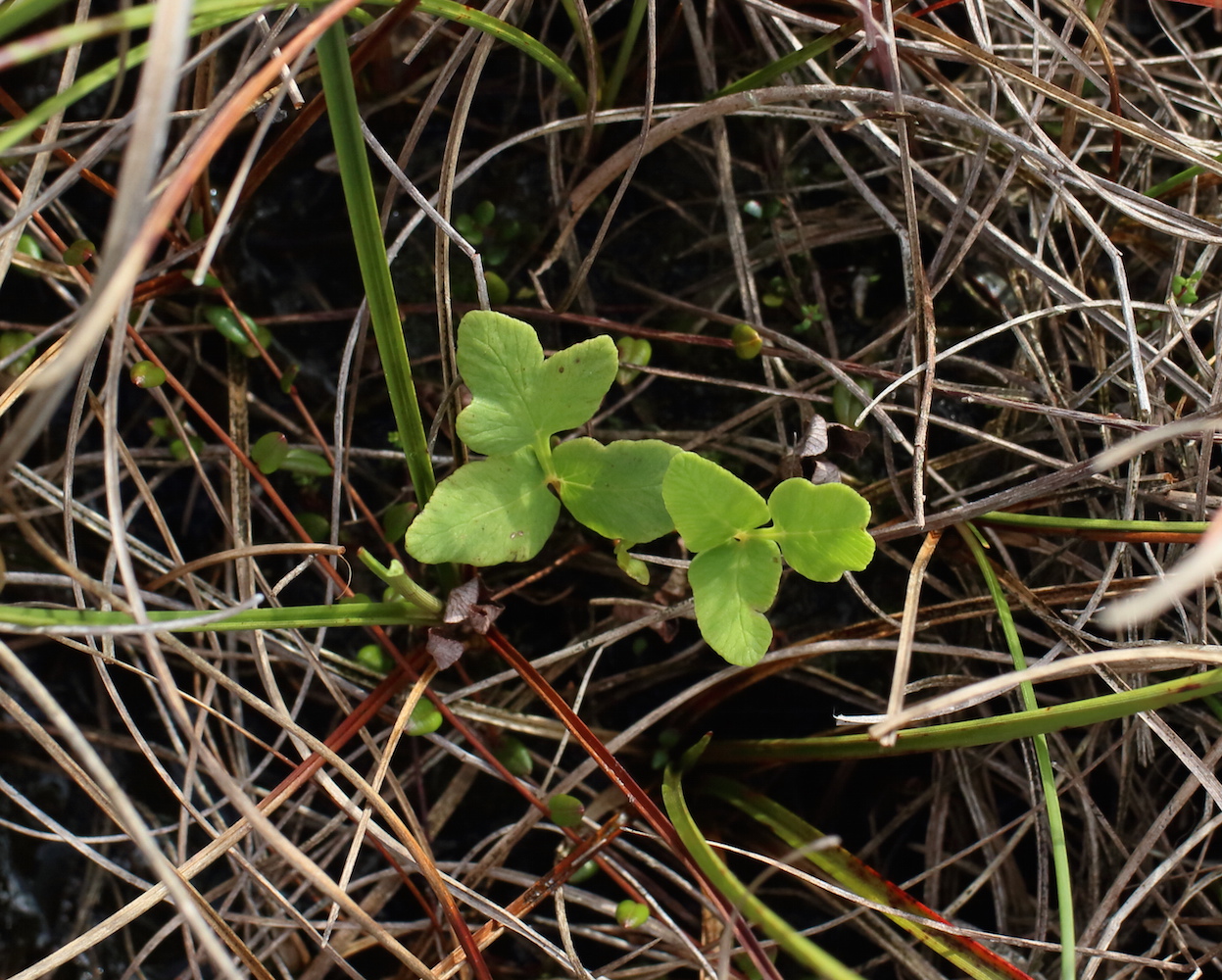
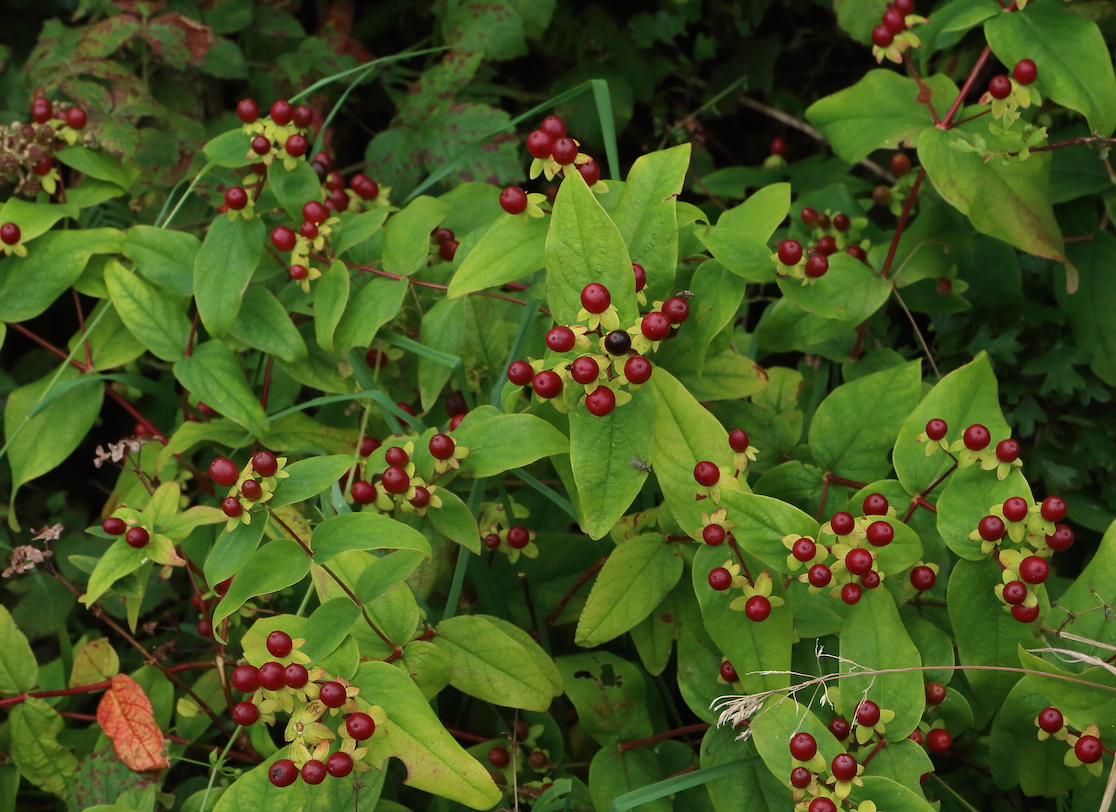
August 4:
A Flora of Cumbria Recording Group meeting in the Blea Tarn area (the Blea Tarn between Great and Little Langdale): a small amount of a bladderwort in one of the ditches at the outflow fitted Utricularia stygia, seemingly the most common (or least rare) of the intermedia aggregate in the county.
The amazing “quadrifid hairs” on the inside surface of the (2mm long) traps have to be exposed and must be examined to get a firm ID. I find it best to get a photo and work from that to estimate the divergence, etc., of the hairs’ arms.
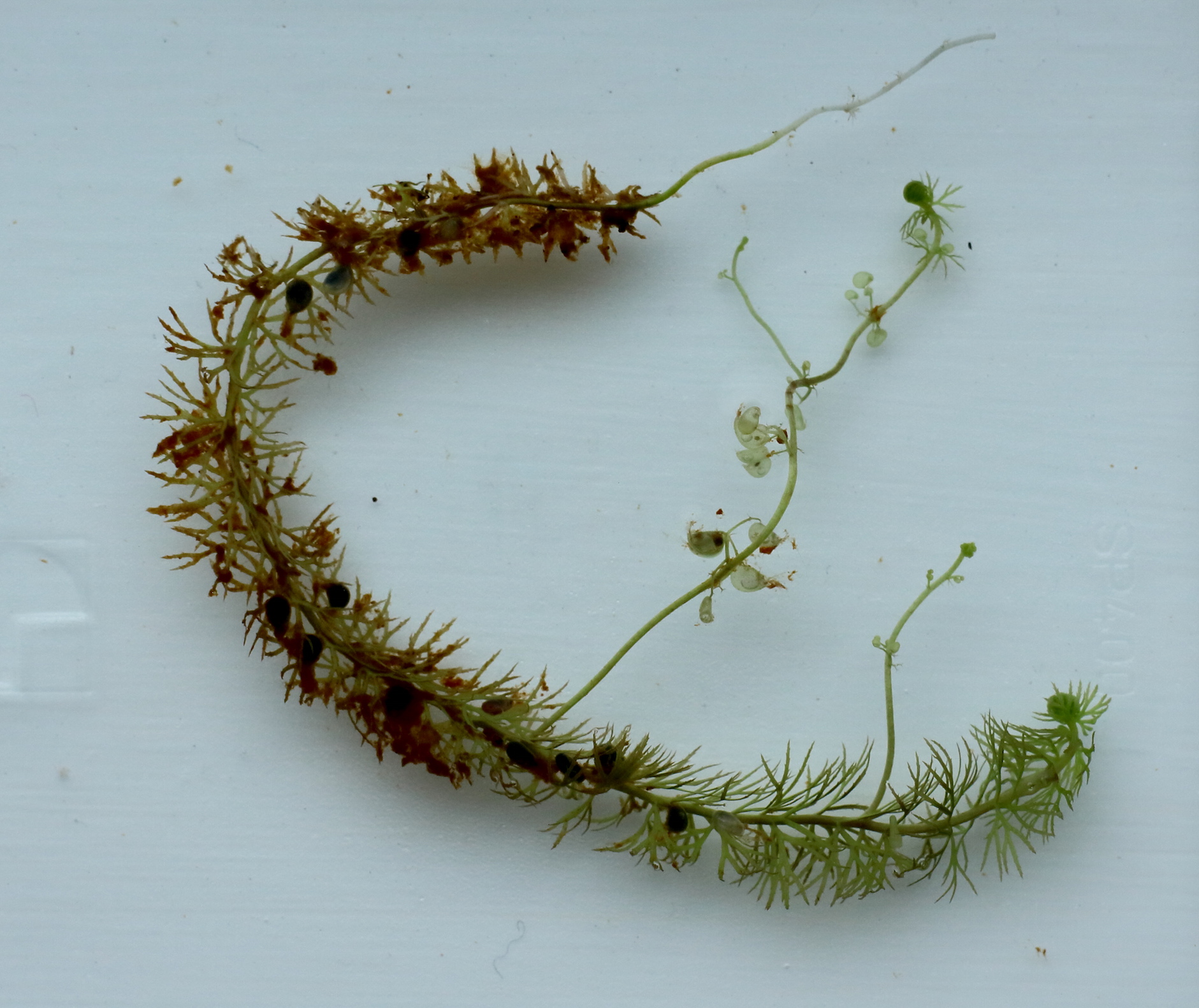
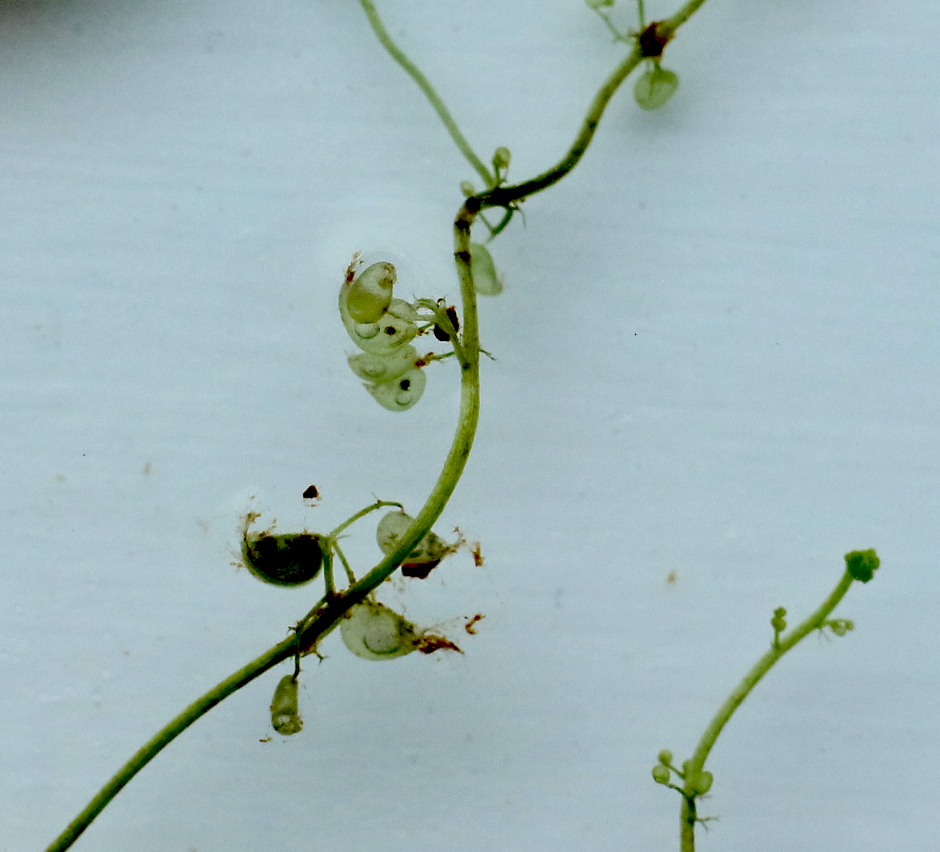
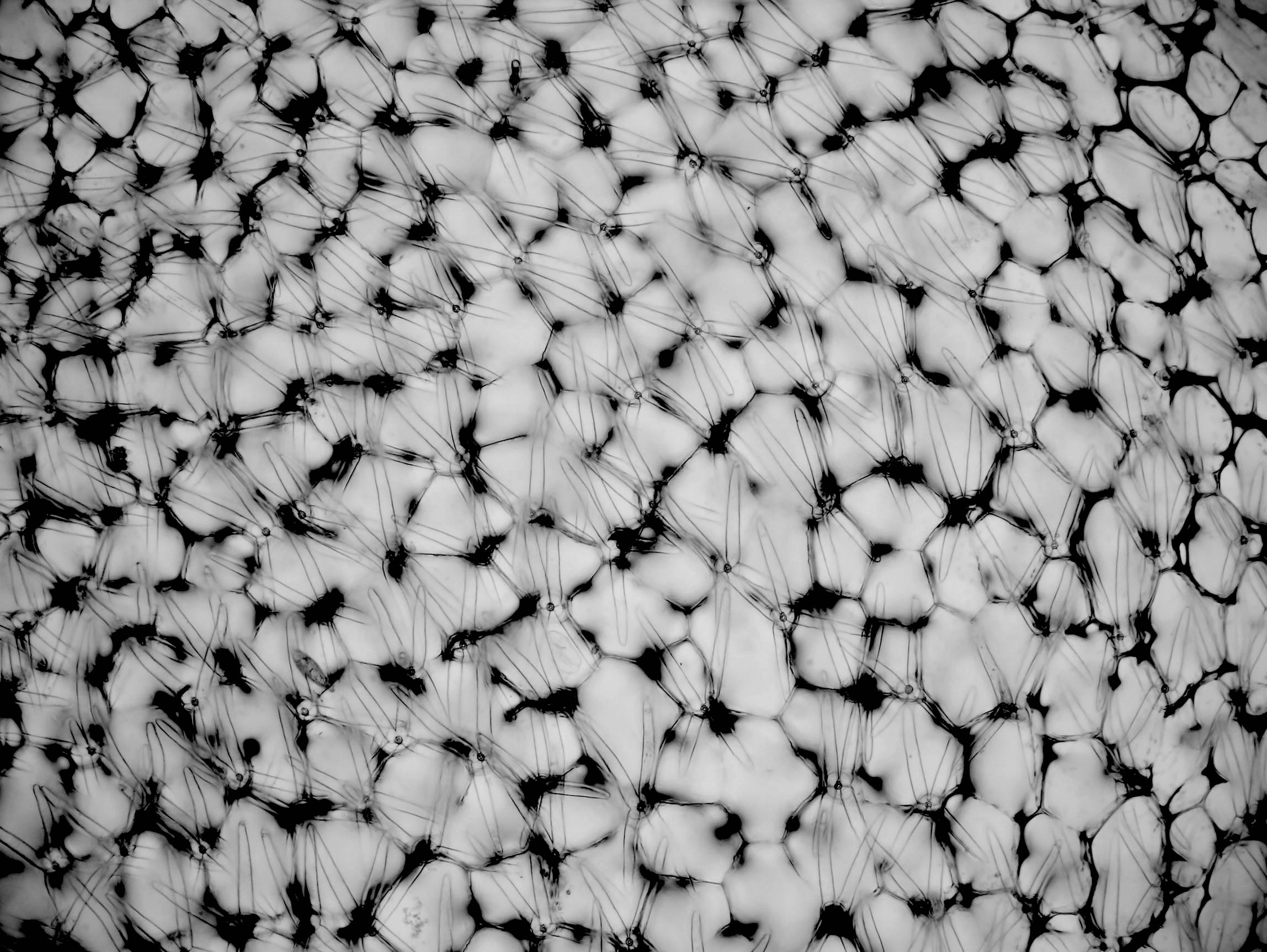
The seepages in Blea Moss below Blea Tarn had some small colonies of Bog Orchid, Hammarbya paludosa. These seepages are more open than many where this plant grows, so making the tiny shoots rather more conspicuous. The flowering plants were at their peak, and the tiny bulbil-fringed leaves of the vegetative plants were remarkable, once spotted. [JR]
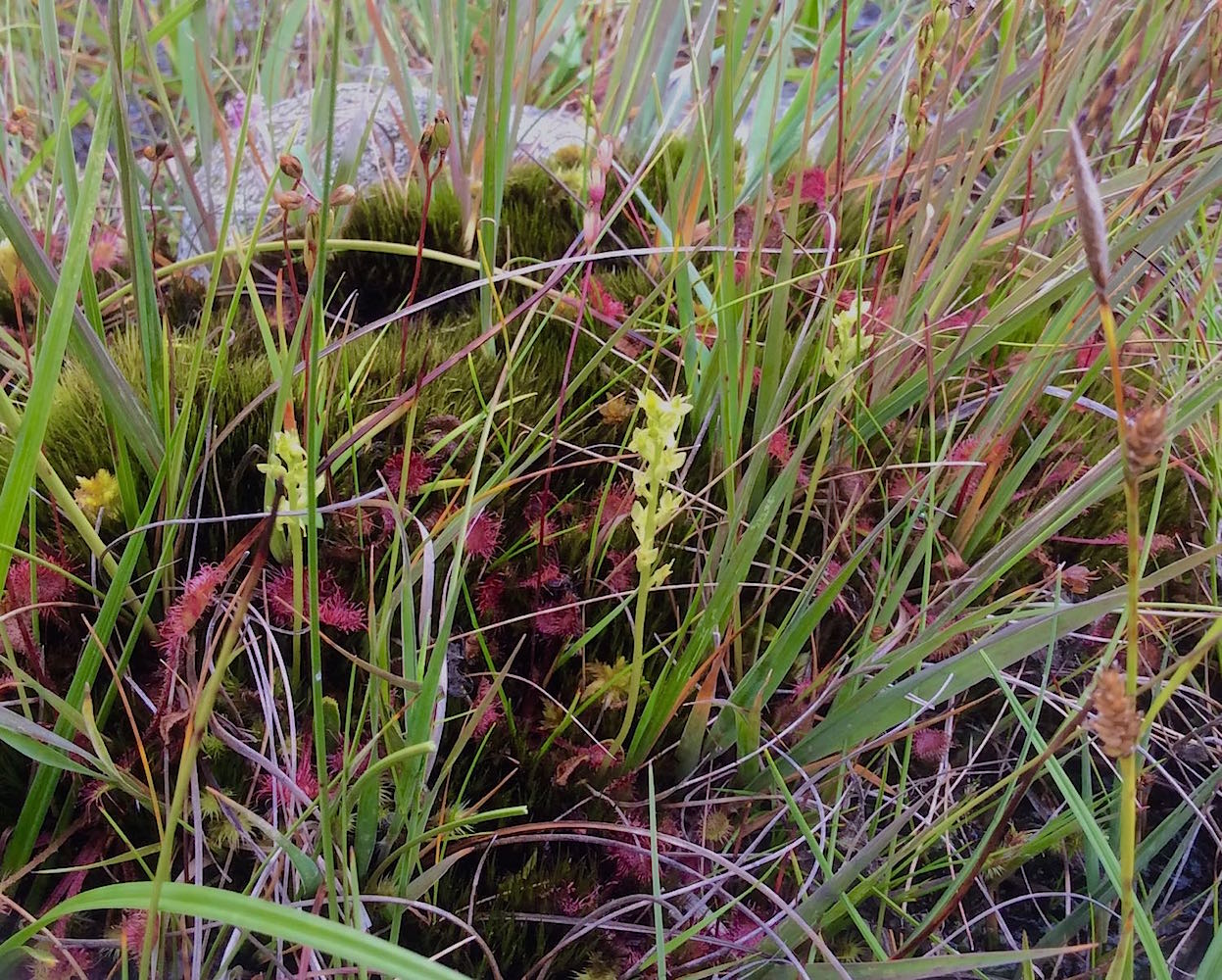
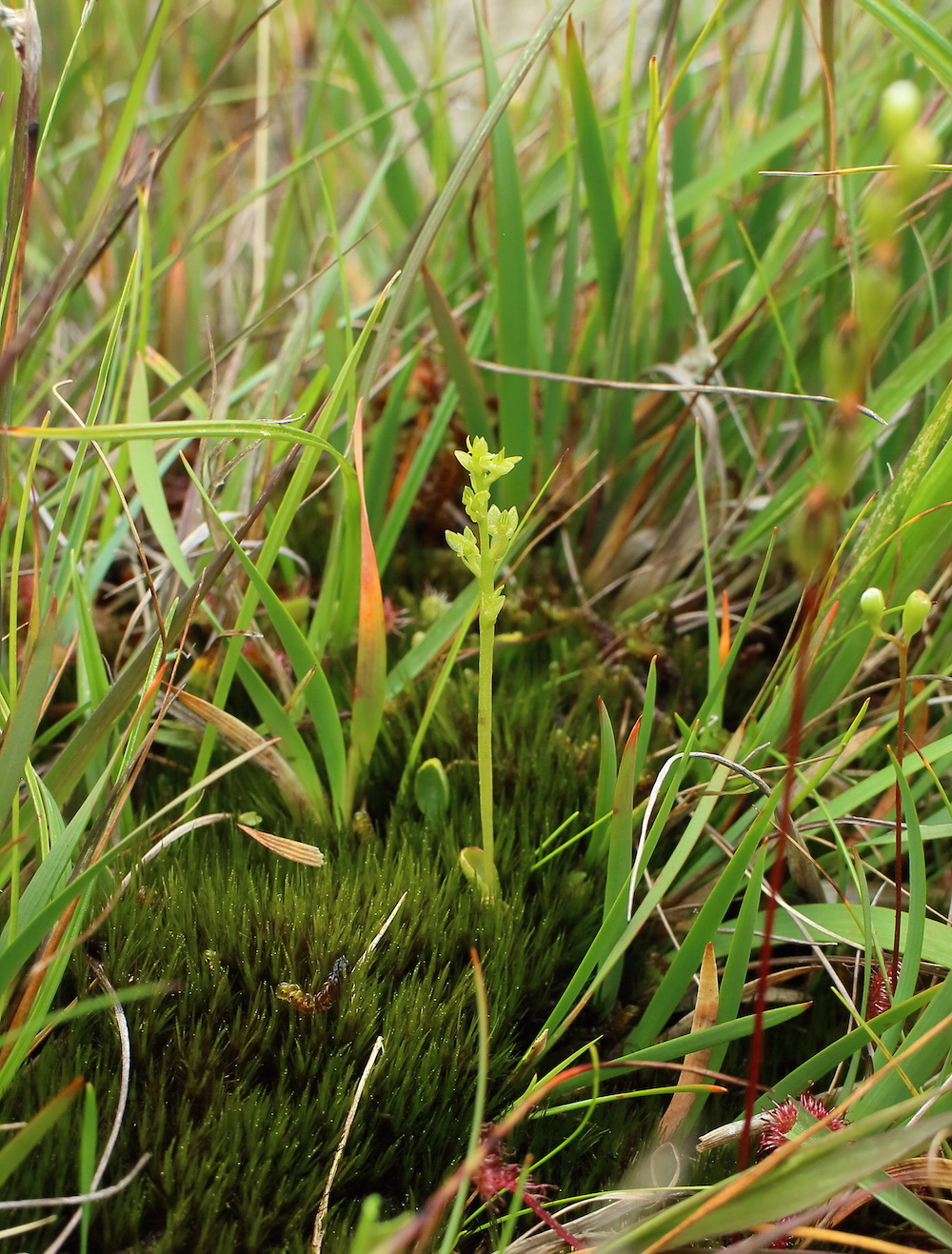
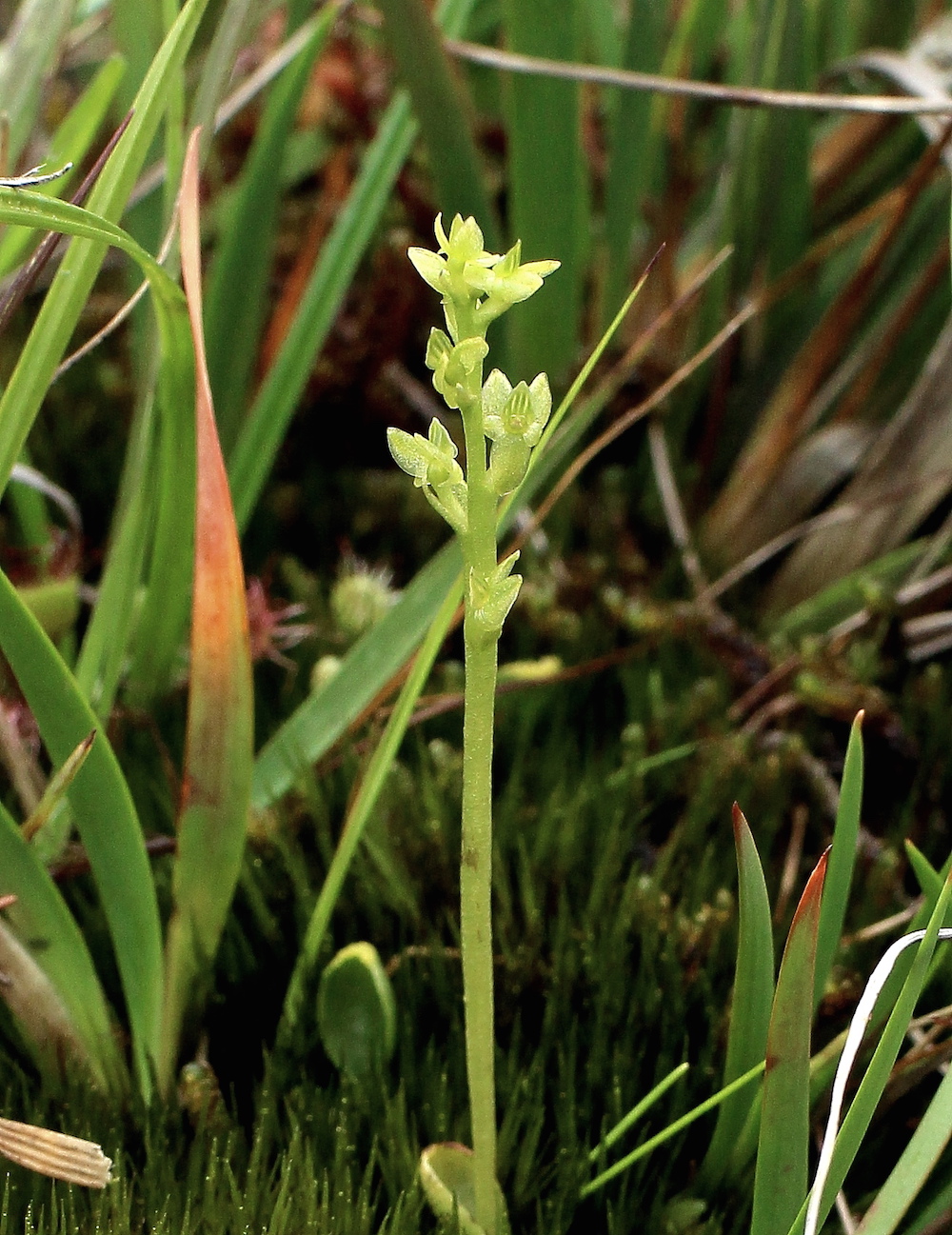
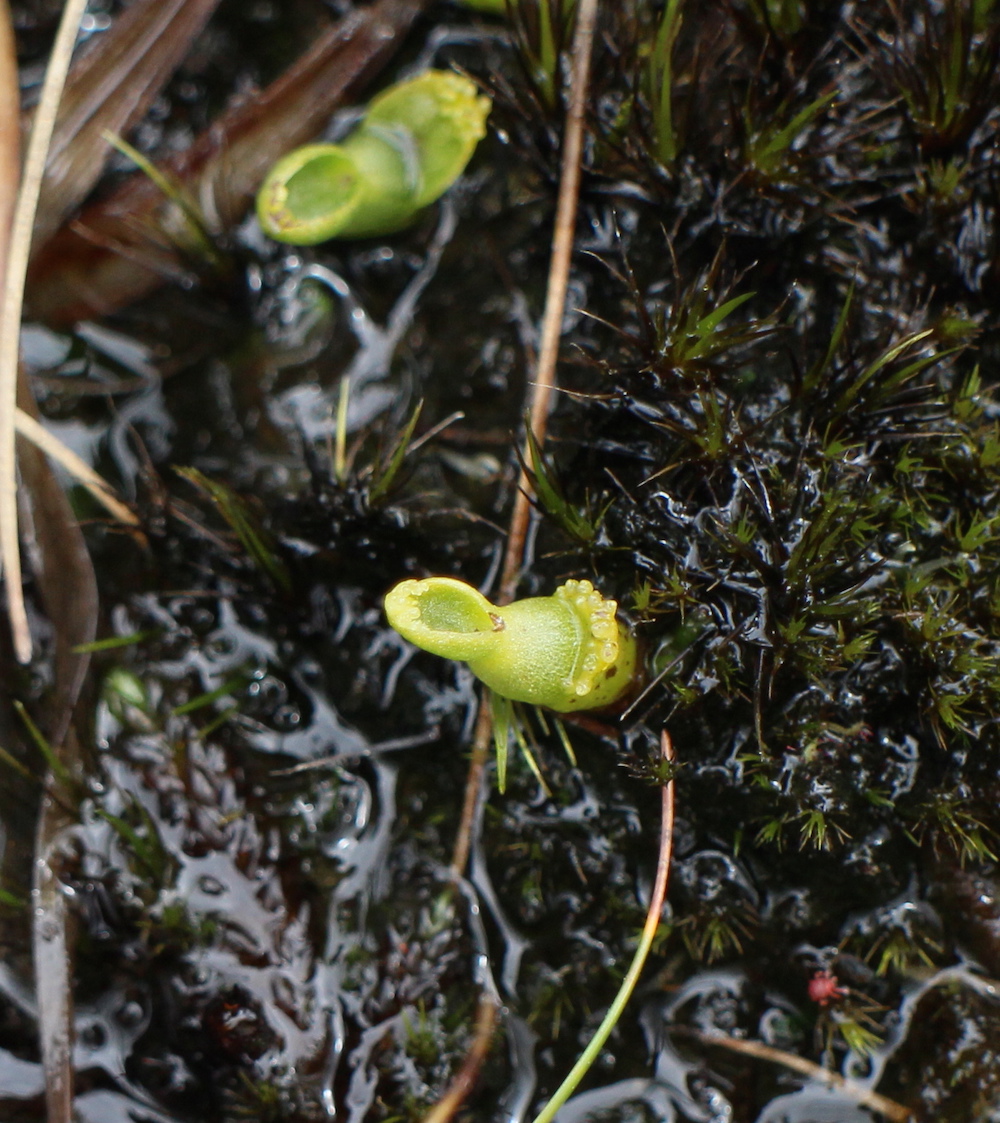
July 31:
A walk along the boardwalk over Bowness Common (starting from the RSPB carpark at North Plain Farm. Most surprised to see a good colony of about twelve large plants of Fine-leaved Water-dropwort, Oenanthe aquatica, by one of the ponds just before the hill up to Rogersceugh Farm.
This is only the second extant county record, the other being in a ditch along the Roman Wall west of Irthington in the north of the county. A surprisingly rare plant in the county.
The Gypsywort, Lycopus europaeus, was in fine form and abundant by one of the ponds at North Plain itself. [JR]
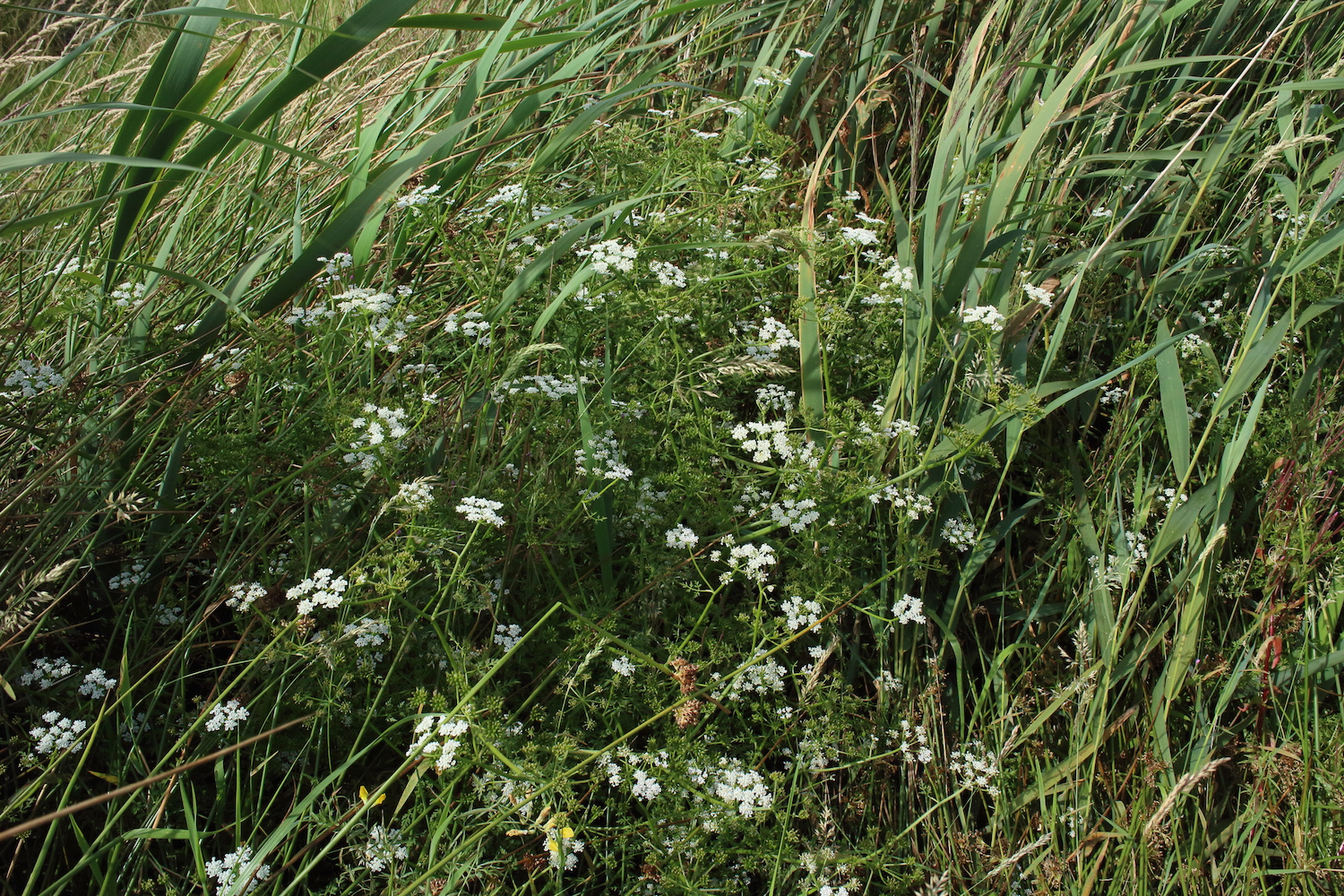
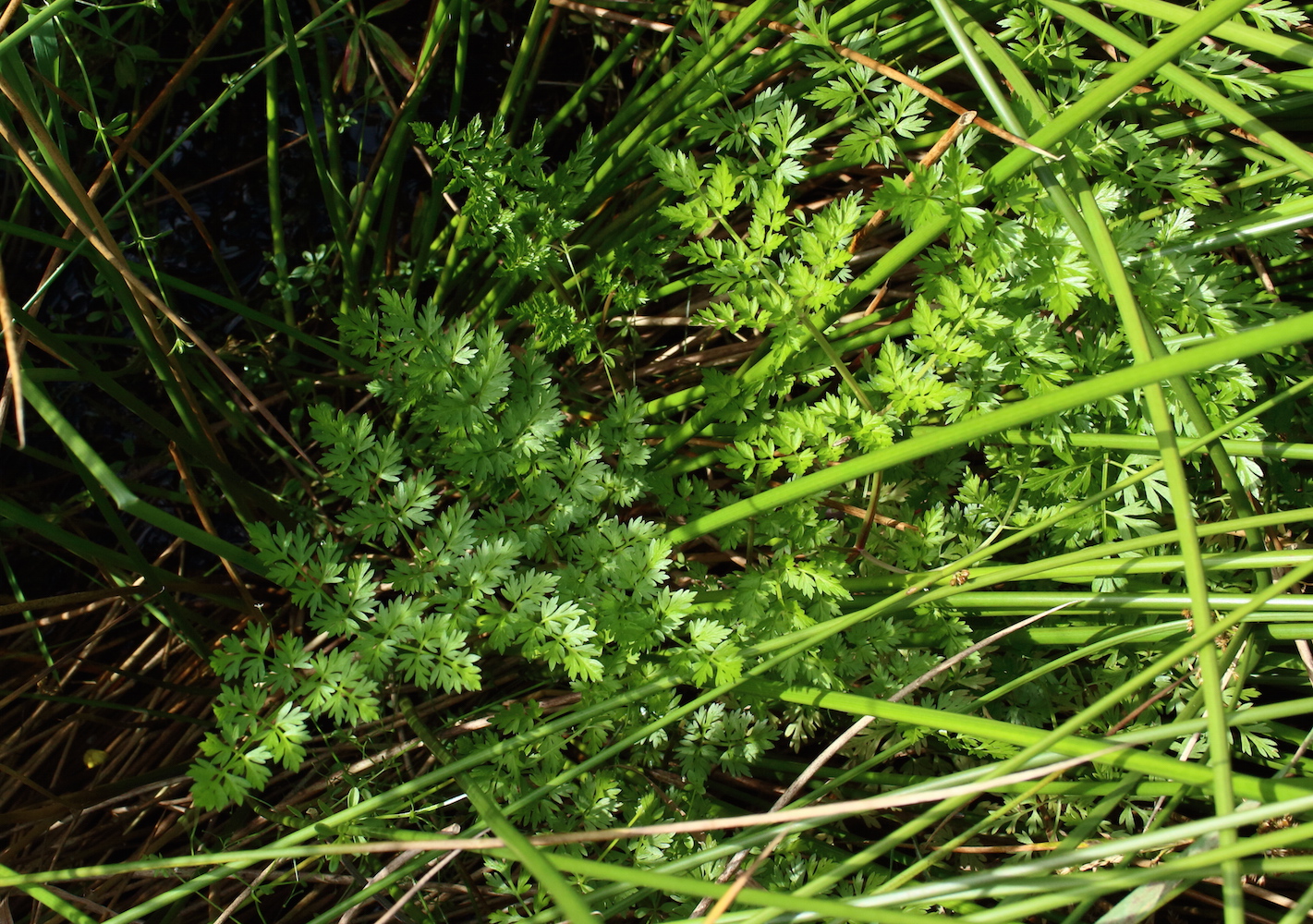
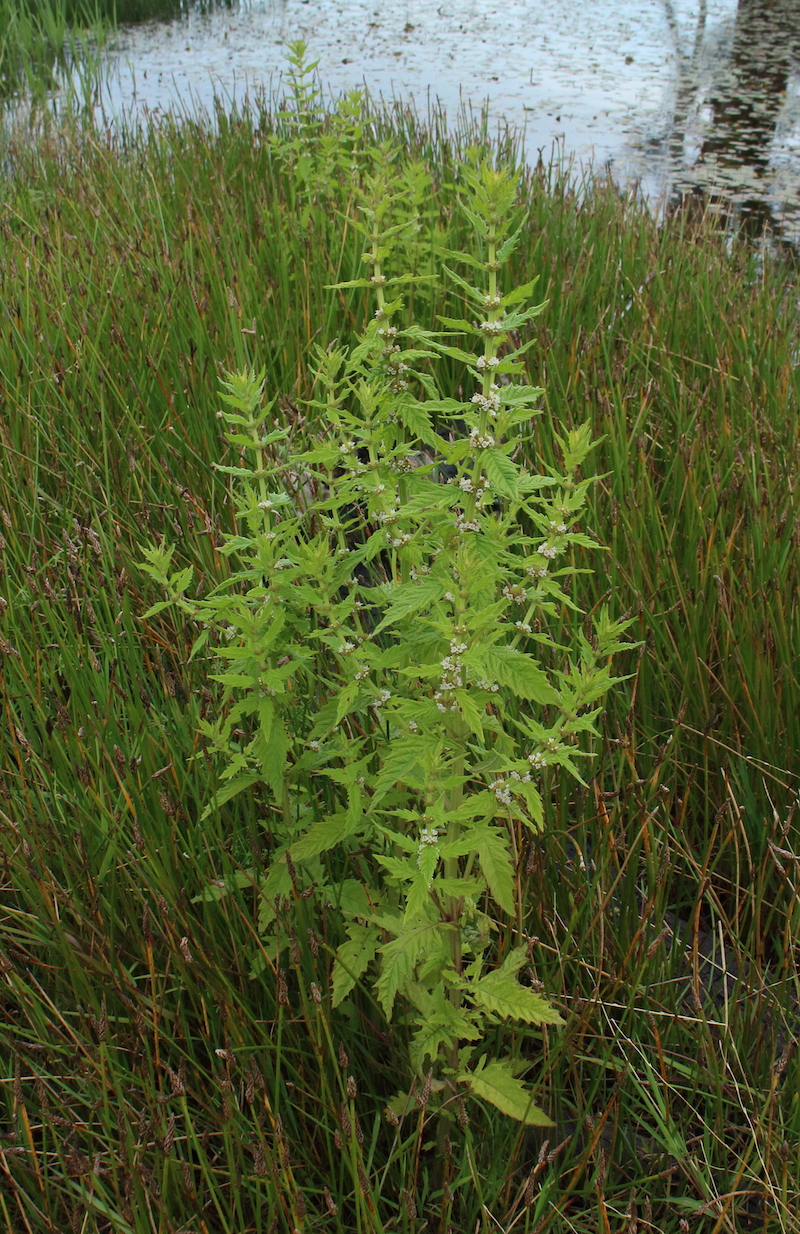
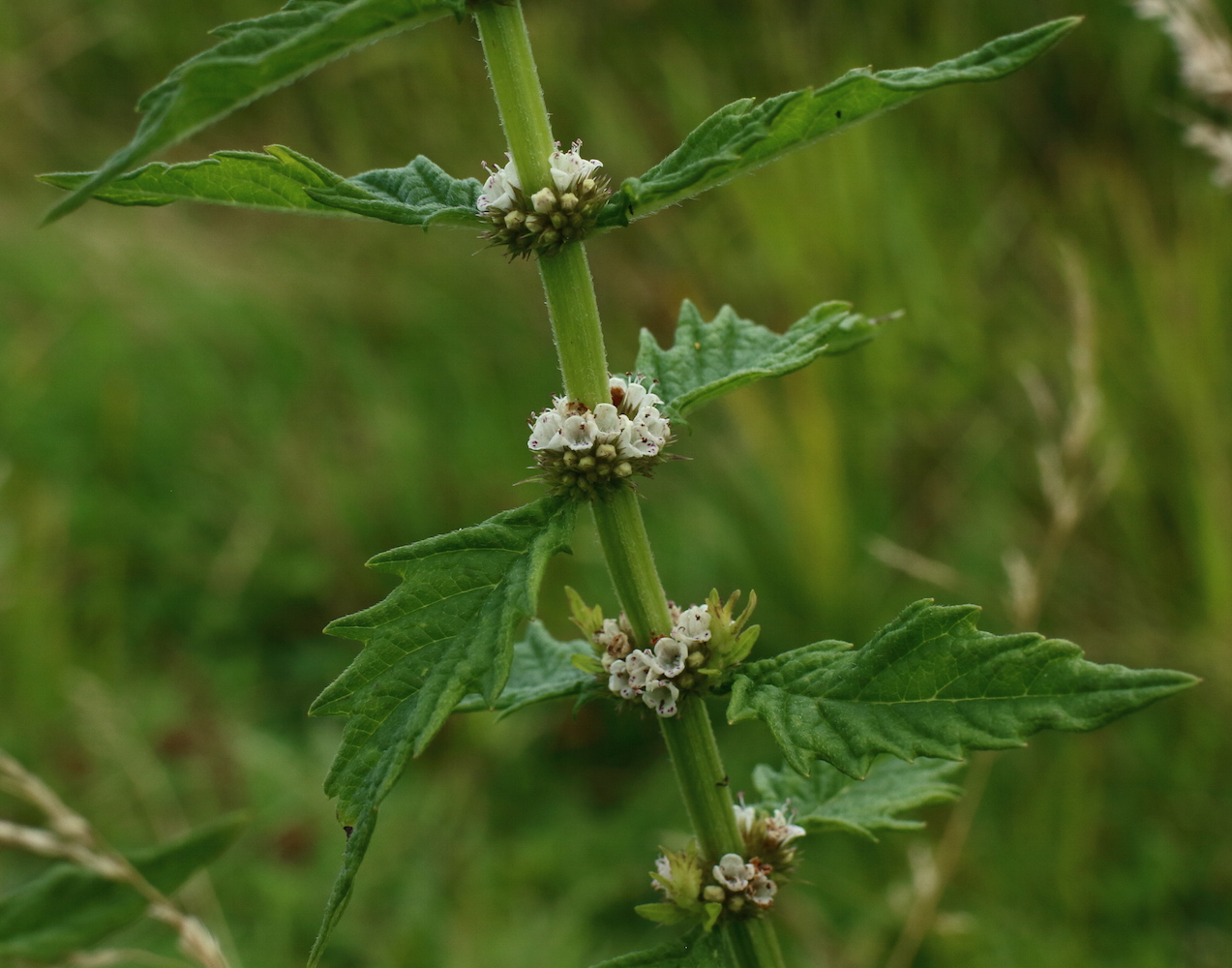
July 14:
Phill and I met with RSPB manager at Haweswater Reserve, Lee Schofield, and we looked at a section of the Reserve along Gatescarth Beck which now has an exclosure fence, and already is illustrating how rapidly such herb-rich areas of the Lakeland uplands (260-330 metres a.s.l.) can ‘recover’ when the vegetation is allowed to ‘go its own way’ for a spell.
Lee has kindly provided more details of this project:
The RSPB, in partnership with United Utilities, plan to develop an area at Mardale Head to show off the diversity of Lake District flora. They have identified an area, already reasonably botanically rich, that will be fenced to exclude livestock and deer to encourage greater diversity.
Nearby Harter Fell is well known as a crag with a good mountain flora, but the many wonderful and colourful species that grow here are out of sight from the general public. Many plants that we consider ‘mountain plants’ only grow on crags and ledges since these are the only places that they can escape grazing pressure. Given the opportunity, these species will happily grow in more easily accessible areas.
There are various places around the UK where livestock exclosures have been put up and a diverse upland sward can now be seen, Ben Lawers in Scotland being one of the most well known. There are no equivalents in the Lake District, so it is hoped that over time, this area at Haweswater will develop into a place where visitors can come to appreciate the diverse and beautiful suite of species that were once so much more widespread.
Besides three saxifrage species (Mossy; Starry; Yellow) and many other herbs, most striking was the presence of about thirty plants of Alchemilla wichurae, Rock Lady’s-mantle, down the stream-banks.
This is the only place so far in Lakeland where I have ever seen this species ‘come down off the cliffs’. Of course, it was already here in the pre-exclosure flora, but overlooked until now amongst the small, grazed, Alchemilla glabra plants, when it has had a chance to shine!
There was also a superb patch of the lichen Peltigera leucophlebia – one of the three species of bright green dog-lichen with a green-alga Coccomyxa as its main algal complement. (Most Peltigeras have the blue-green Nostoc, and so look some shade of brown, grey or purple. These green ones still have Nostoc, but only in the little ‘warts’ – cephalodia – on the surface.) [JR]
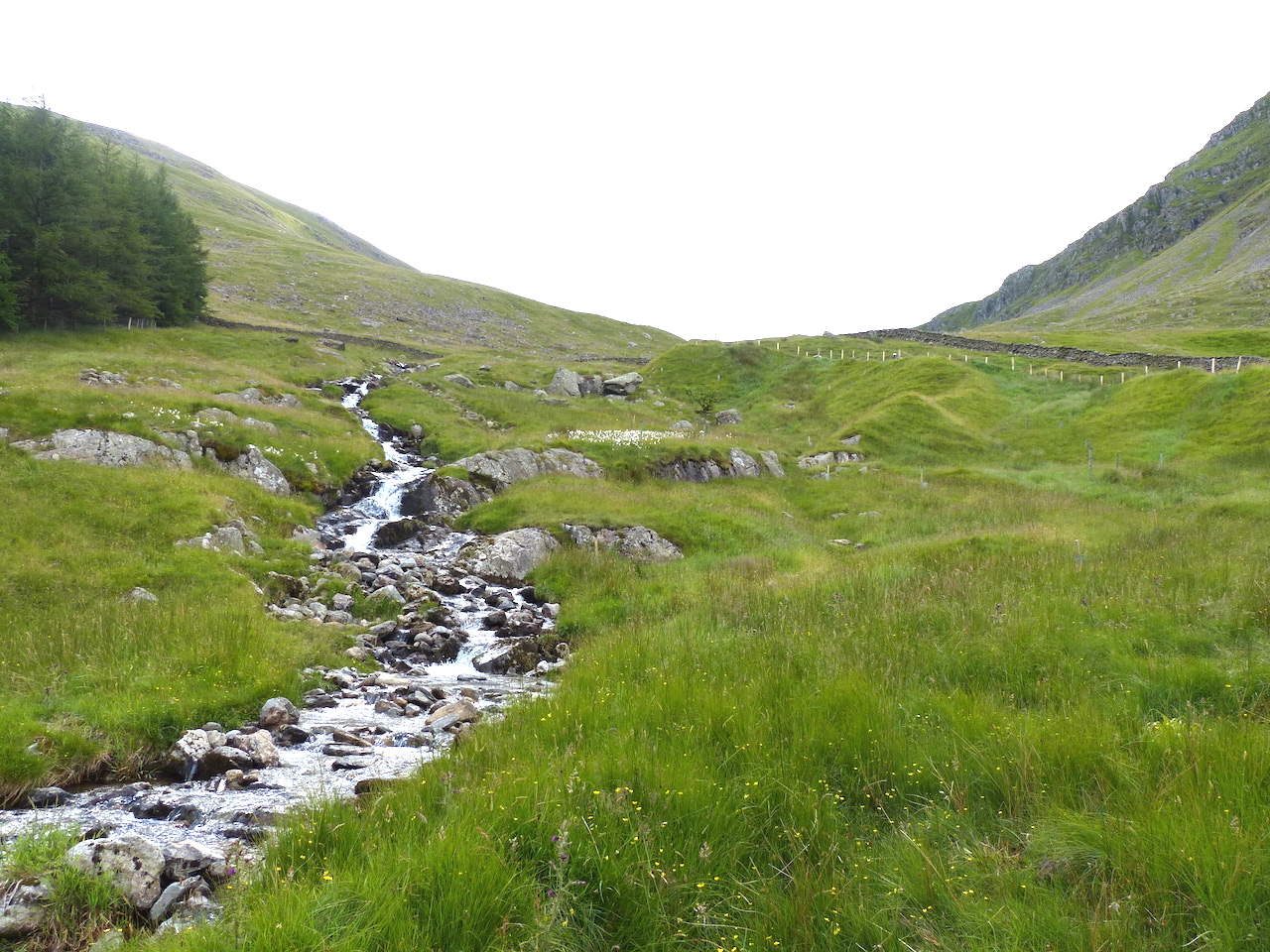
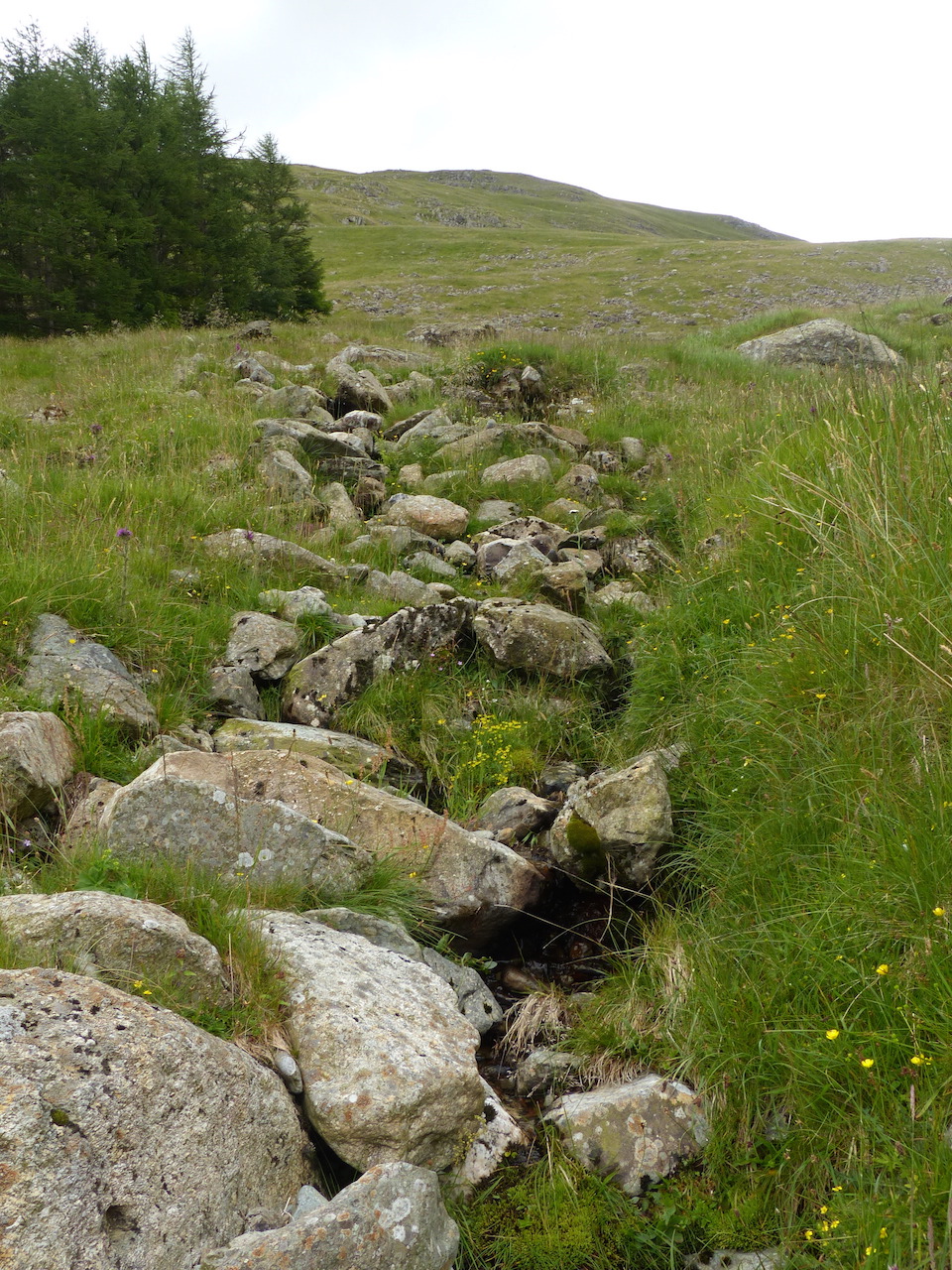
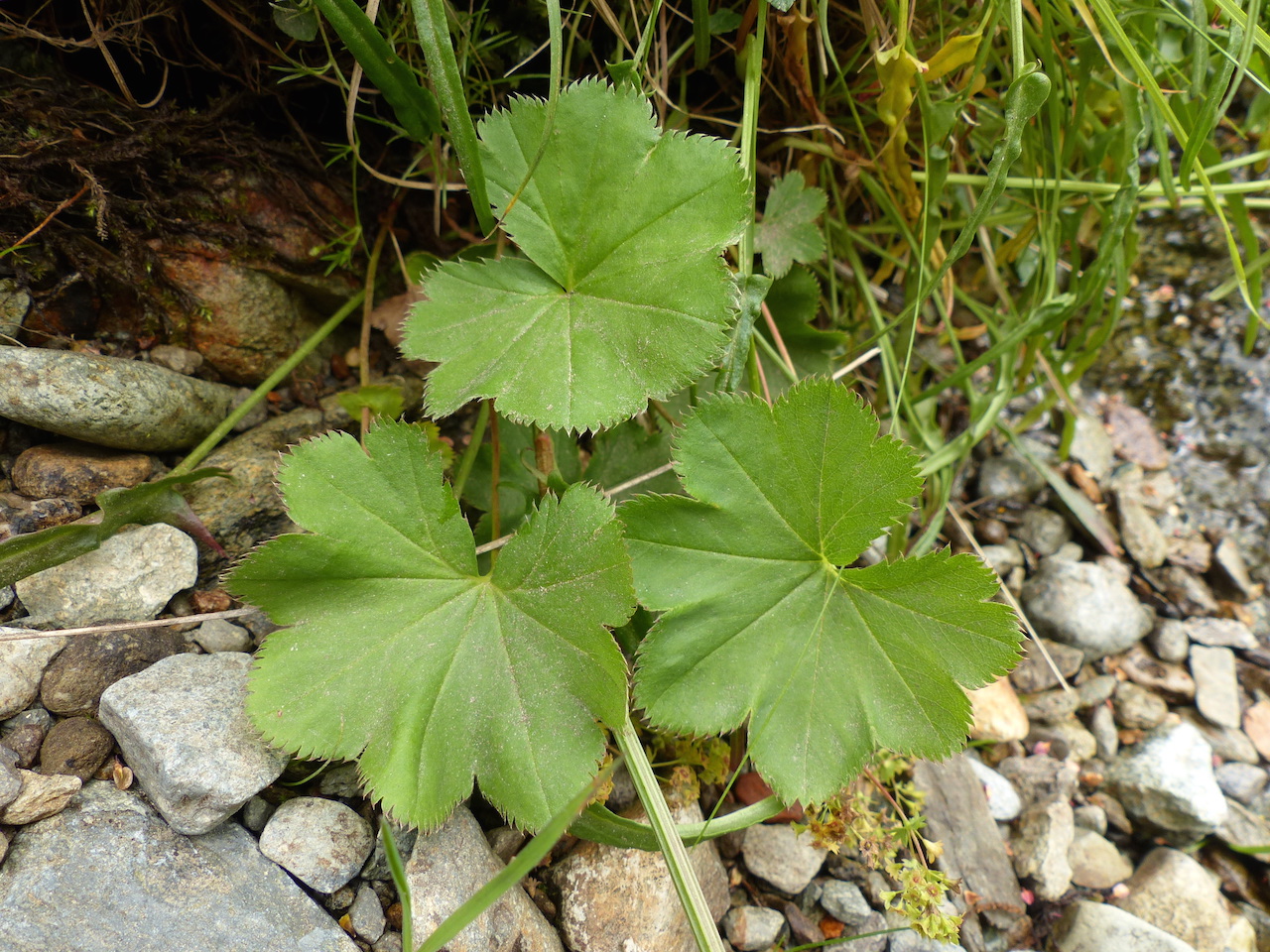
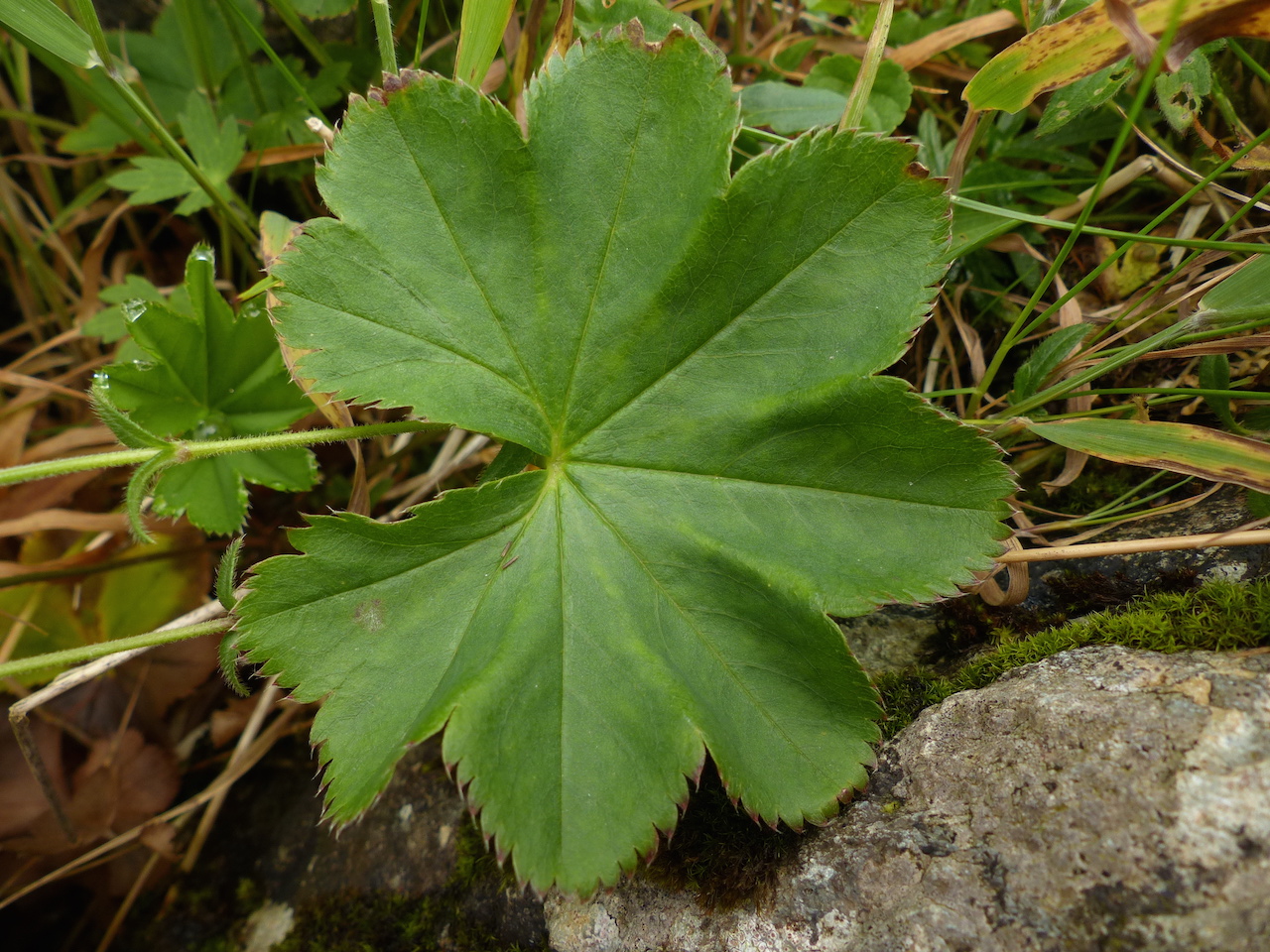
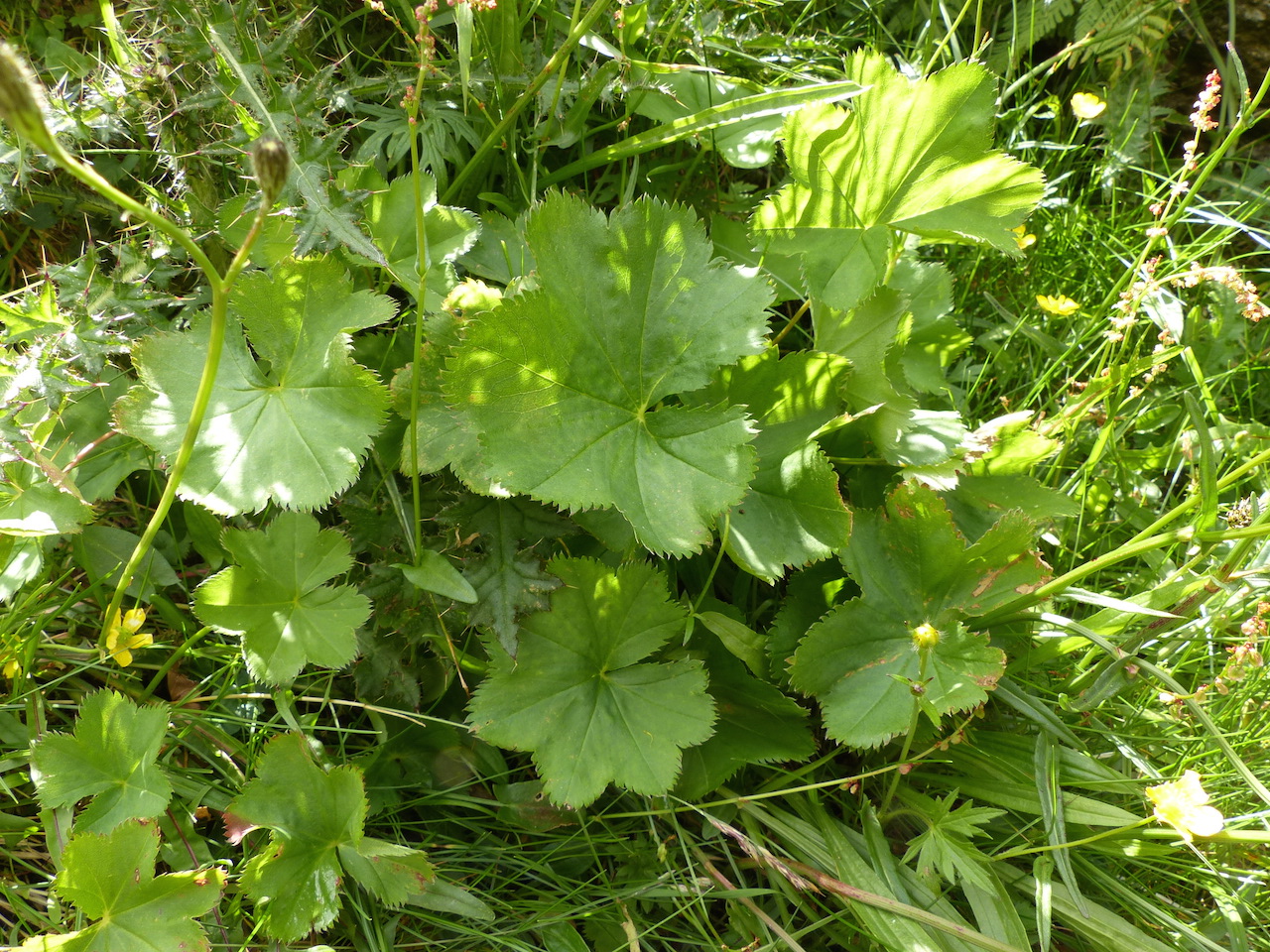
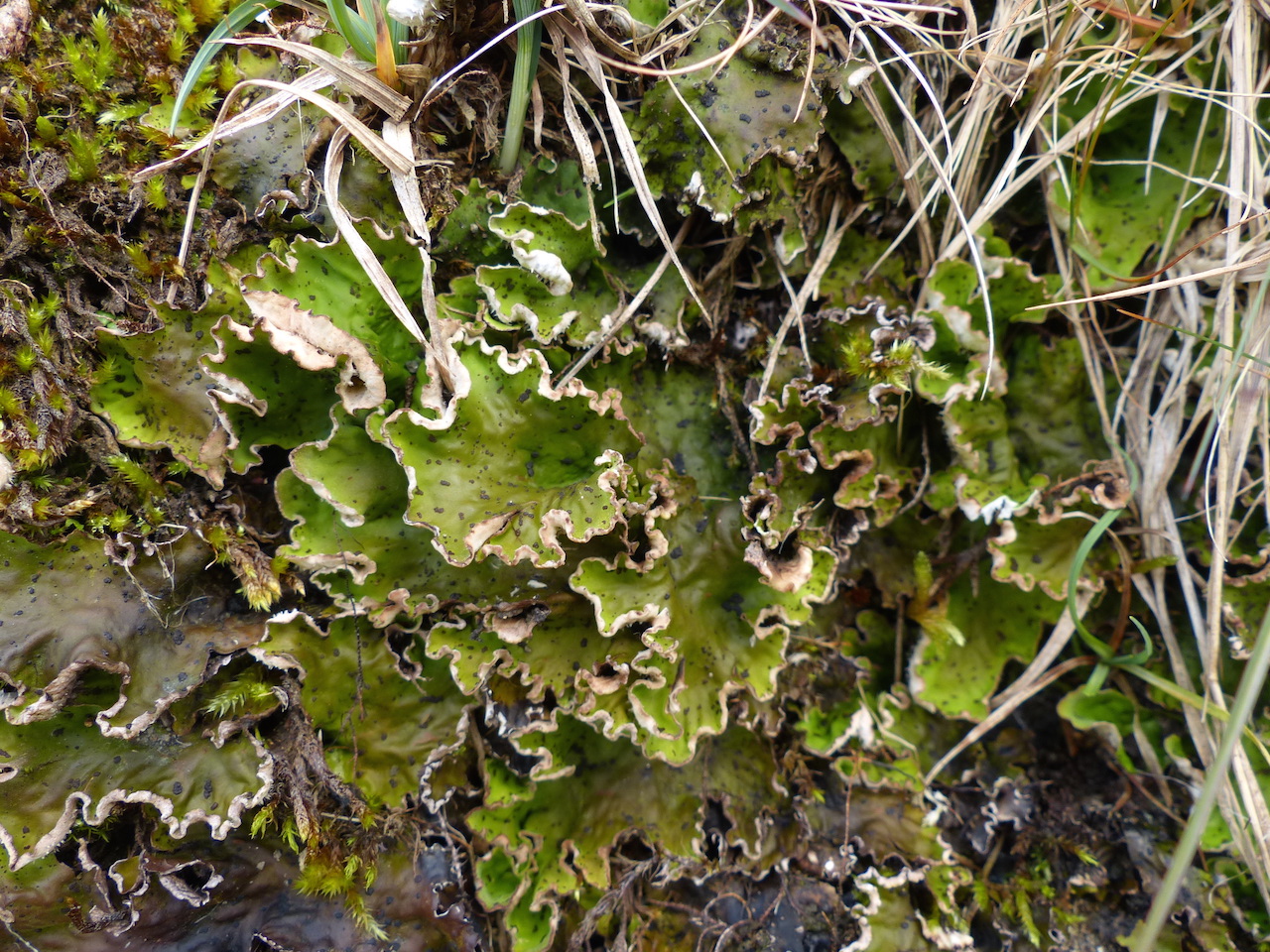
At the end of the day we dropped down to look at the large areas of silt in the draw-down zone at the head of the reservoir. All plants were very tiny, perhaps partly through exposure to the elements (altitude 245 metres a.s.l.) here and partly the frequent grazing of Canada, Barnacle, and Grey-lag Geese!
The main colonists were in sheets: flowering Water Purslane, Lythrum portula, and two water-starworts, Callitriche. Some of the latter was the usual Common Water-starwort, C. stagnalis, with spoon-shaped leaves, but the other one, narrower-leaved, much commoner, and indeed in tens of thousands, was puzzling, until Phill washed the silt off some plants and found that the ripe fruits, previously buried, were black – an unusual character in Callitriche, but characteristic of Narrow-fruited Water-starwort, Callitriche palustris, a species new to Cumbria.
31st July update: The BSBI referee for the genus, Richard Lansdown, has confirmed our identification, but adds that the various other records for England (currently about 20 in the BSBI Distribution Database, in 12 vice-counties) remain unconfirmed, and hence this Haweswater colony would seem to be the first confirmed English record! [JR]
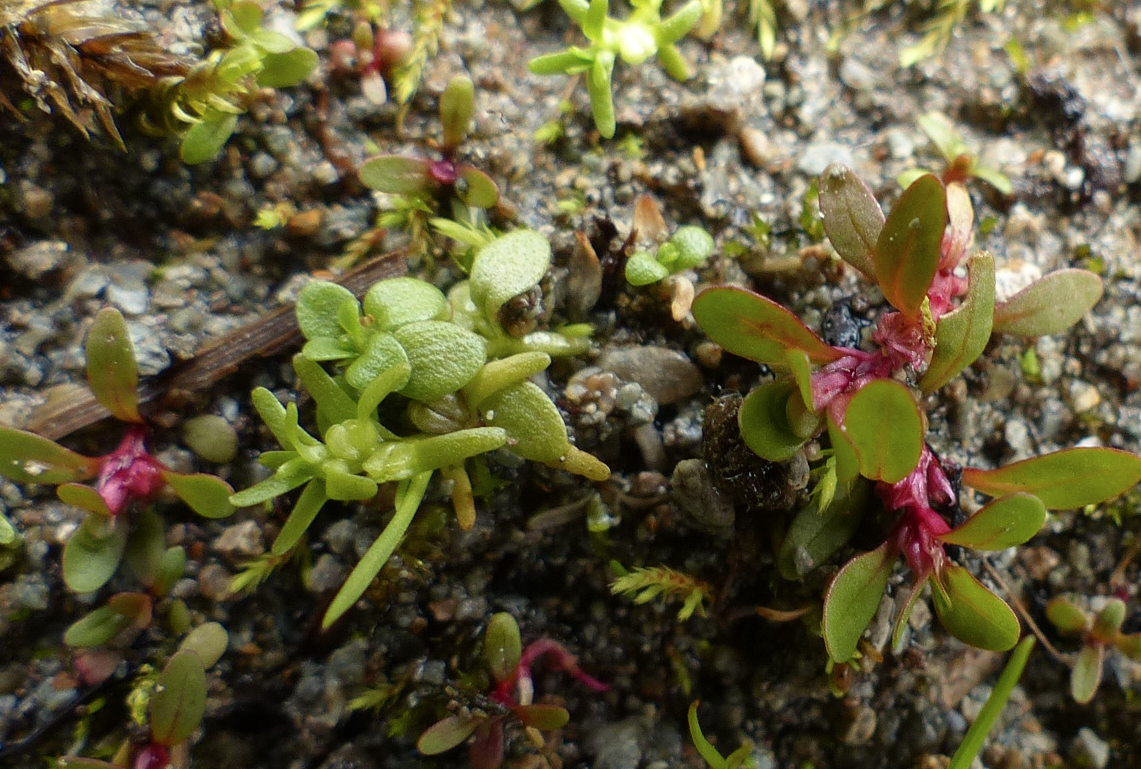
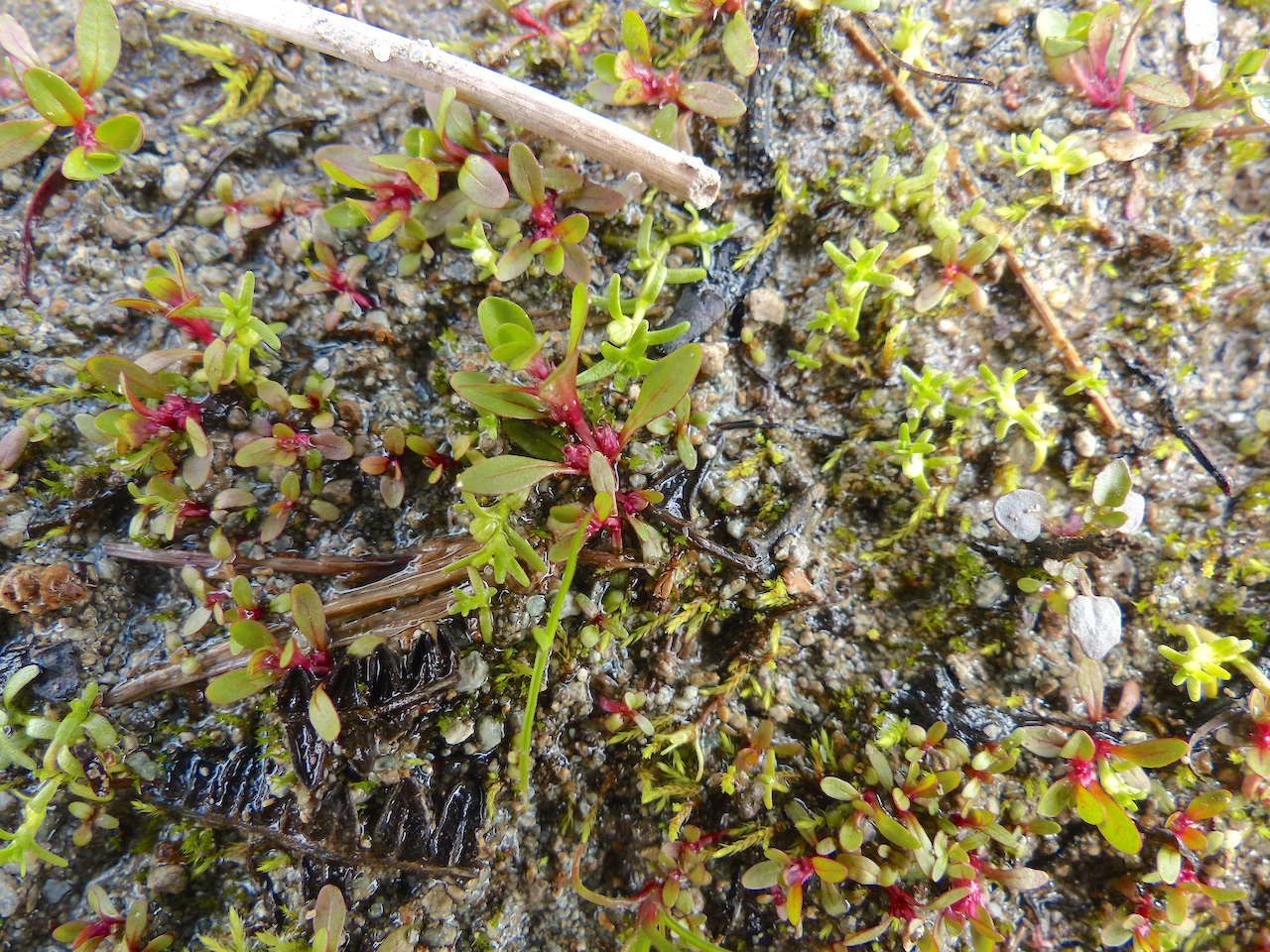
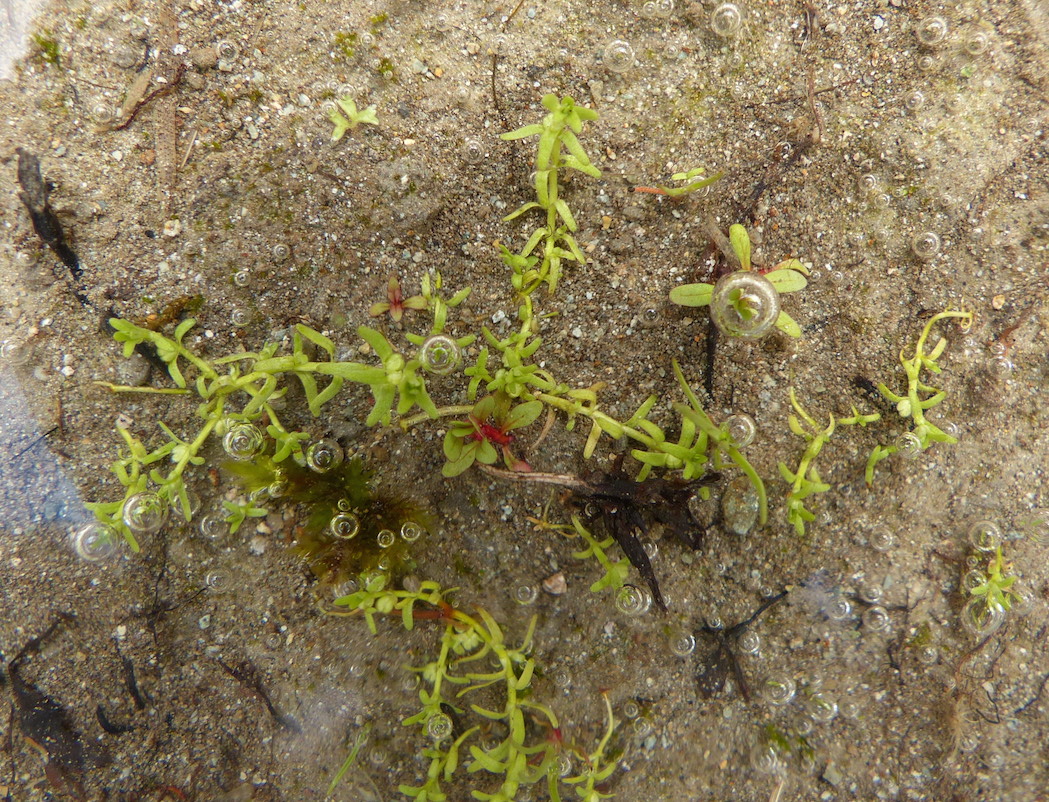
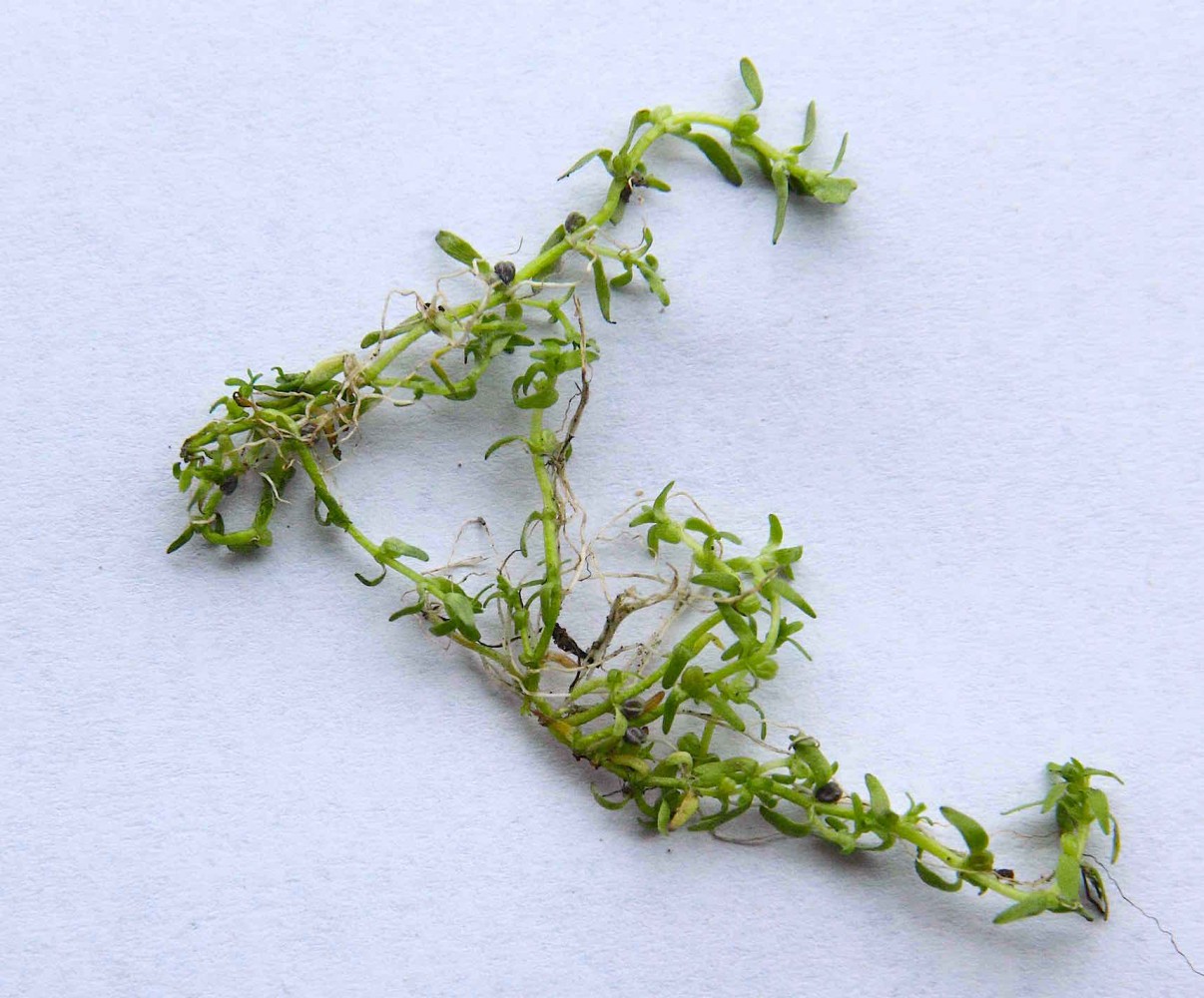

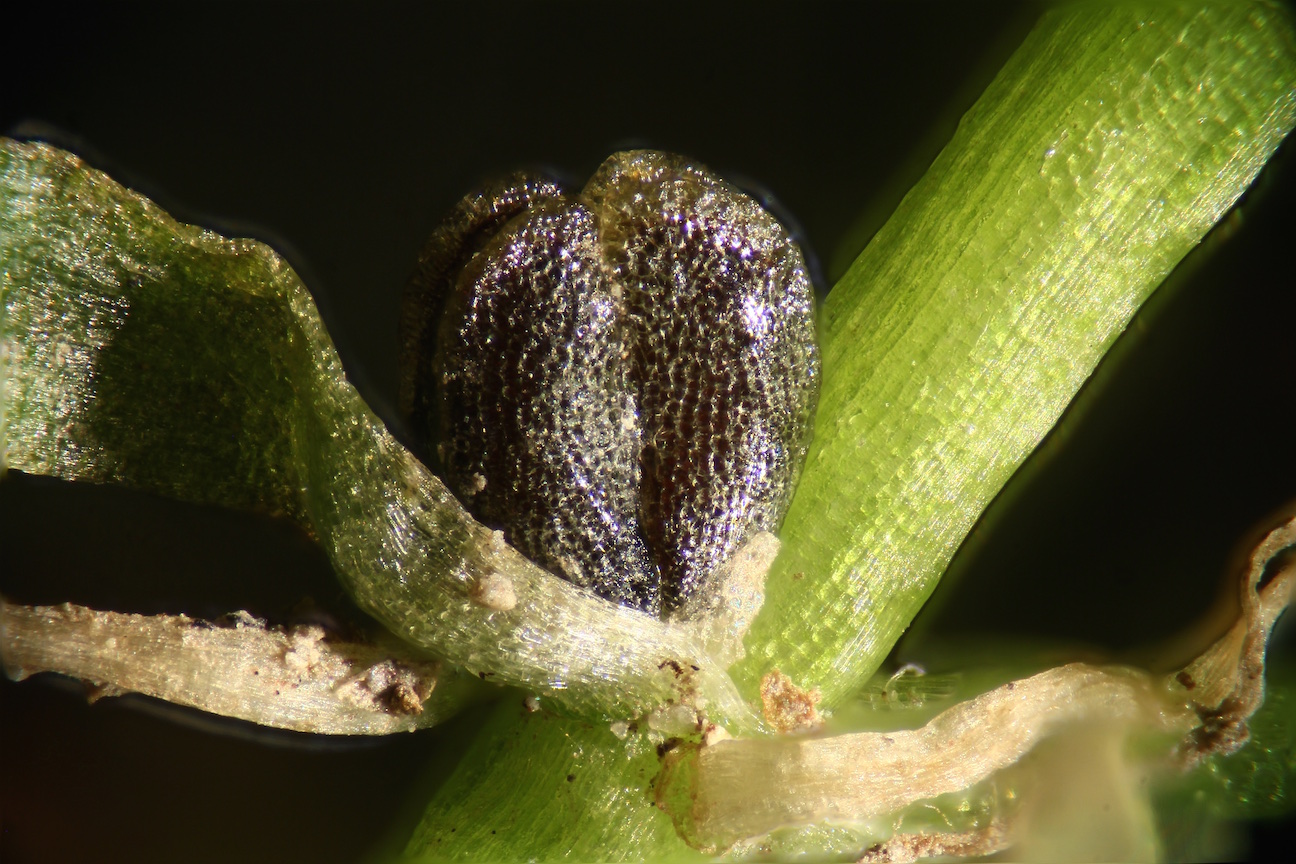
Other plants: some gravel beds had lots of tiny plants of Corn Spurrey, Spergula arvensis – a rapidly declining plant in UK as an arable weed. However, A Flora of Cumbria does mention its occurrence on the draw-down zones of reservoirs.
Further up in the grassy fringes were a few plants of Heath Dog-violet, Viola canina, evidently not recorded previously in this catchment, and probably a colonist onto gravel at some earlier stage when water-levels were higher. (It is on lakeside gravel in the Lake District, e.g. by Ullswater and especially frequent along some stretches of the eastern shore of Derwent Water.) [JR]
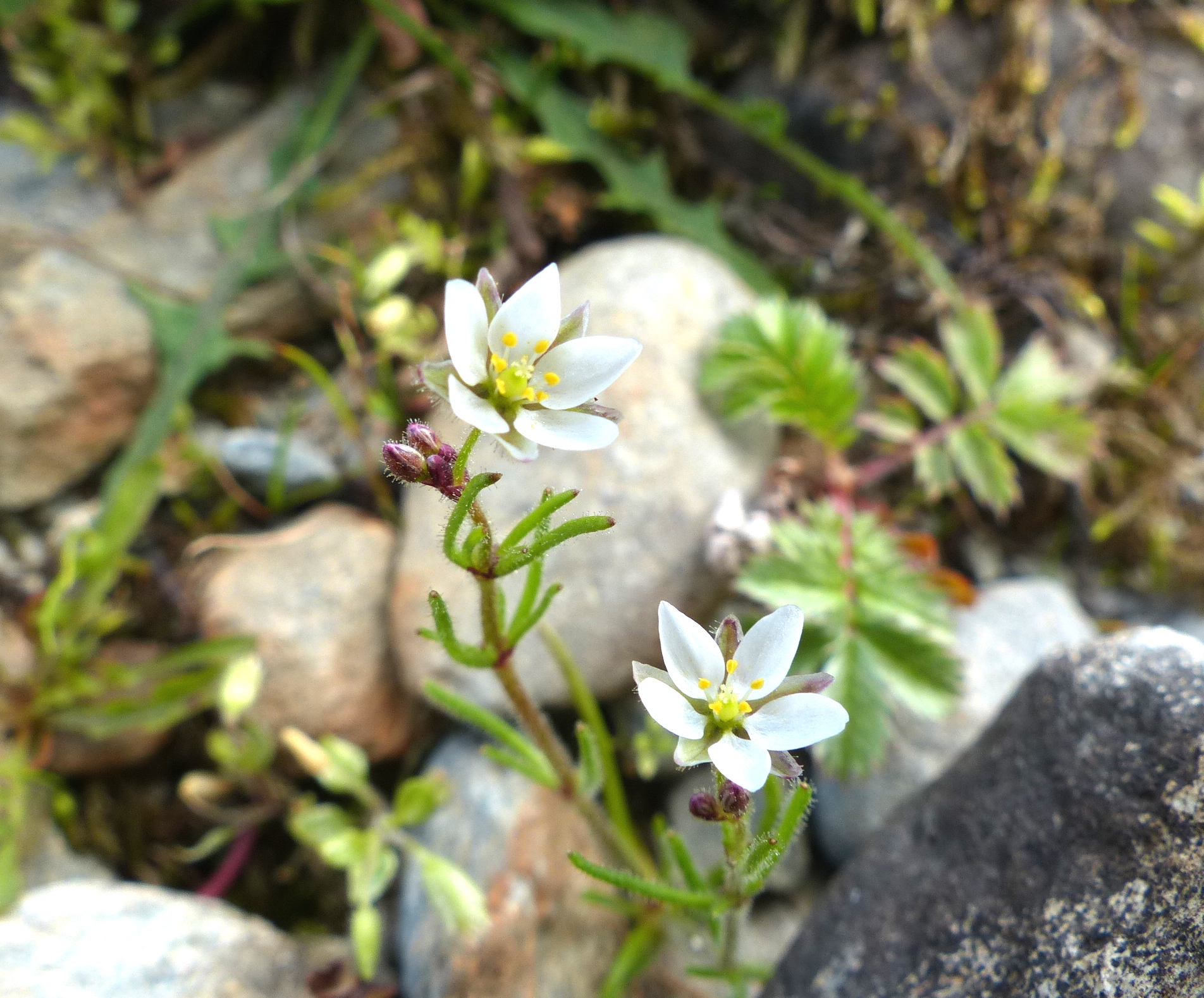
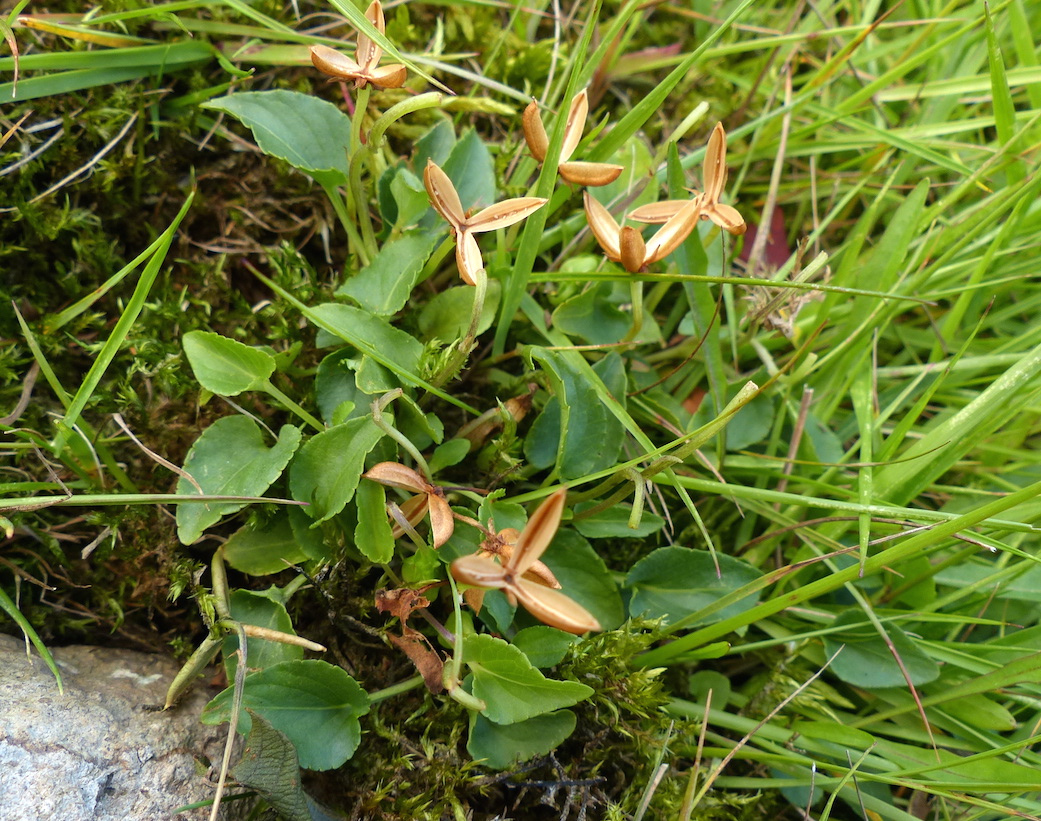
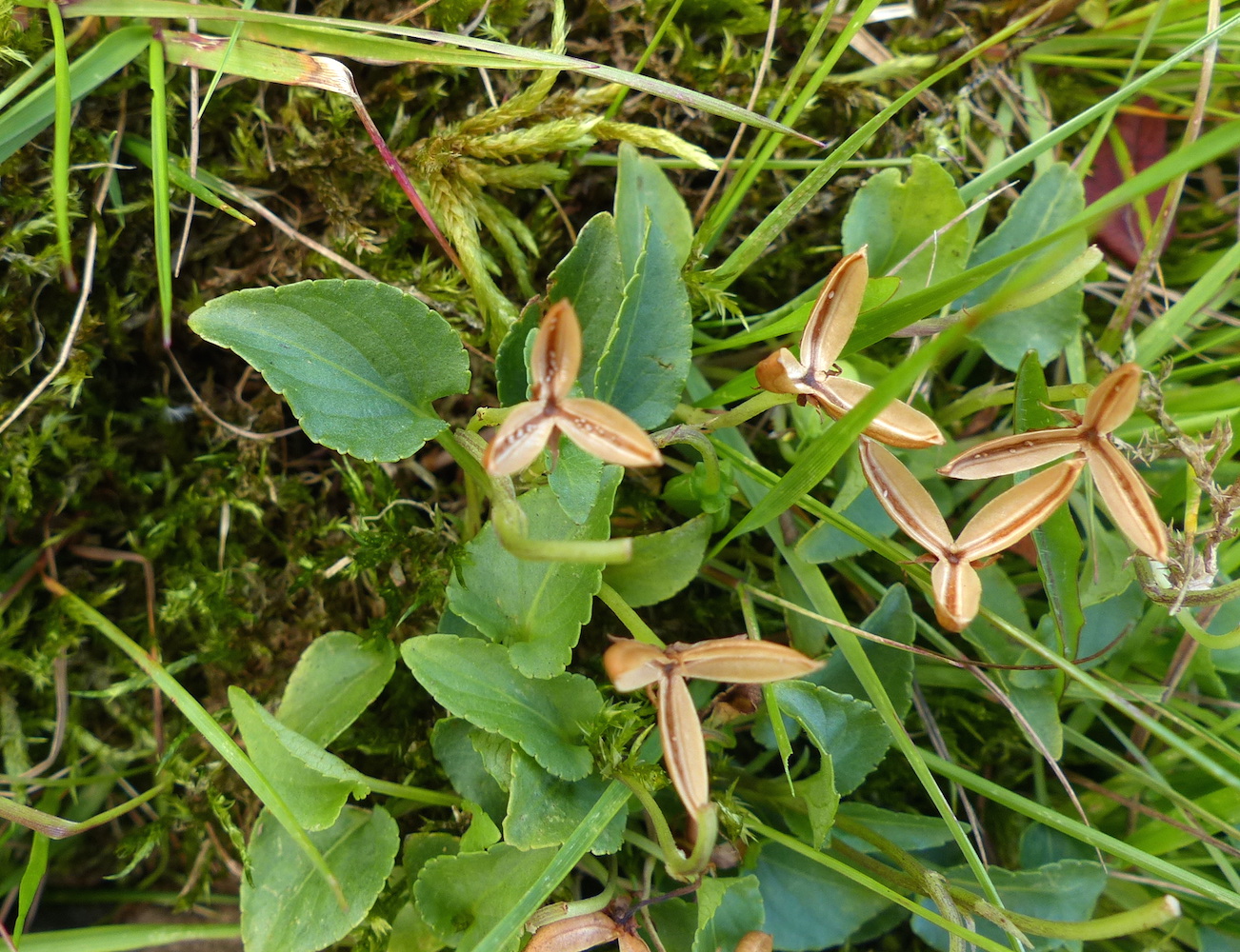
2015
September 3:
Nigel Gilligan made a good find at the southern end of Millom Docks – as Nigel says, “an arid and hostile environment for most plants”: Vervain, Verbena officinalis. [photos by NG]
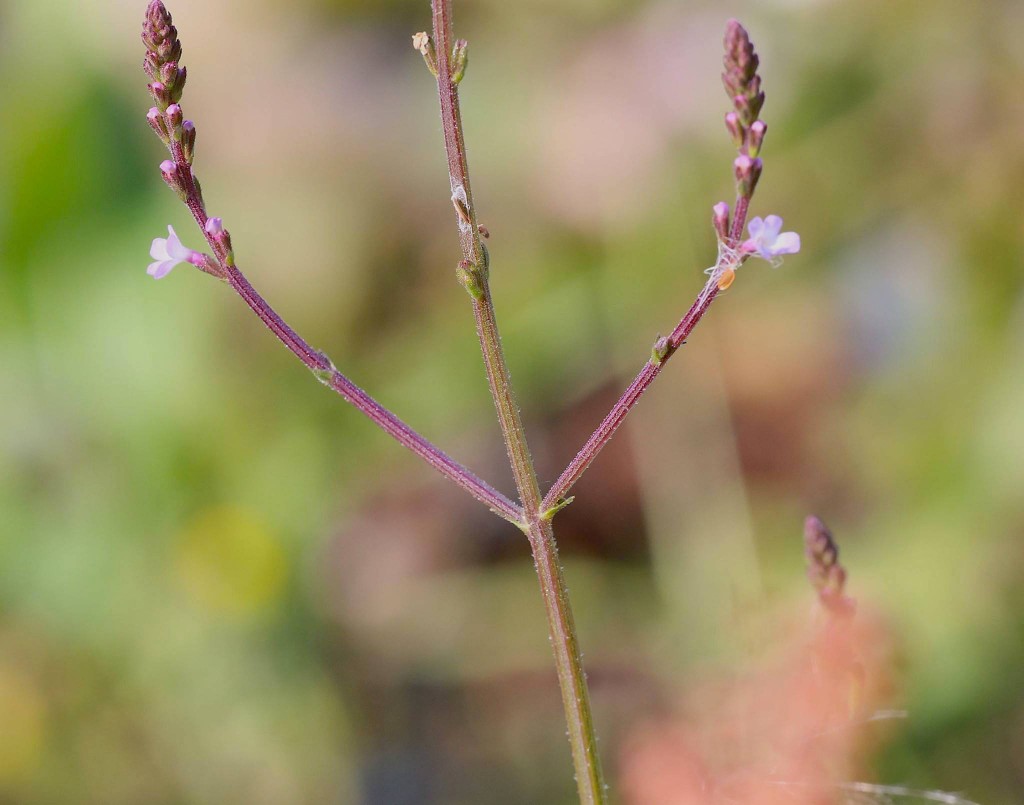
This appears to have very few recent records for the county, and it is good news that it is still around.
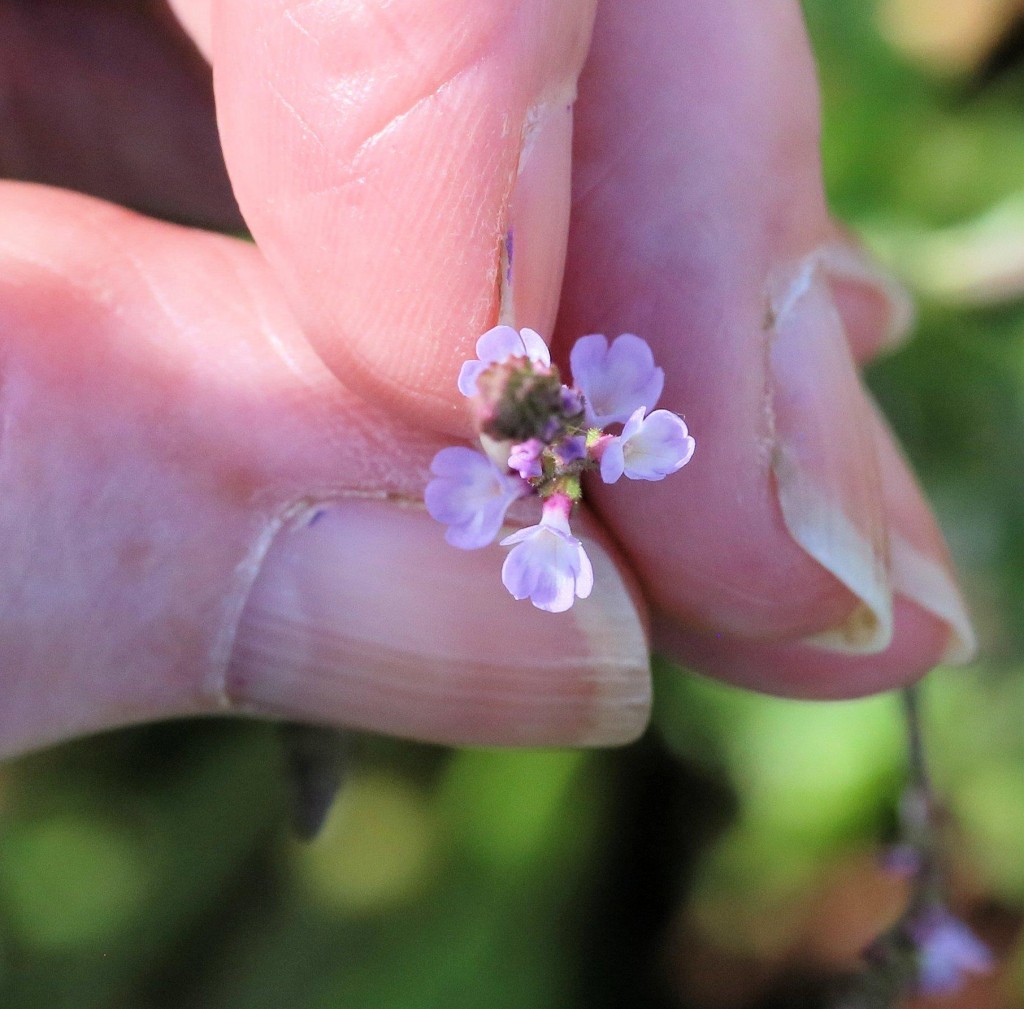
July 29:
Lois Harbron writes: “I was at Augill Pasture Cumbria Wildlife Trust reserve on 21 July, counting the second flush of Frog Orchids, Dactylorhiza [Coeloglossum] viridis, and spotted an obvious hybrid of some sort from a little distance. On closer observation, I was sure it was a Frog/Common Spotted hybrid [× Dactyloglossum mixtum*], given its appearance and neighbours. Luckily I was due to meet Alan Gendle nearby. He was happy to confirm my sighting, and sent photos to Richard Bateman. I was lucky not only to find it, but in that the plant was at its peak, a lovely specimen.” I am delighted to add her fine picture here.
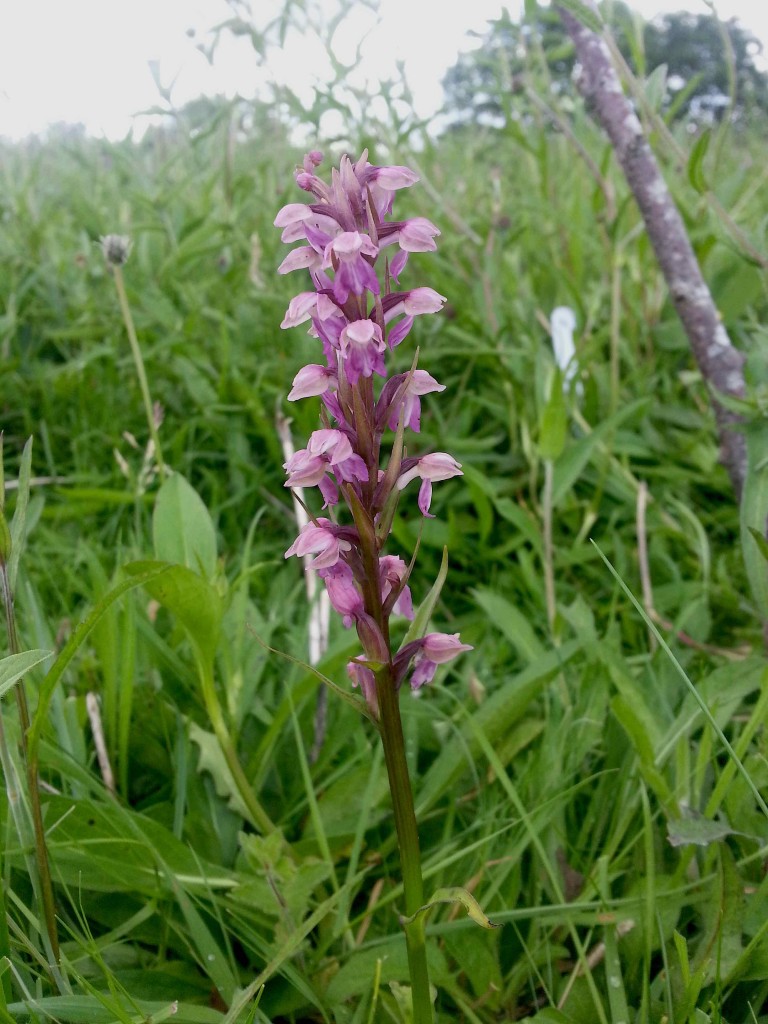
The form of the flowers is reminiscent of Frog Orchid, except the lip is three-lobed (two-lobed in Frog) and the spur is longer. The colour of course matches that of the Spotted-orchid parent, with loop-markings on the lip somewhat ‘faded’ in this example.
![Close-up of flowers [LH]](http://www.cumbriabotany.co.uk/wordpress/wp-content/uploads/2015/06/xDactyloglossum-mixtum-closer-676x1024.jpg)
Is this hybrid new to the Cumbrian vice-counties? There’s no mention in A Flora of Cumbria, and the BSBI Distribution Database currently has no record. The only other record for the whole of northern England that I’ve spotted is in the new Hybrid Flora which seems to be that mentioned in the Distribution Database from Co. Durham by Heslop-Harrison in 1964, but with no more recent record given there. The Hybrid Flora reports the hybrid in a total of 28 hectads in the British Isles, with most in south-central England and the Outer Hebrides.
(*On the question of the abandonment of the much-loved generic name Coeloglossum for Frog Orchid, and its transfer to Dactylorhiza, I note that the Hybrid Flora just published says “the present evidence for the separation or amalgamation [of these two genera] is somewhat equivocal”, echoing Stace’s comments (New Flora, 3rd ed., 2010), “Coeloglossum is morphologically very distinct, and molecular evidence suggesting its amalgamation with Dactylorhiza is not yet unequivocal”. No prizes for guessing which side of the fence I prefer on this vexatious issue. As far as the correct nomenclature for the hybrid goes, the epithet mixtum appears to apply whether the hybrid resides in Dactylorhiza or in × Dactyloglossum.) [JR]
July 19:
Much recording going on around the county!
One of my favourite plants, Campanula glomerata, Clustered Bellflower, is showing well at a few sites in the county.
In the open and sunny sites on thin limestone soils east of Shap, even at 340 metres altitude, a few shoots are already in flower, but more are still in early bud. Typical heights of shoots are about 30 centimetres.

Meanwhile, by the River Eden, at only 60 metres altitude, a plant in tall riverside vegetation is still managing to survive, but its stems are a metre tall to compete with surrounding perennials, and it is not quite in flower as yet. [JR]

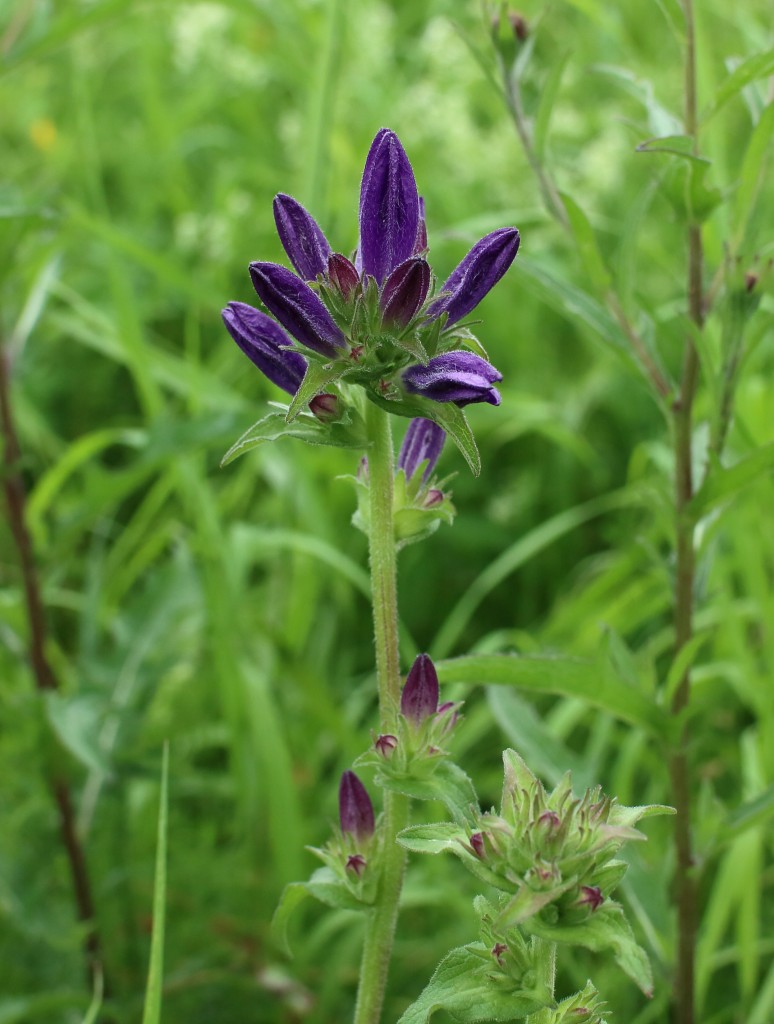
July 12:
Before a Carlisle Natural History Society outing at Clints Quarry CWT Reserve, we called in at Maryport Marina. The Yarrow Broomrape ~ Orobanche pupurea was in astonishing abundance over a large area: has anyone had time to do a thorough count in recent years?
![Yarrow Broomrape ~ Orobanche purpurea [JR]](http://www.cumbriabotany.co.uk/wordpress/wp-content/uploads/2015/06/Yarrow-Broomrape-639x1024.jpg)
It was first found here in 1983 (A Flora of Cumbria). Its existence here is a puzzle, with the nearest sites being in Lincolnshire and South Wales. However it arrived, it is clearly very well-suited to the situation (artificial slag and ballast heaps) and the local climate.
The other great draw is the super-abundance of Pyramidal Orchid ~ Anacamptis pyramidalis. [JR]
June 29:
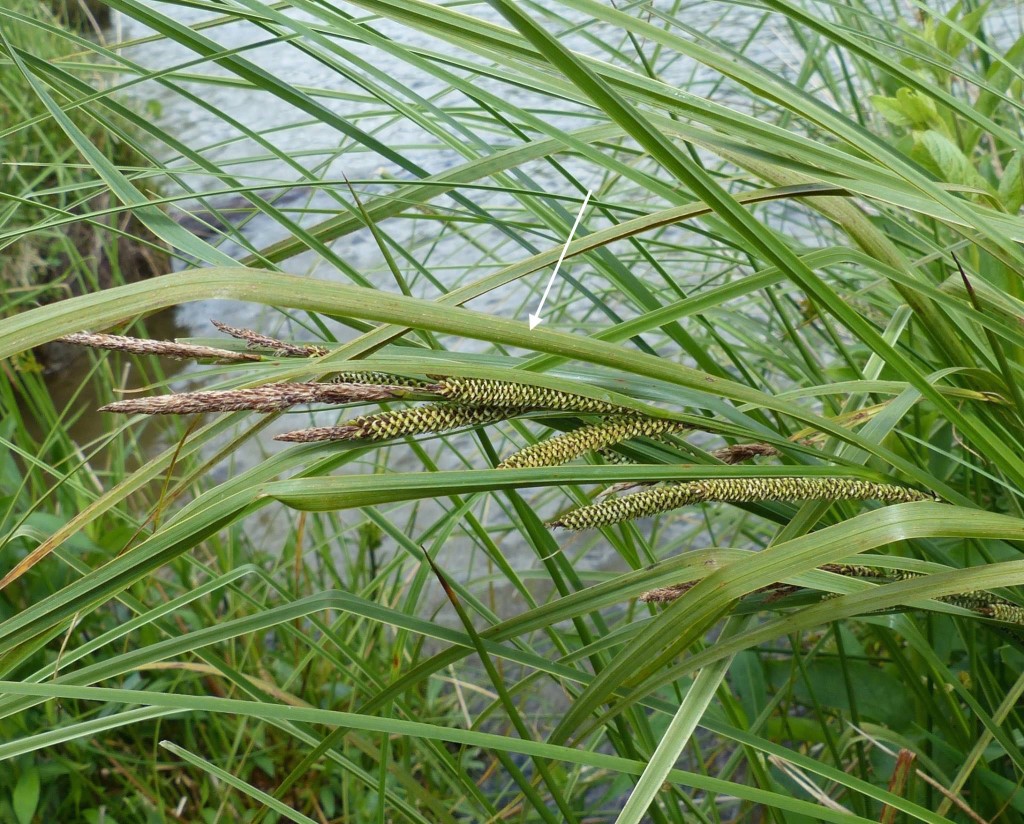
One of the specialities of Borrans Marsh, at the head of Windermere: Carex aquatilis, Water Sedge.
Small forms, not quite so well defined as the one pictured, grow in patches across the marsh itself, but perhaps the best forms occur in small quantity in the strip of marginal vegetation by the river to the west, growing with Typha angustifolia, Lesser Bulrush (*), and other tall emergents.
A member of the Carex nigra (Common Sedge) group, it has just two stigmas (thus distinct from a great many other sedges, which have three, although only useful before the stigmas shrivel, and eventually are shed).
It is closest to Carex nigra itself, in being patch-forming rather than strongly tufted, and in having the stomata on the upper or inner surfaces of the leaf, making that surface matt and grey, whilst the lower or outer surface has few stomata and so is shiny and green.
It is easy to tell from C. nigra by its usually much greater vigour, smooth edges to the more rounded stems below the inflorescence, very long female spikelets narrowing below (well shown here), and especially by the very conspicuous, leaf-like, channelled, wide, and long bracts: the lowest bract (arrowed in the picture) is the best-developed, and often greatly overtops the whole inflorescence. (The two do hybridise, however, and some populations may show introgression.)
The finest UK sites are probably those in the Spey Marshes, where the plant may be dominant, and over 1.5 metres tall. In a strong wind, the long bracts sweep, sway and hiss!
The other patch-forming sedge in this group, Carex acuta, Slender Tufted-seddge, also has longer bracts, although not so splendidly developed as here, but that has stomata on the lower surface only, and a sharply-angled stem.
Water Sedge occurs in several of the swamps and marshes in the Lake District, by the River Irthing in far north-east Cumbria (and on a few other riversides), and there is a recently-found series of patches of a stunted form by the Pennine Way on the north side of Great Dun Fell at 800 metres a.s.l., in which the stem is actually much shorter than the inflorescence. This form grows taller when cultivated at low altitudes, so may be stunted simply by the climate at height (Linda Robinson, pers. comm.).
(* This writer greatly prefers ‘Reedmace’ for Typha, and ‘Bulrush’ for Schoenoplectus, for which Stace has ‘Club-rush’.) [JR]
June 19:
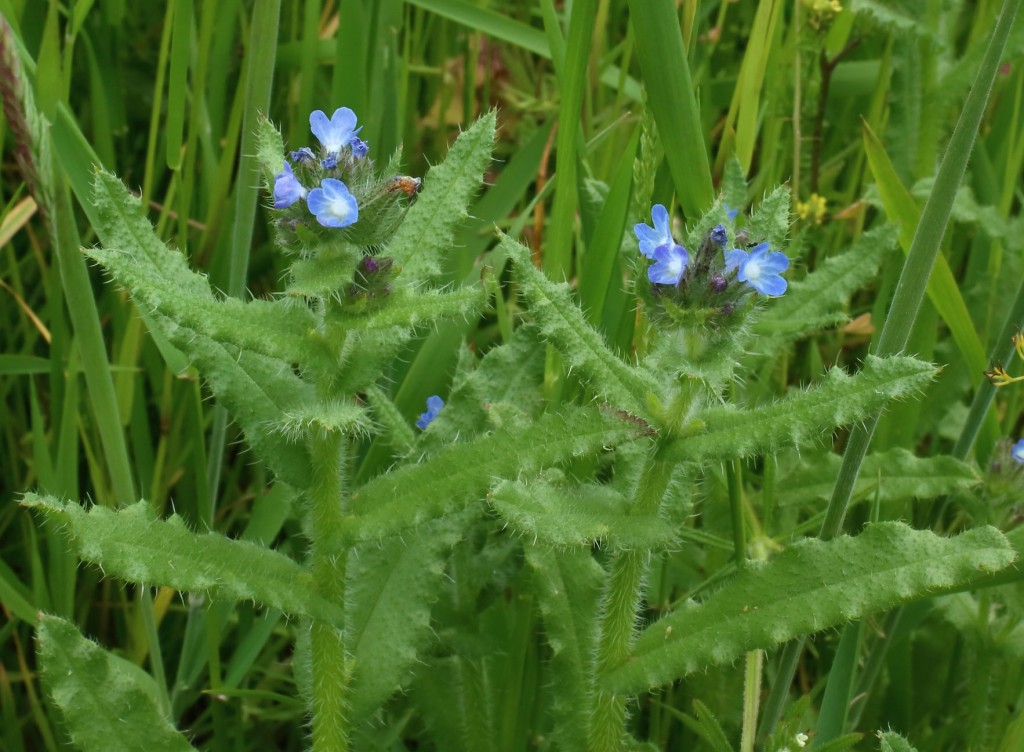
June 10:
A meeting of the Flora of Cumbria Recording Group to the Warcop area, in the upper Eden valley, on a warm and sunny day.
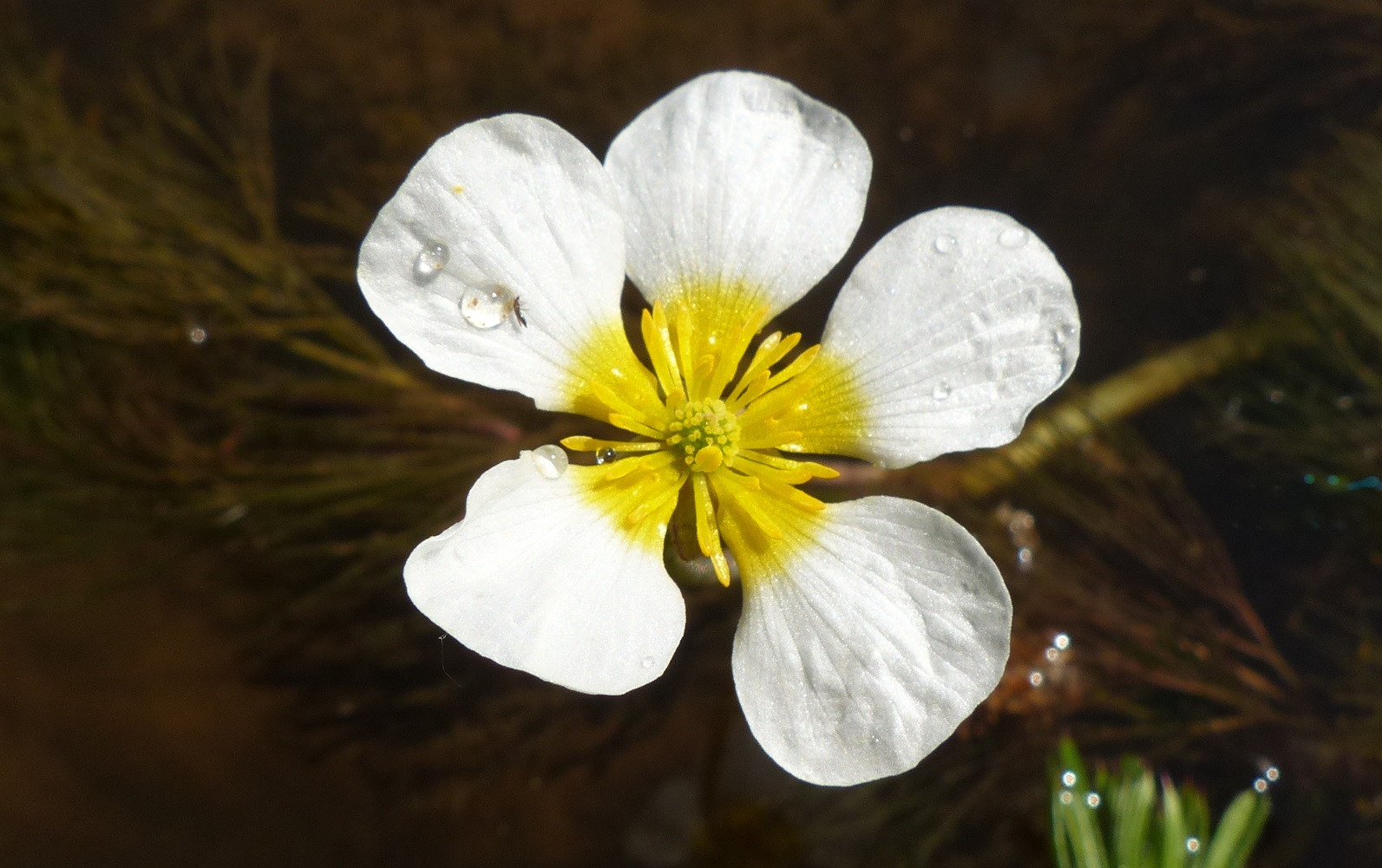
The eastern end of Sandford Mire was penetrated by one group. Some very depauperate Lesser Tussock-sedge ~ Carex diandra was located with other sedges. [JR]
June 6:
Mike Porter brought the participants of his ever-popular ‘Sedge Day’ to Dubwath Silver Meadows (as below) on the afternoon of 6th June, particularly to see the Water Sedge – although the wind was so fierce and cold that the various wattle-and-daub huts on the site were welcome retreats!
The morning was spent at the newly-announced Cumbria Wildlife trust reserve at Eycott Hill, west of Penrith, where twenty species of sedge were recorded, despite the cold wind. There is vast amounts of Bog-sedge ~ Carex limosa at this site, and many patches of Few-flowered Sedge ~ Carex pauciflora. [JR]
June 4:
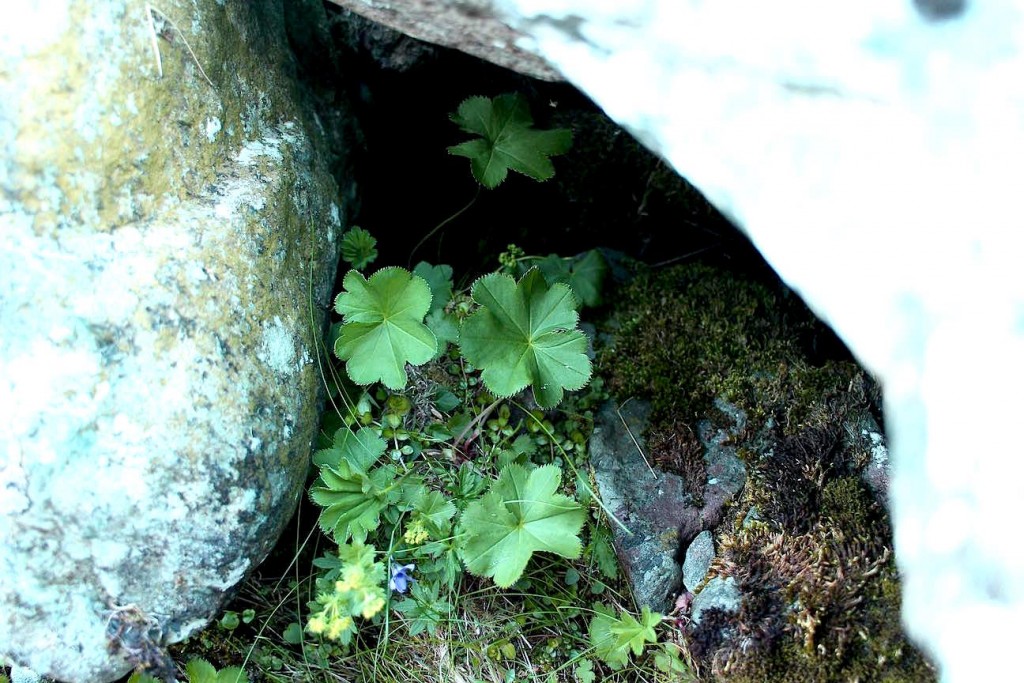
May 30:
A Carlisle Natural History Society outing to Dubwath Silver Meadows (by the Pheasant Inn, at the north end of Bassenthwaite).
The site is being managed to enhance its wildlife value and to protect the catchment’s water supply. New boardwalks and paths allow access to the various features of swamp, willow carr, open marsh, and hay-meadow.
Although the site has only a few species of sedges, we were surprised to see the Water Sedge ~ Carex aquatilis in several areas, including scattered all over the ‘Snipe Bog’ – the marsh occupying much of the northern half of the site. This local sedge of northern and western Britain is known locally by Bassenthwaite Water, and elsewhere, but may not have been recorded previously at the site. Another frequent sedge was Bladder Sedge ~ Carex vesicaria. [JR]
Please send your comments, suggestions, and any content for “News & Comment”, via the contact form below.
Back to:
© text & photographs. Copyright of photographs remains with the originator.
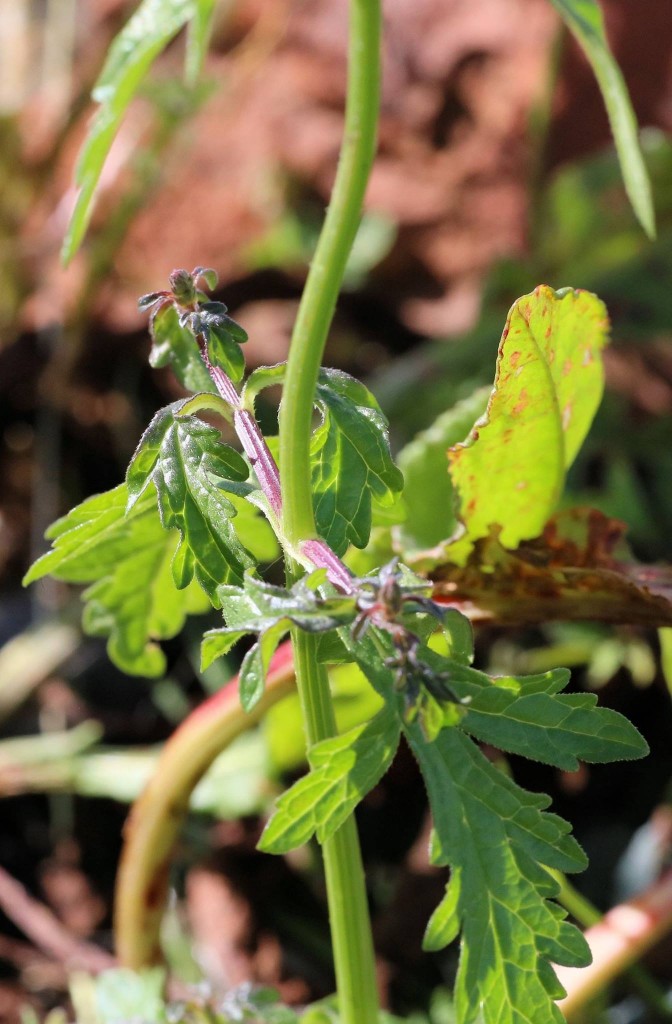
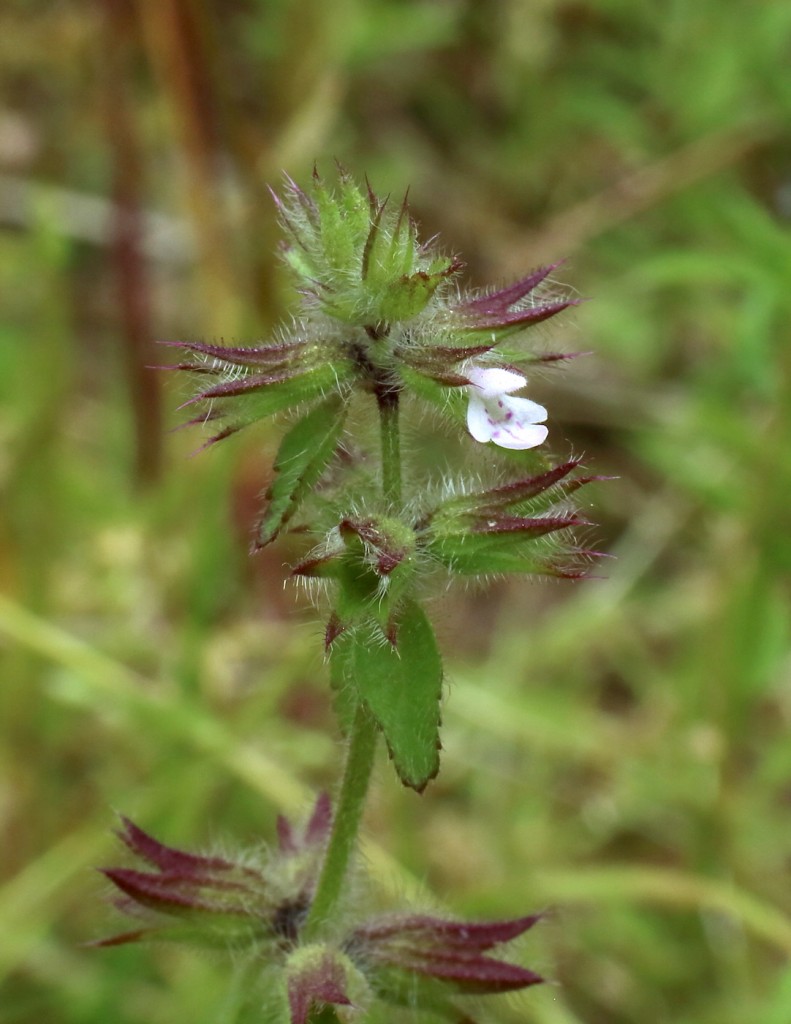
I am the CEO of Eadha Enterprises, an aspen charity based in Scotland. We hold the national aspen clone collection in our nursery and undertake reseach, trials, conservation and community outreach work focusing on aspen and other rare native species. Our work has included building up collections of regional populations of aspen to form genebanks. This has included Galloway and the Lake District national park area, the latter resulting in the planting of 30 clones in an arboretum in the South Lakes.
I am commencing a project shortly as part of the wider BOOM project in Cumbria.
https://m.morecambebay.org.uk/news/back-our-map-boom-flagship-wildlife-project-bay-gets-green-light
We will be working with Art-Gene in Barrow to develop an aspen project which will see this species reintroduced across the local landscape. Aspen propagation will be undertaken at the community garden at Art-Gene and hopefully sustain itself beyond the four year project.
The first action is to undertake a survey of the Barrow area to identify any wild native aspen clones which we could target for a workshop and for harvesting of root cuttings for collection. I will be aiming to undertake this in Early-mid Jan. I am therefore contacting all the various sources of botanical data to obtain as many aspen records as possible for this area – Furness Peninsula.
I have already received records from VC69/70 from Phil Brown however there are few records for this particular area and few are very localised.
Anyone’s help would be much appreciated.
Many thanks
Peter Livingstone
I just wanted to thank you for your site.
I was trying to identify a very common wild flower that is growing near Keswick but despite quite a while searching on the internet, I was drawing a blank. Then finally, via a google search where I must have put in just the right parameters, I came across a picture from one of your webpages: http://www.cumbriabotany.co.uk/wordpress/wp-content/uploads/2016/07/IMG_9248sm.jpg
So there it was – Enchanter’s Nightingale. This picture made it absolutely clear that I had found what I was looking for. I hadn’t seen anything else that showed the three separate stalks that the flowers grow from.
So thank you for the website, and to whoever took that very clear photo.
And good to know this resource exists for my future kindergarten-level plant identification quests!
All the best
Mary Gillespie
Thank you for that, Mary – it’s so nice to hear when people are finding the site useful! JR